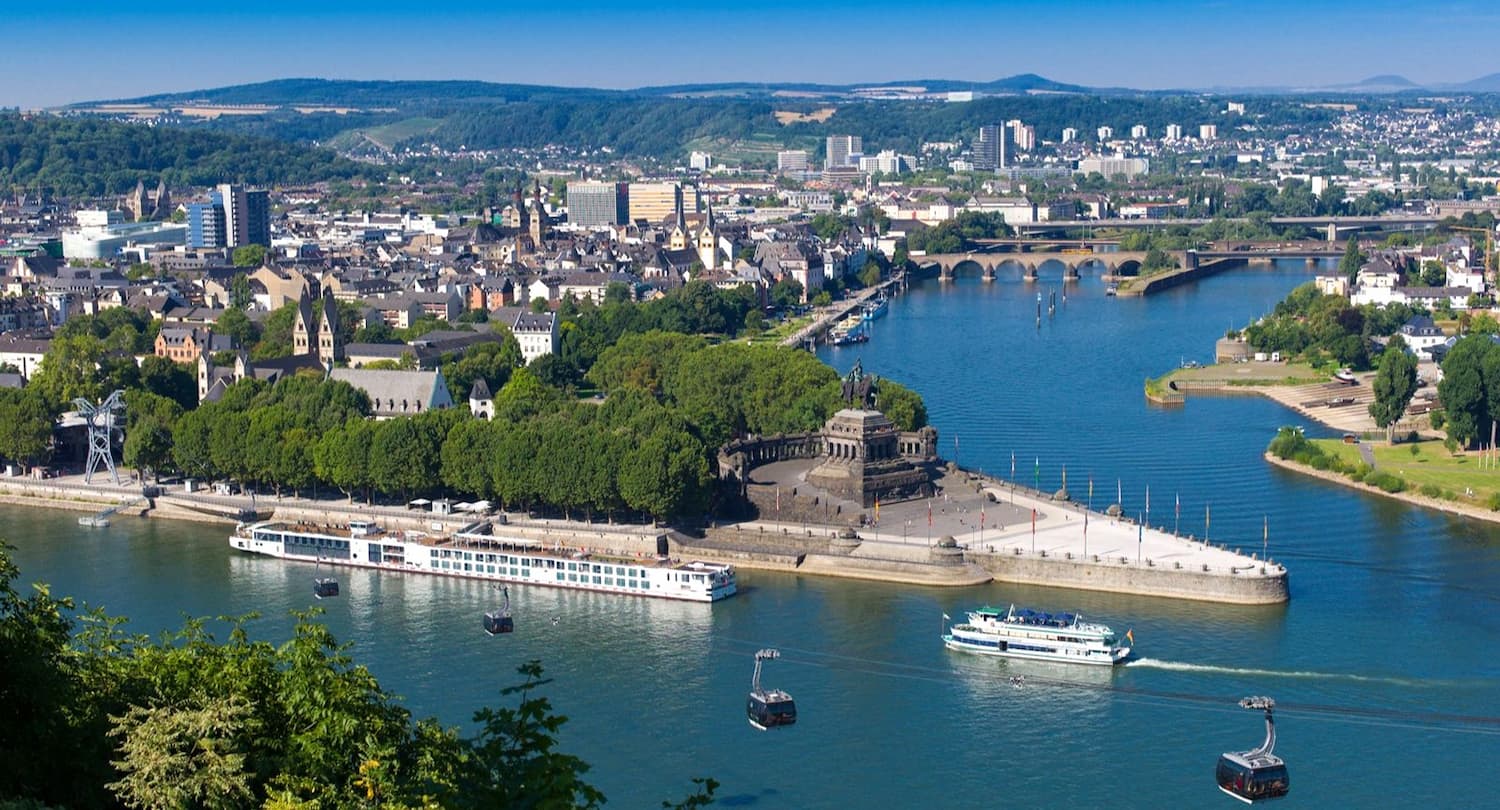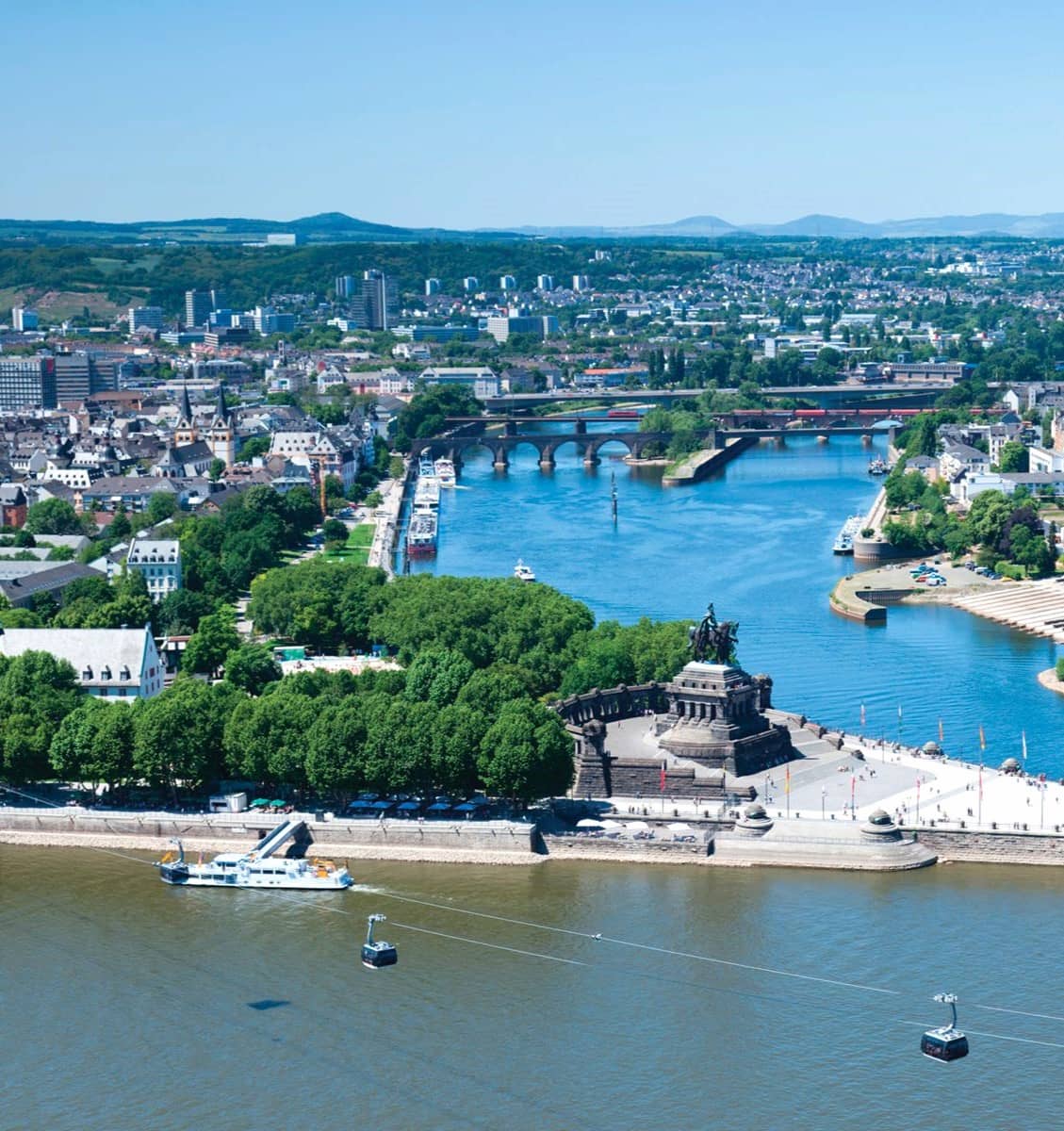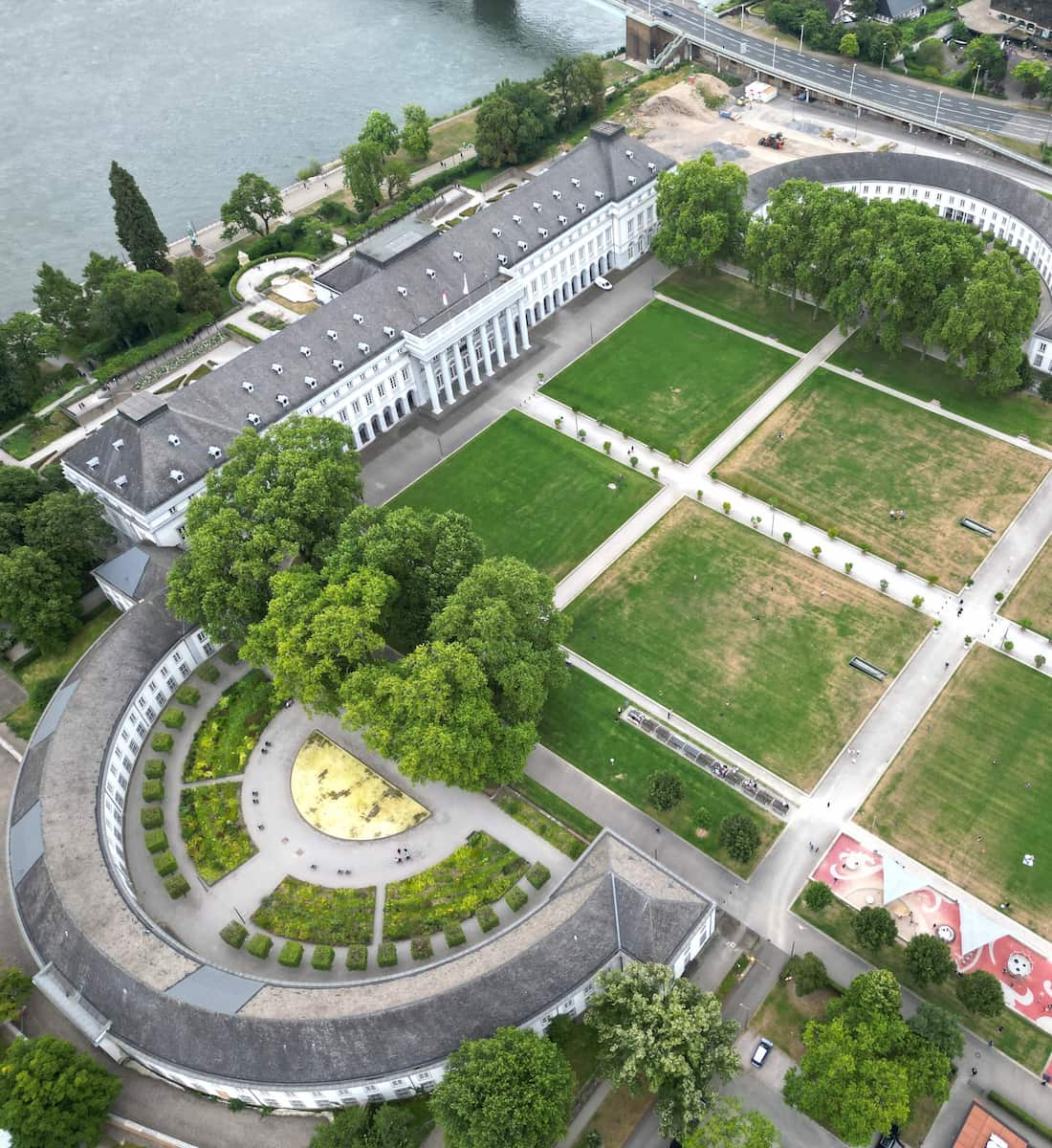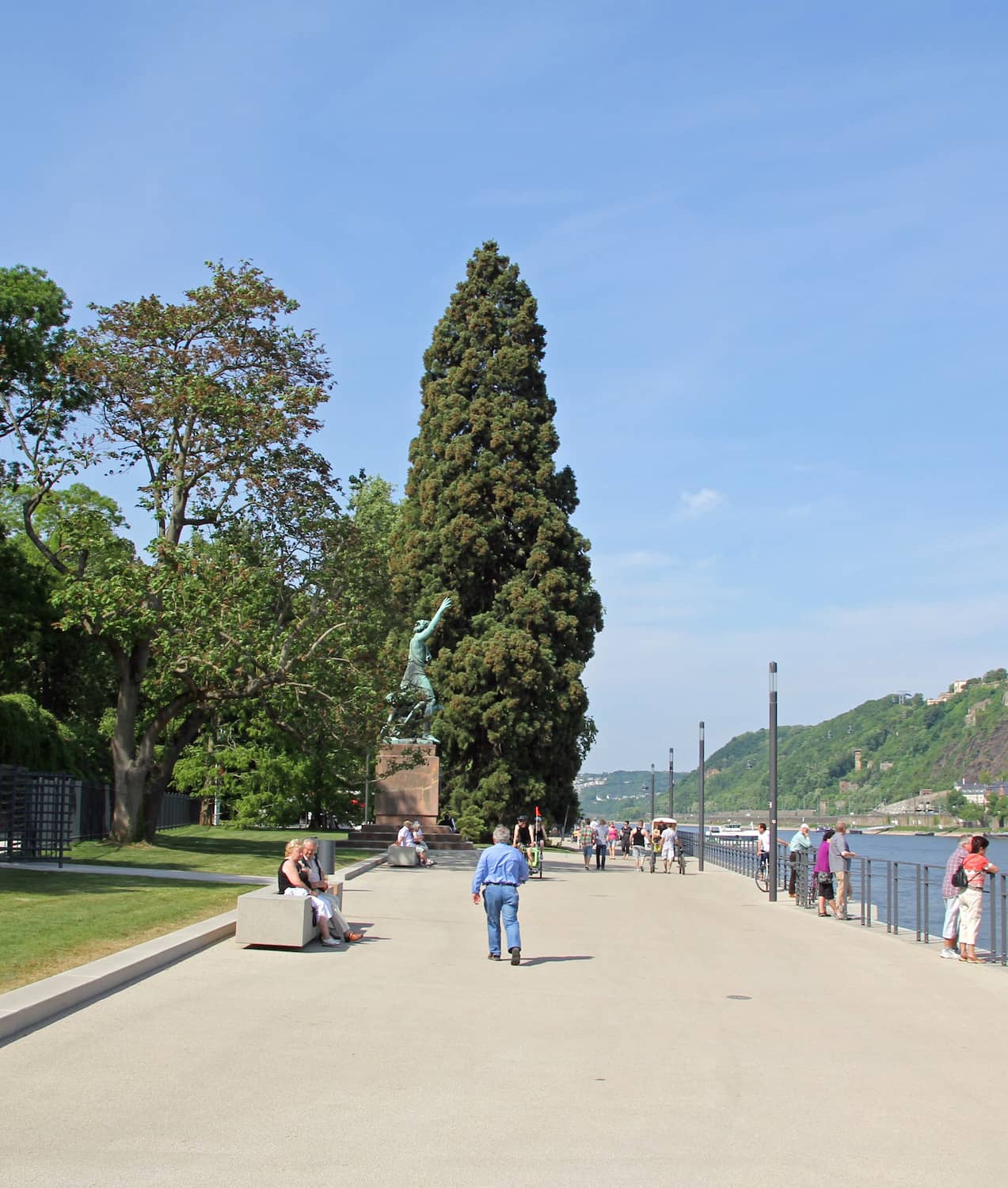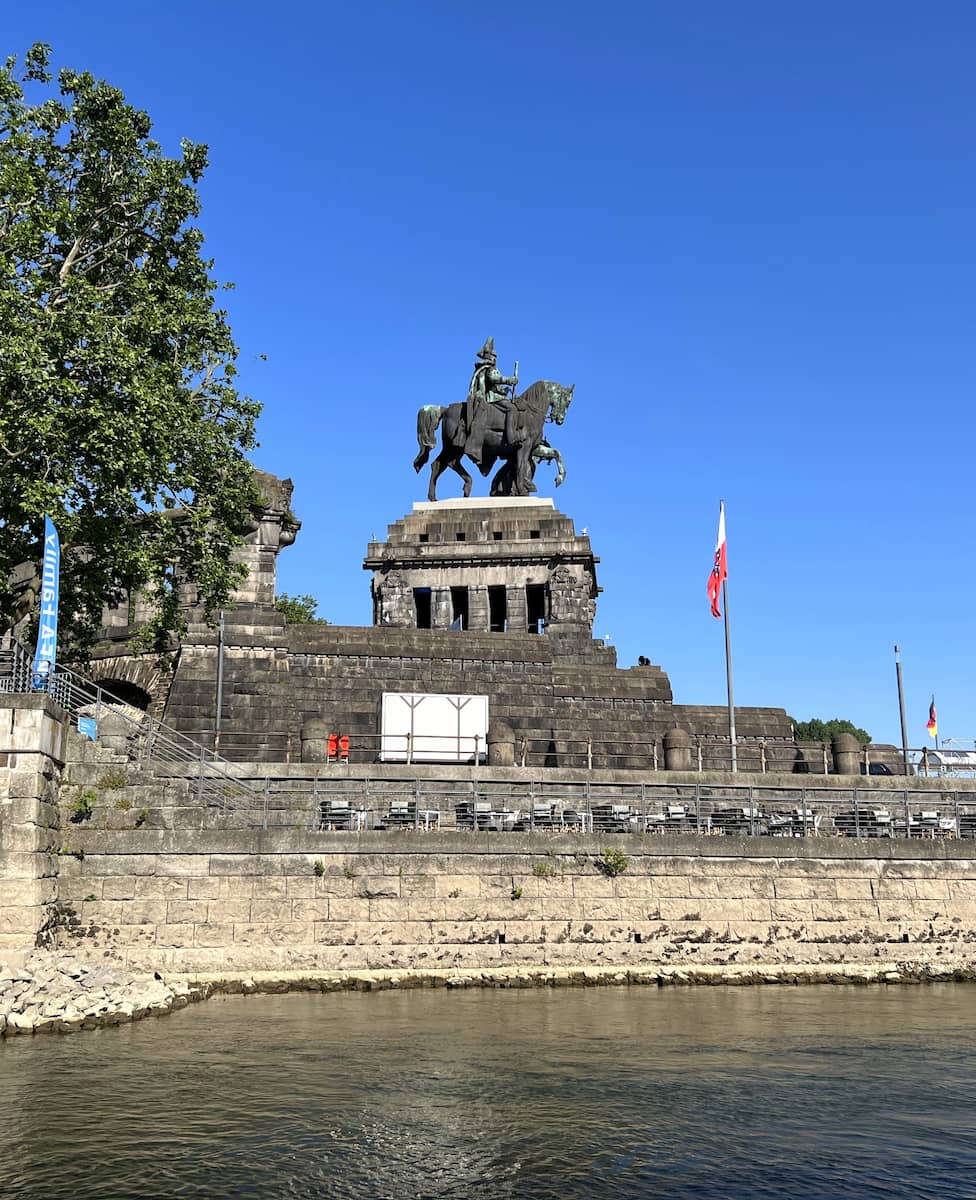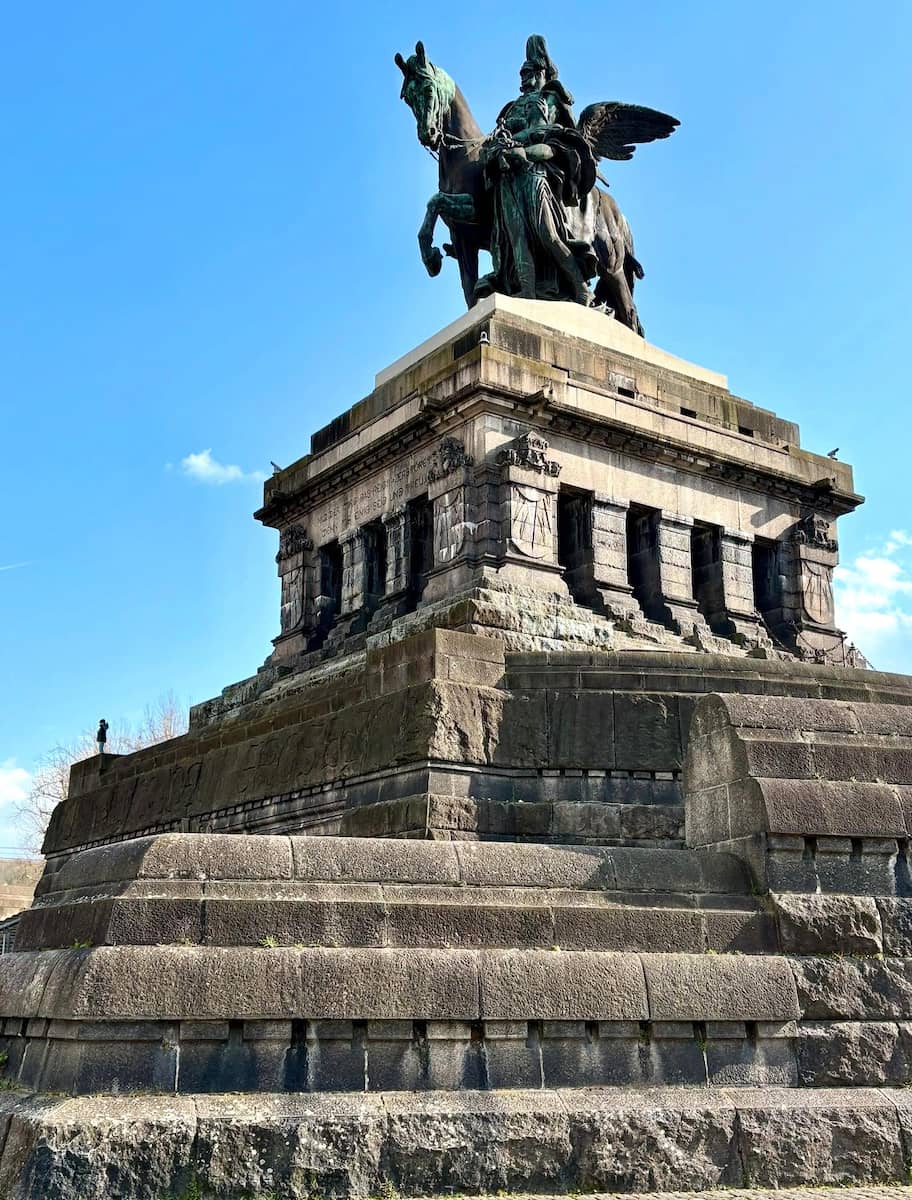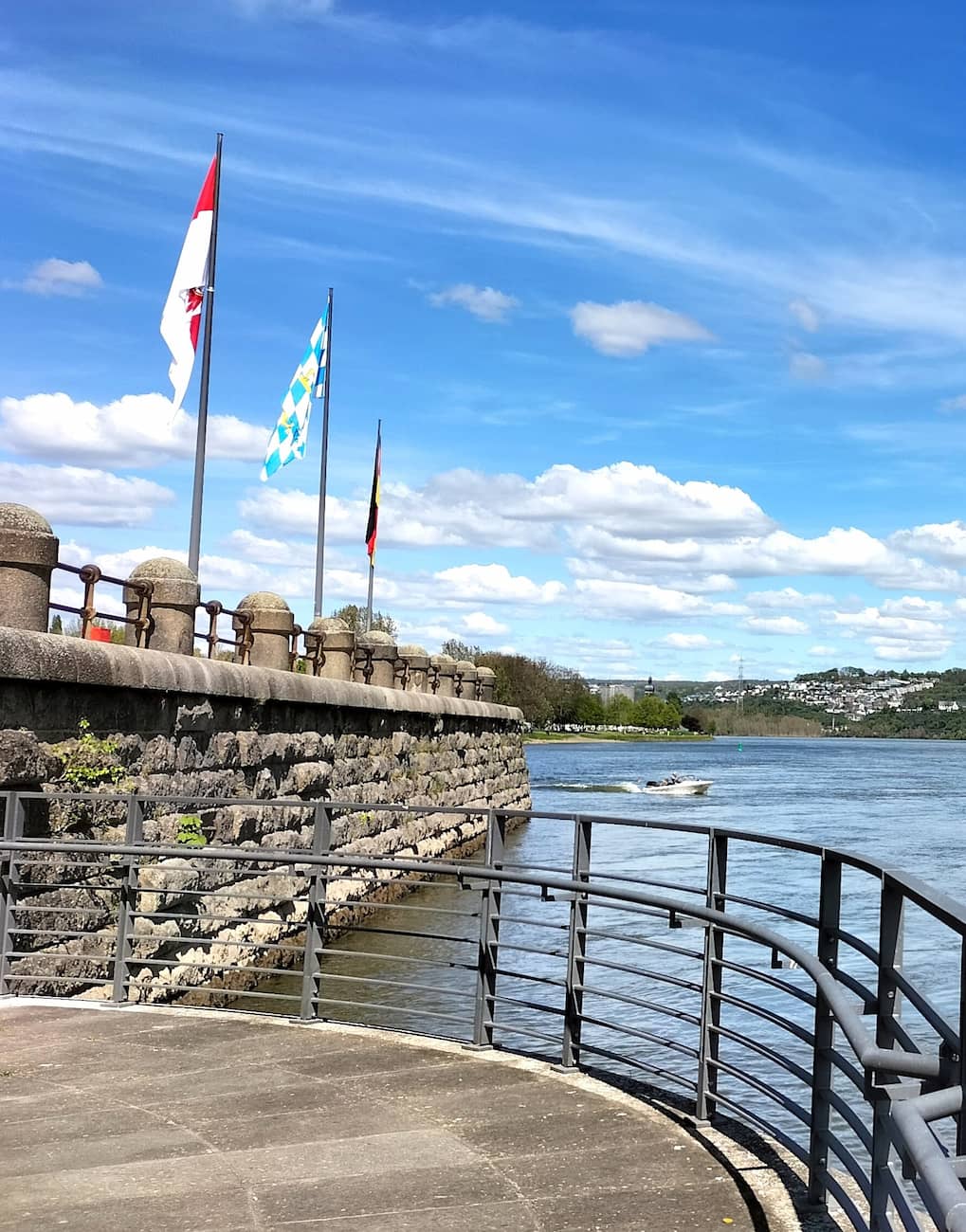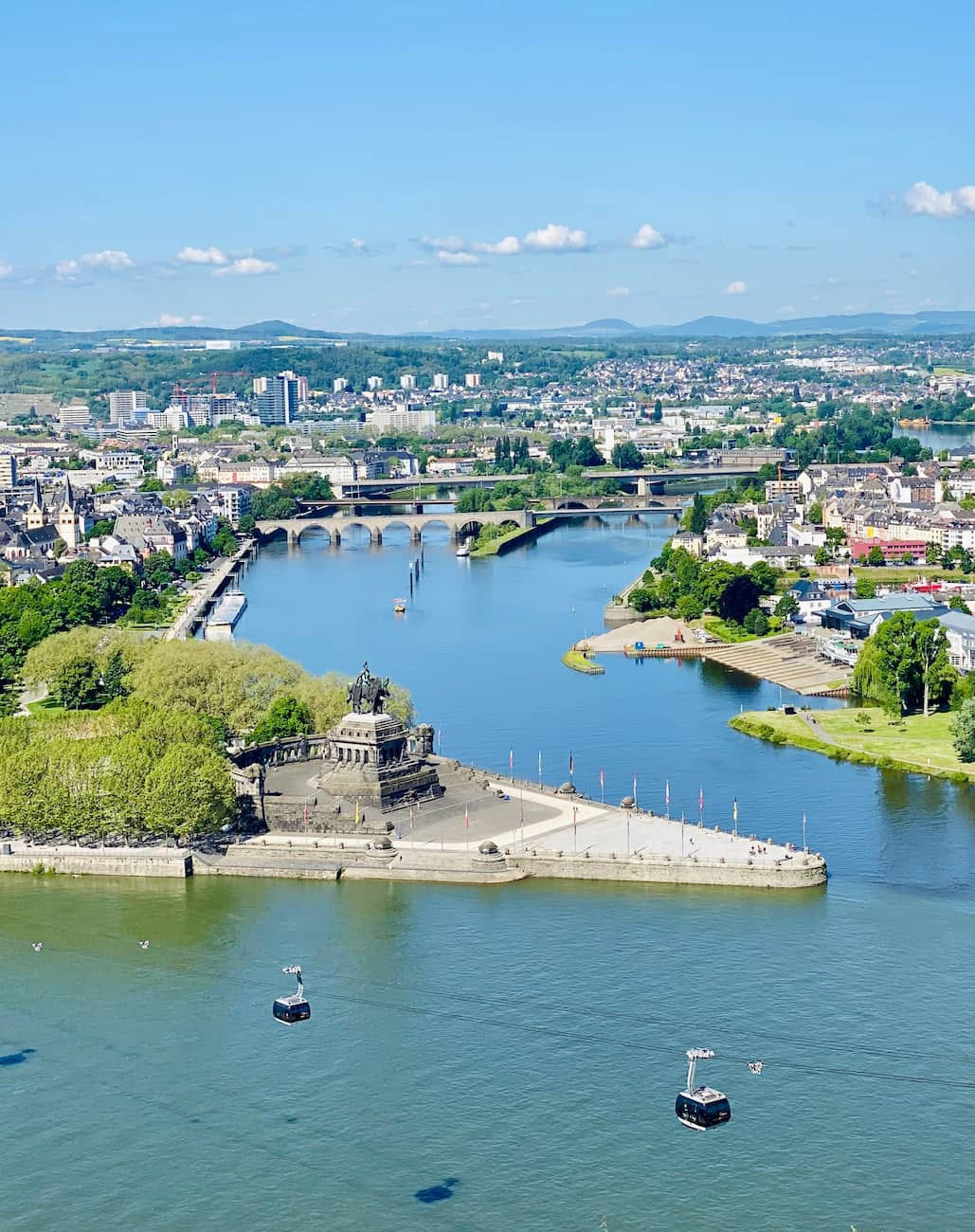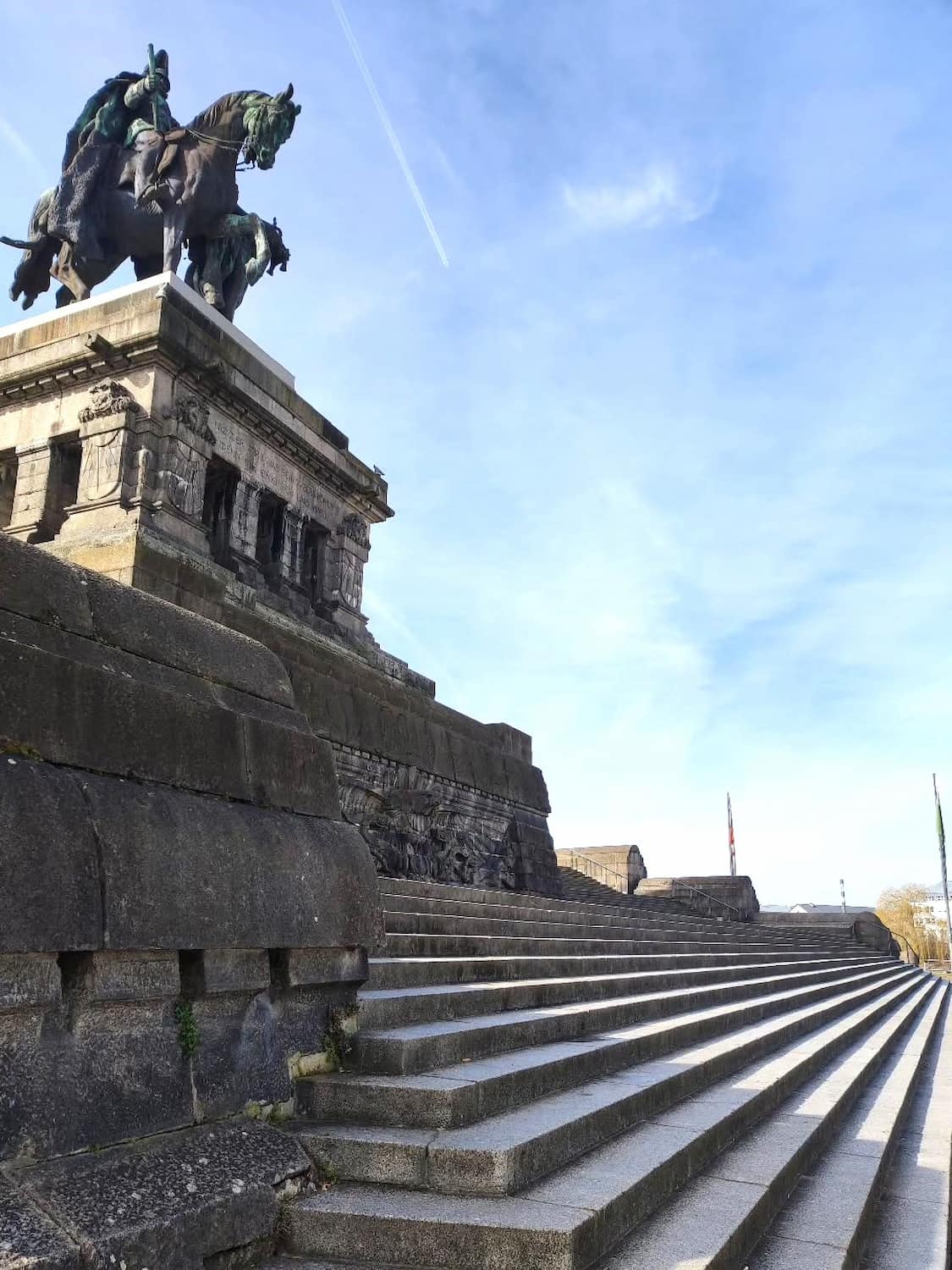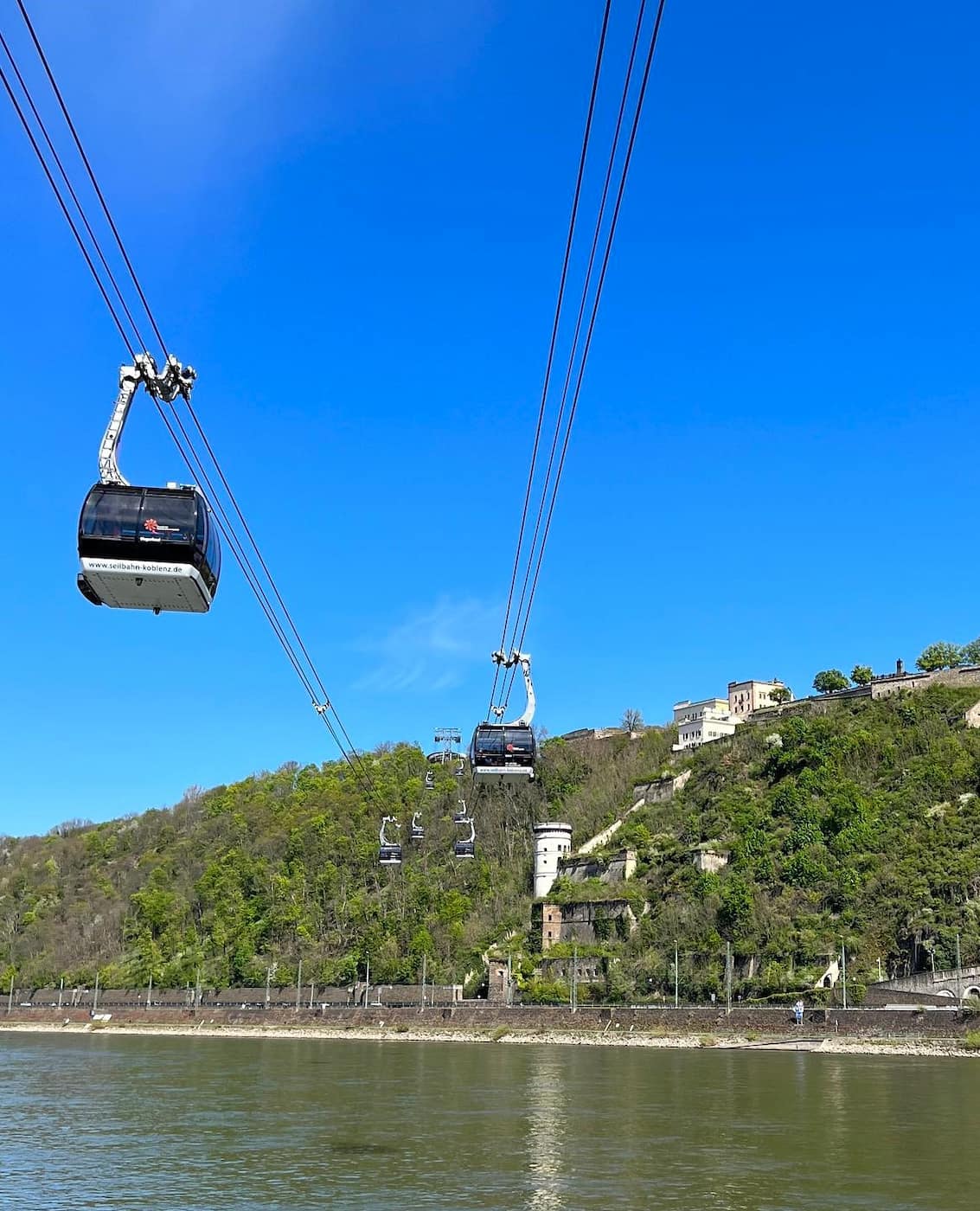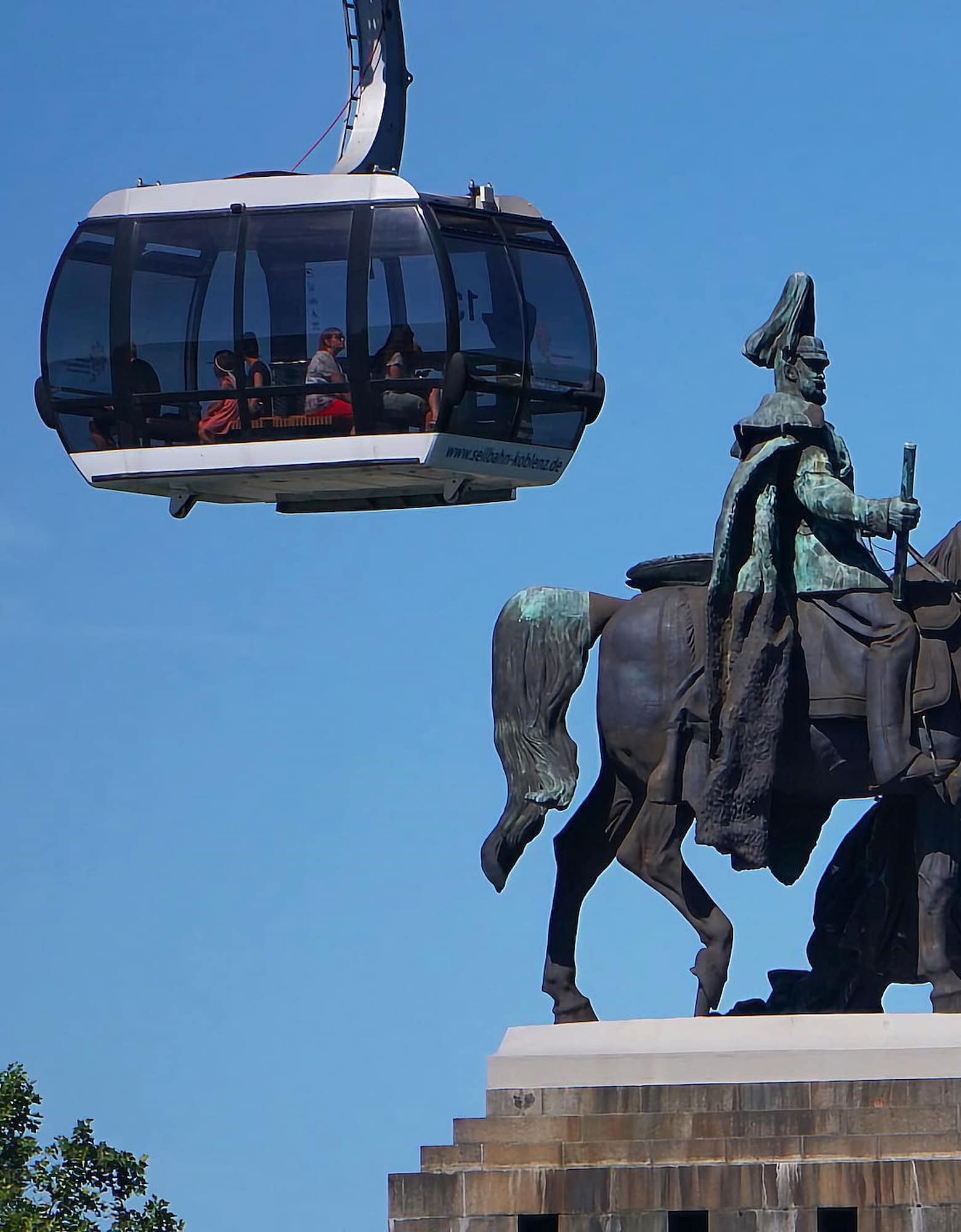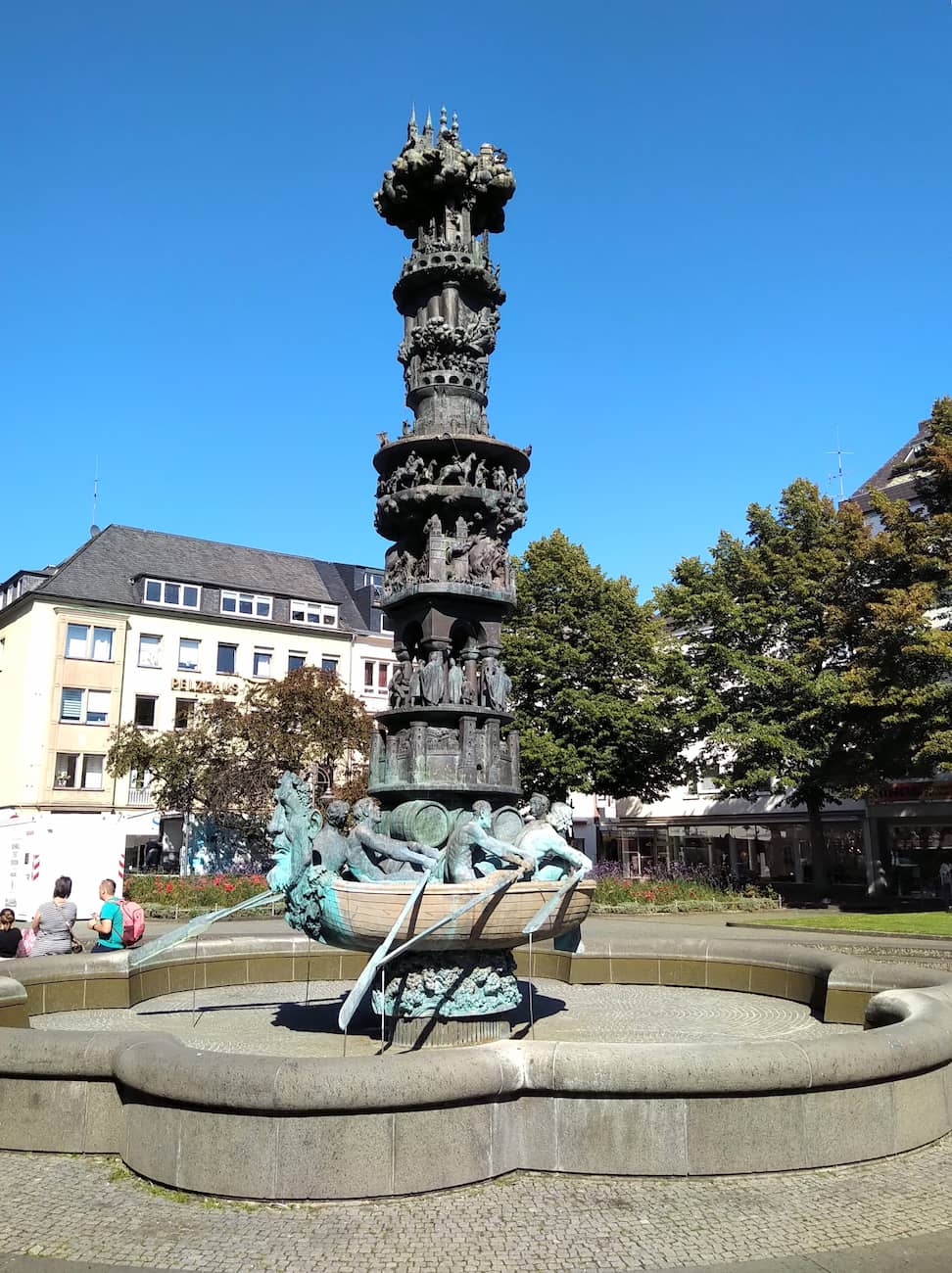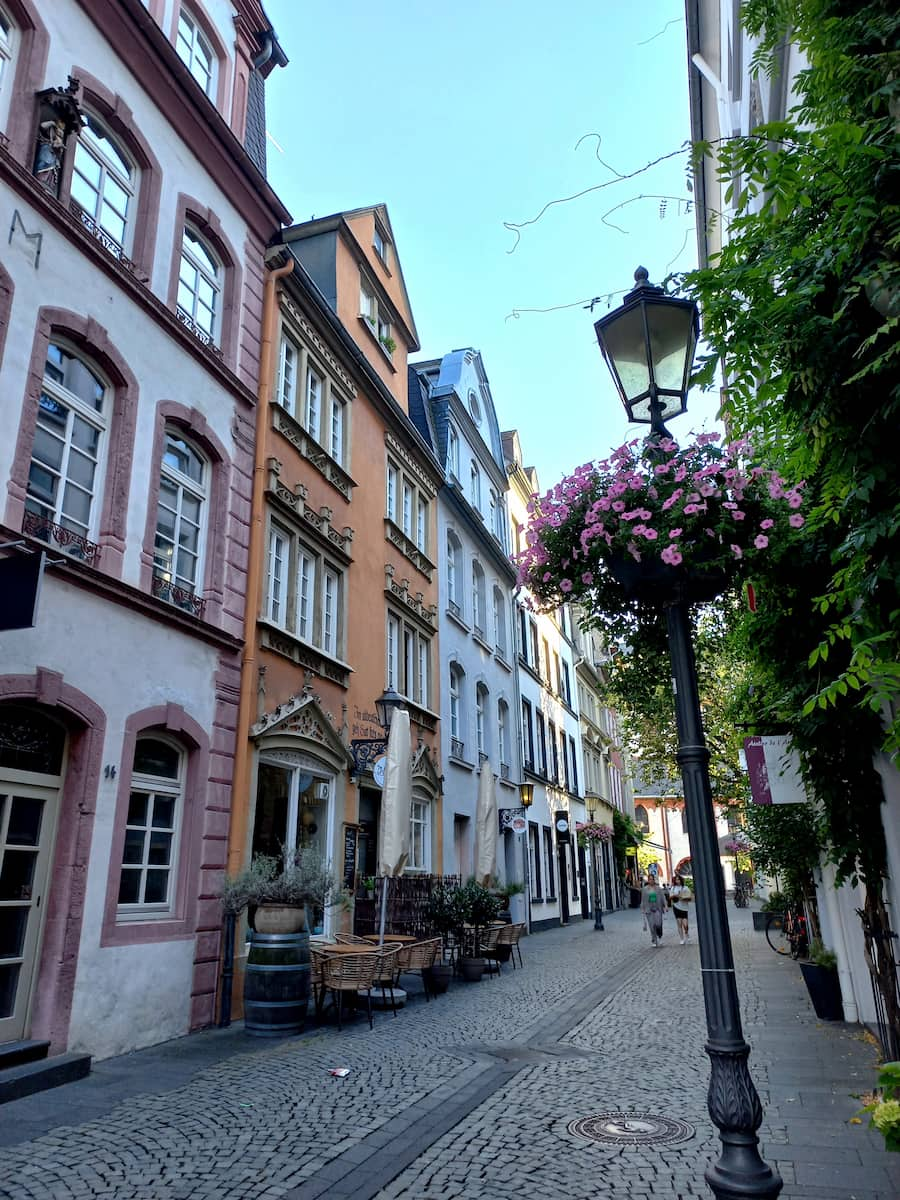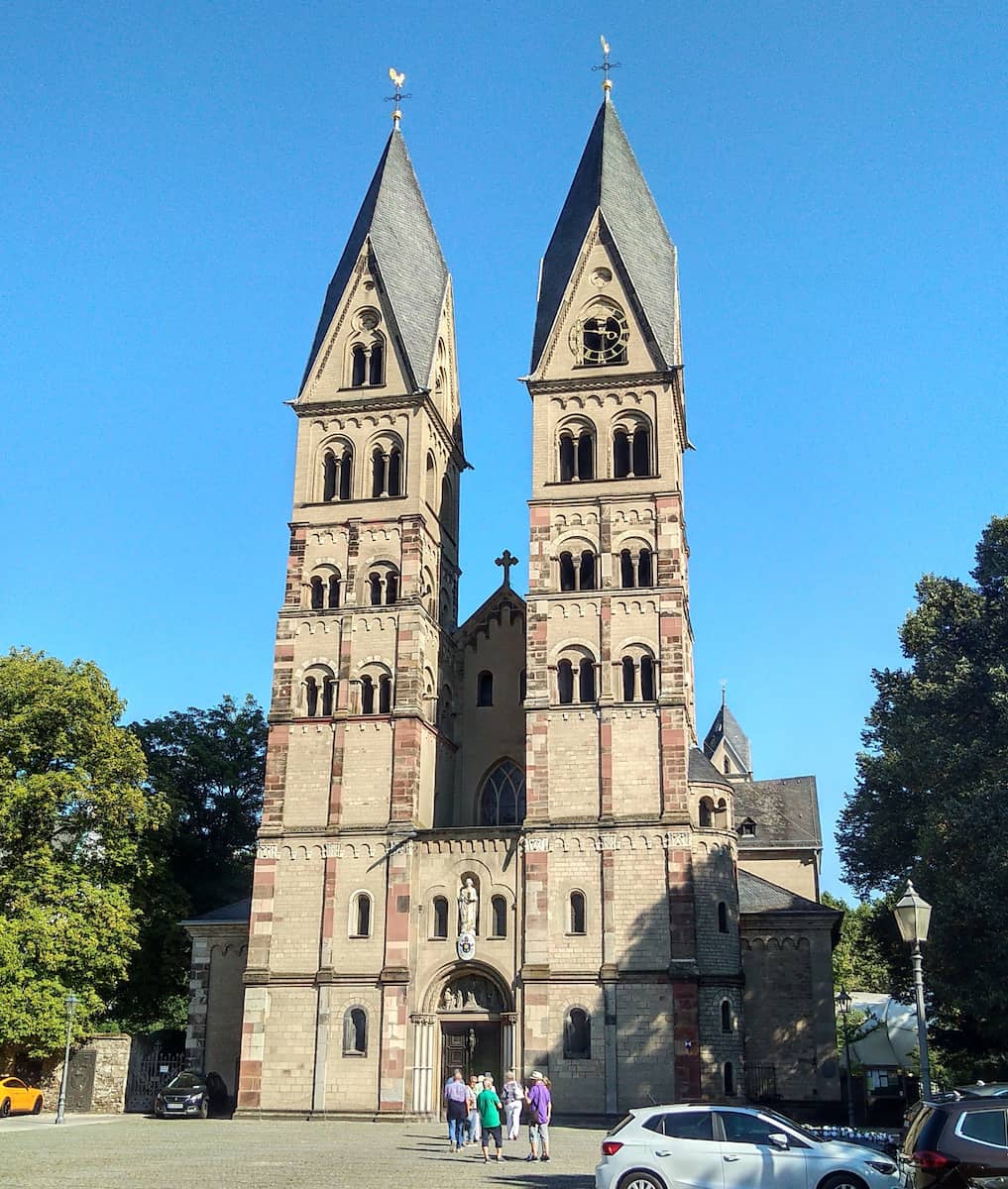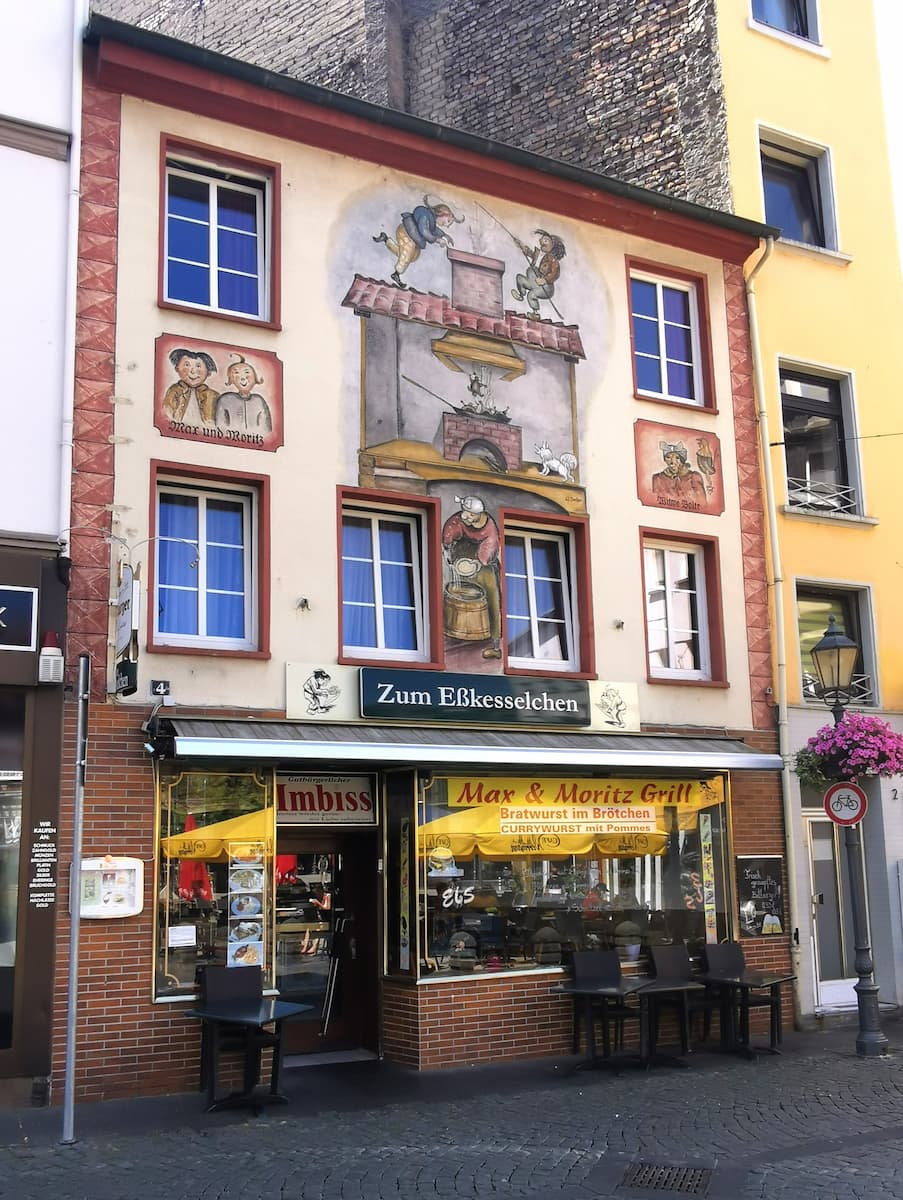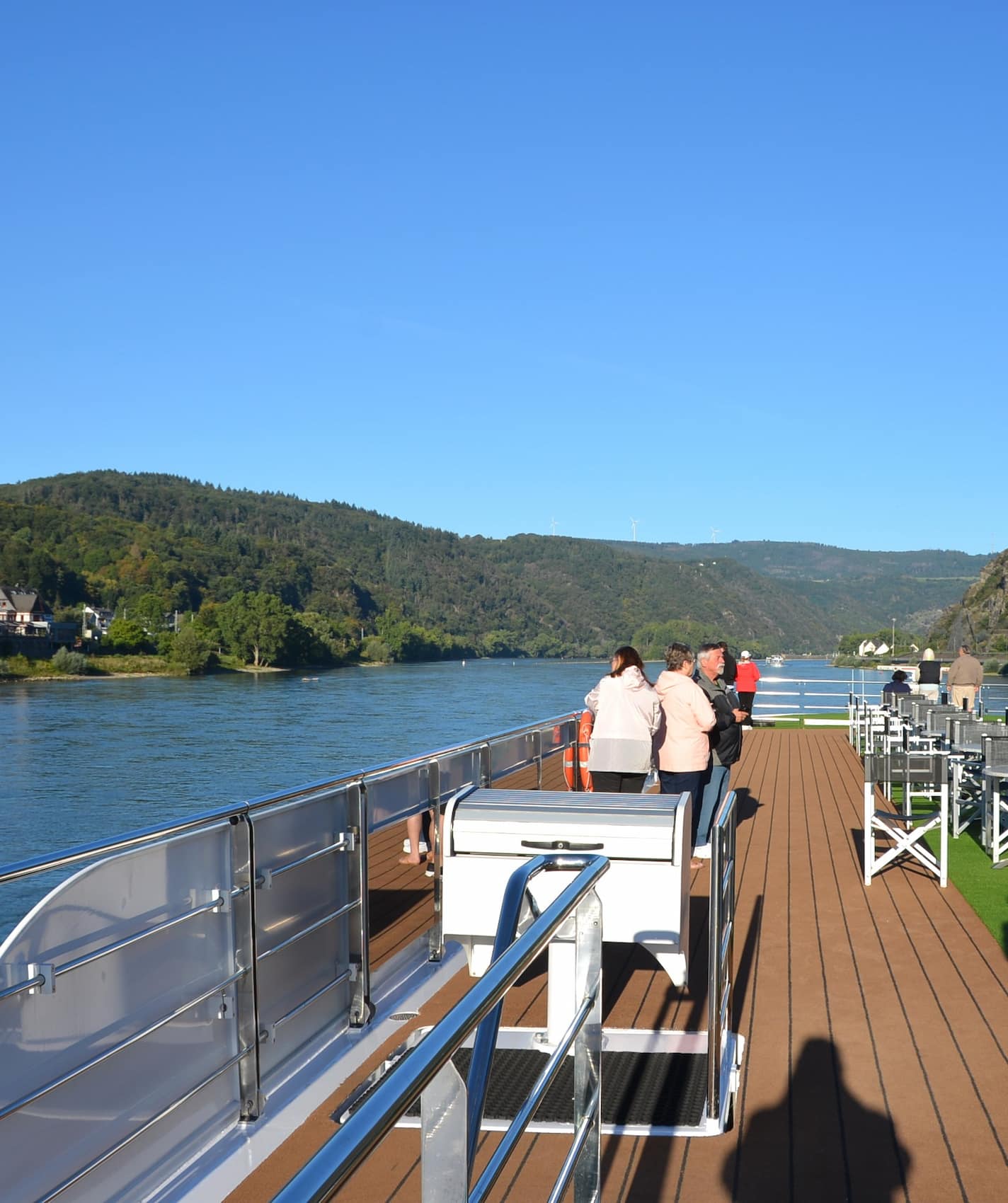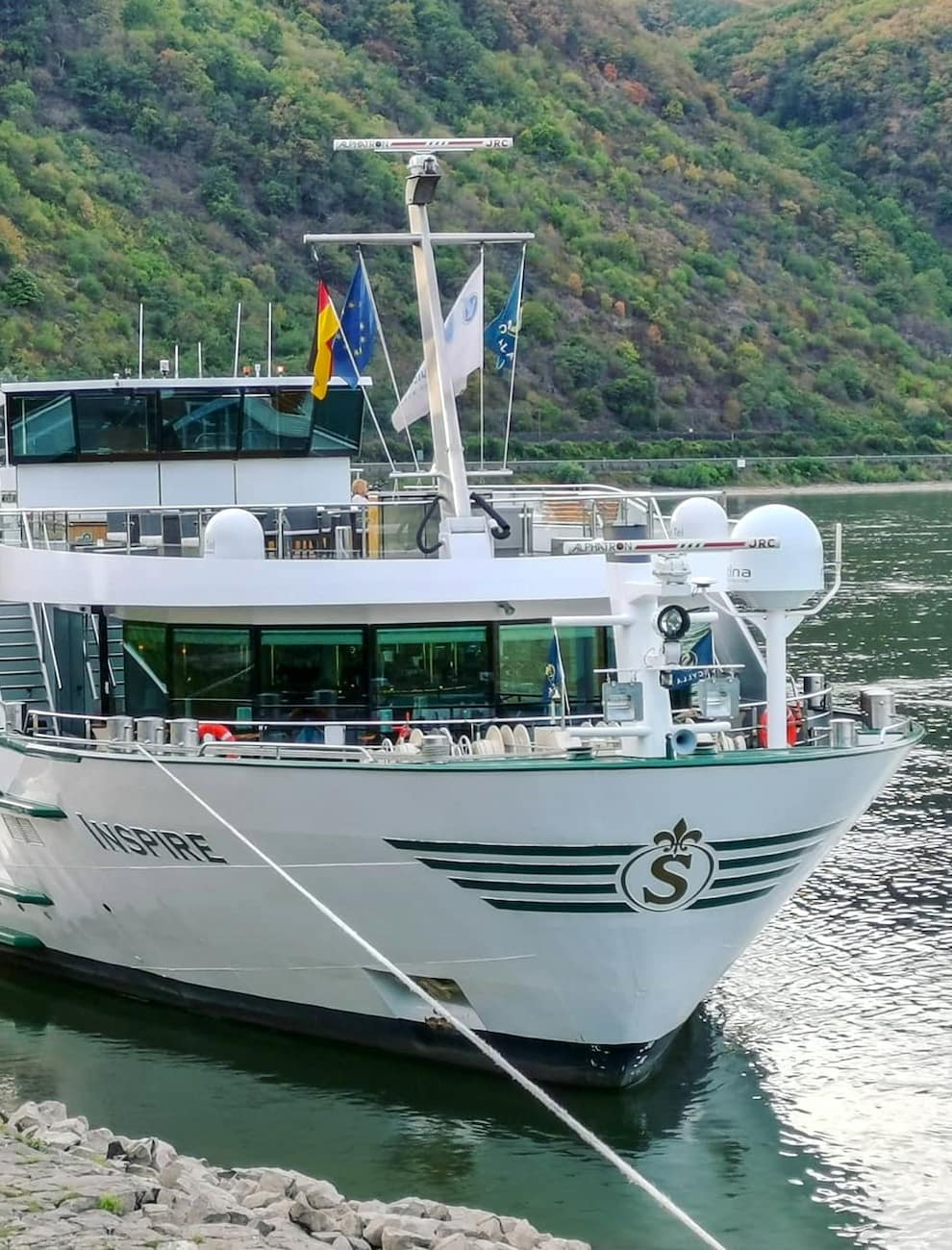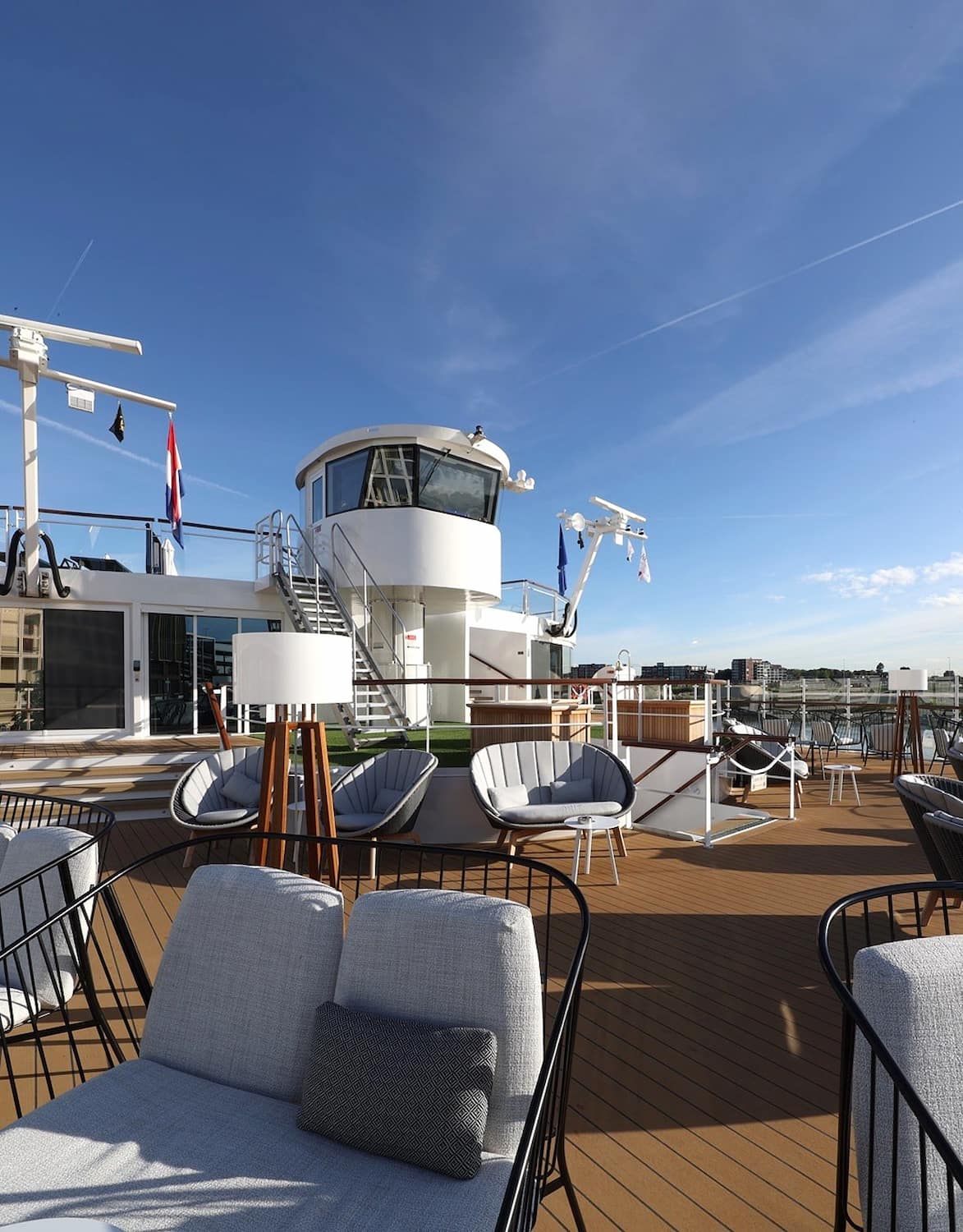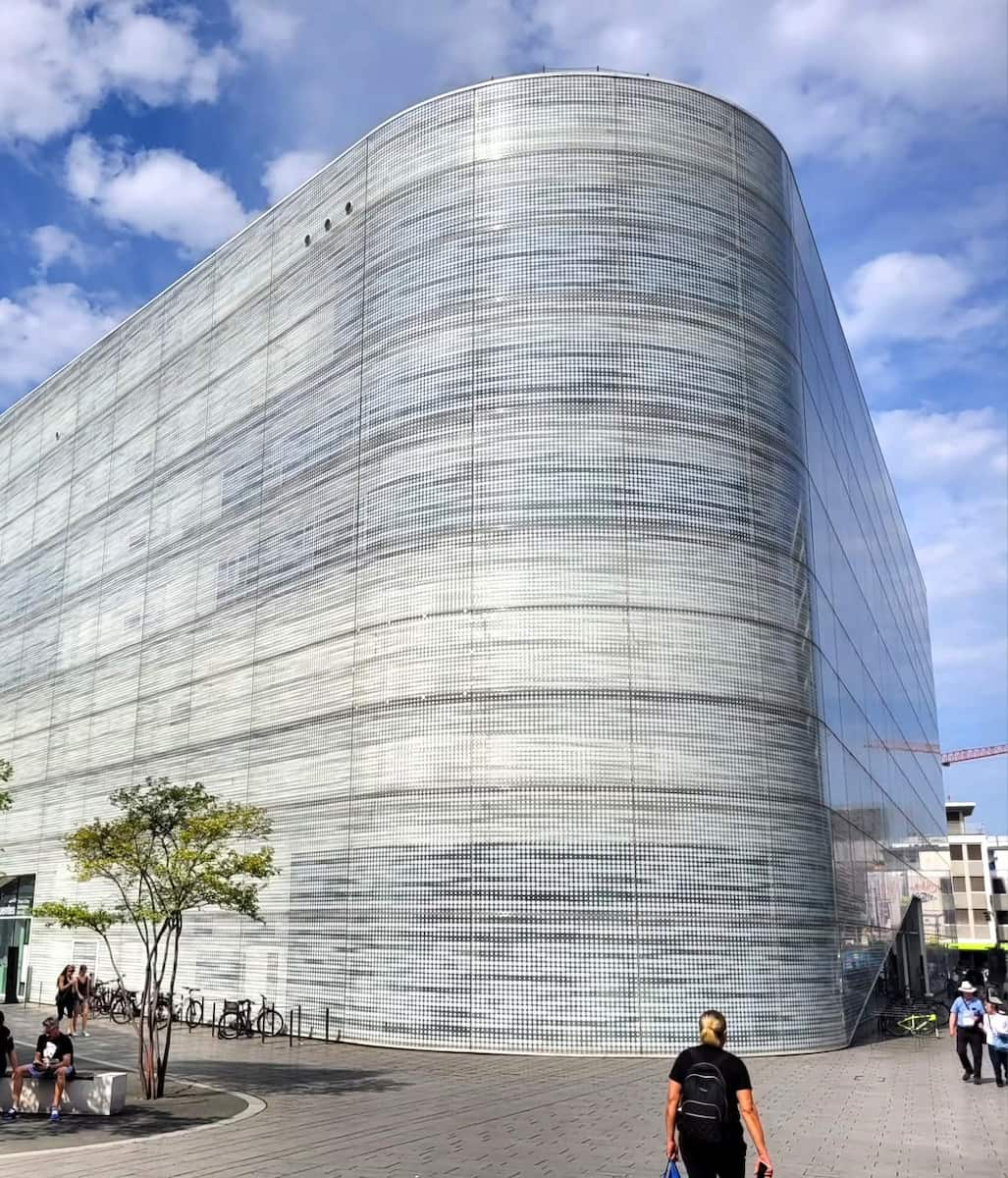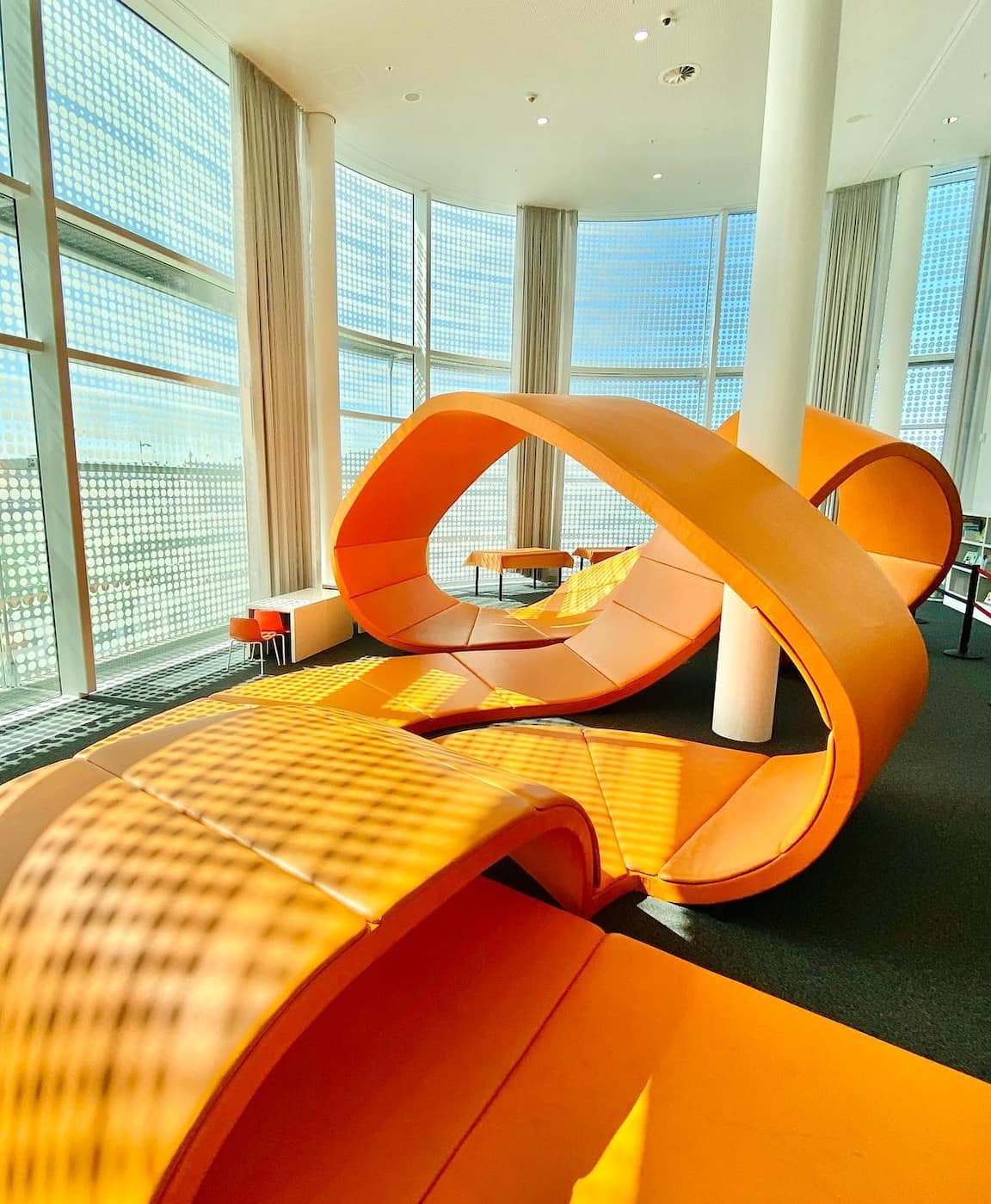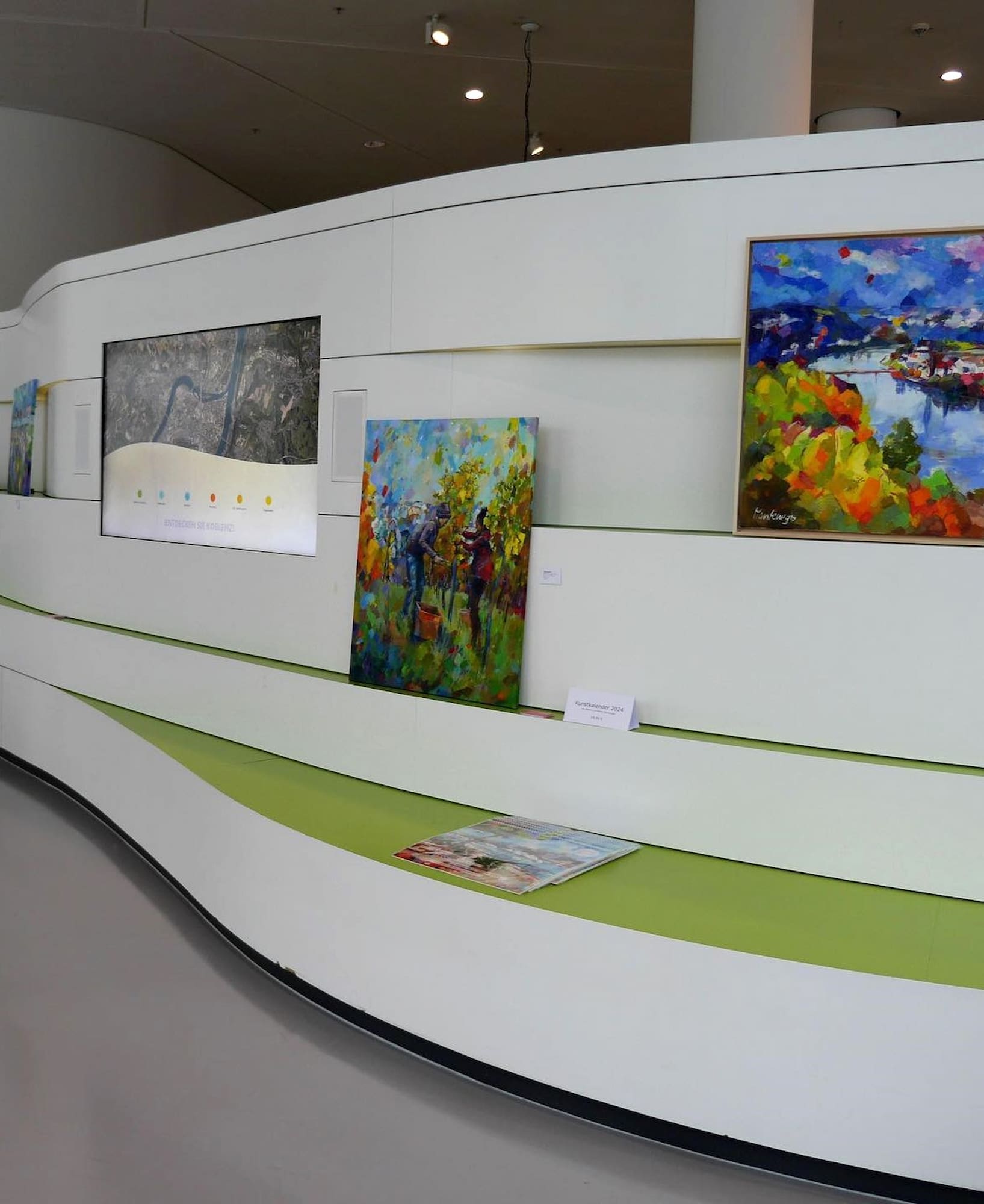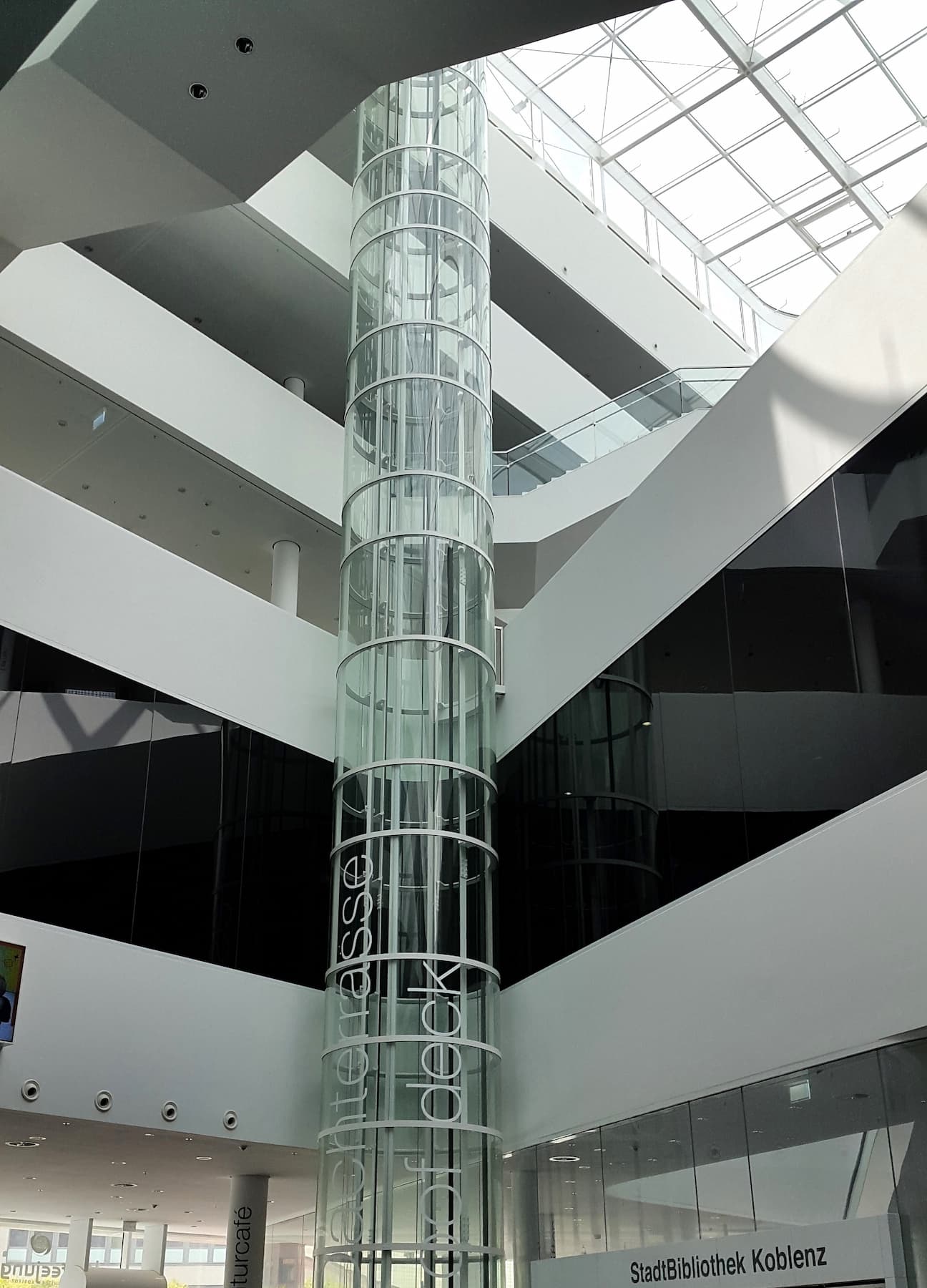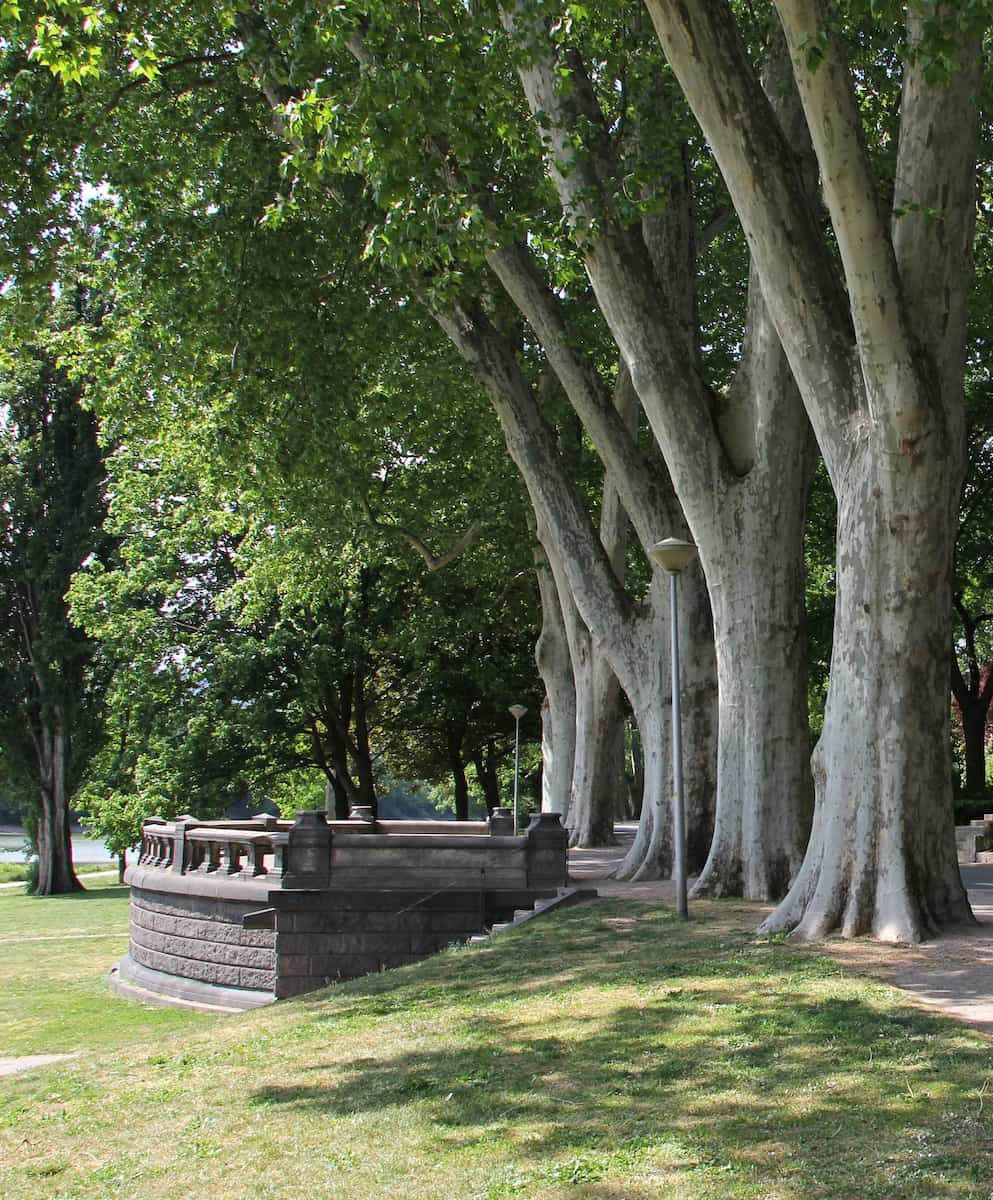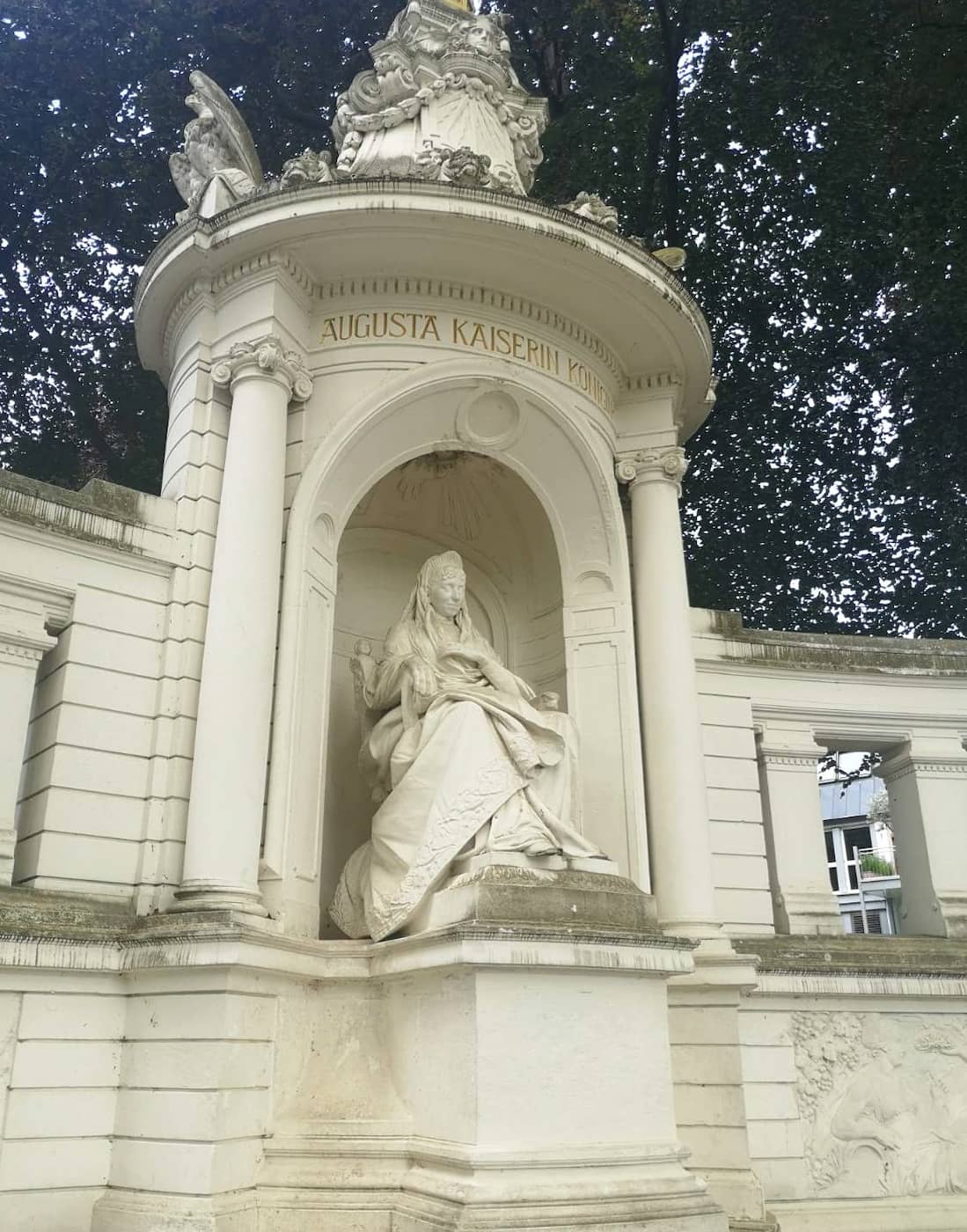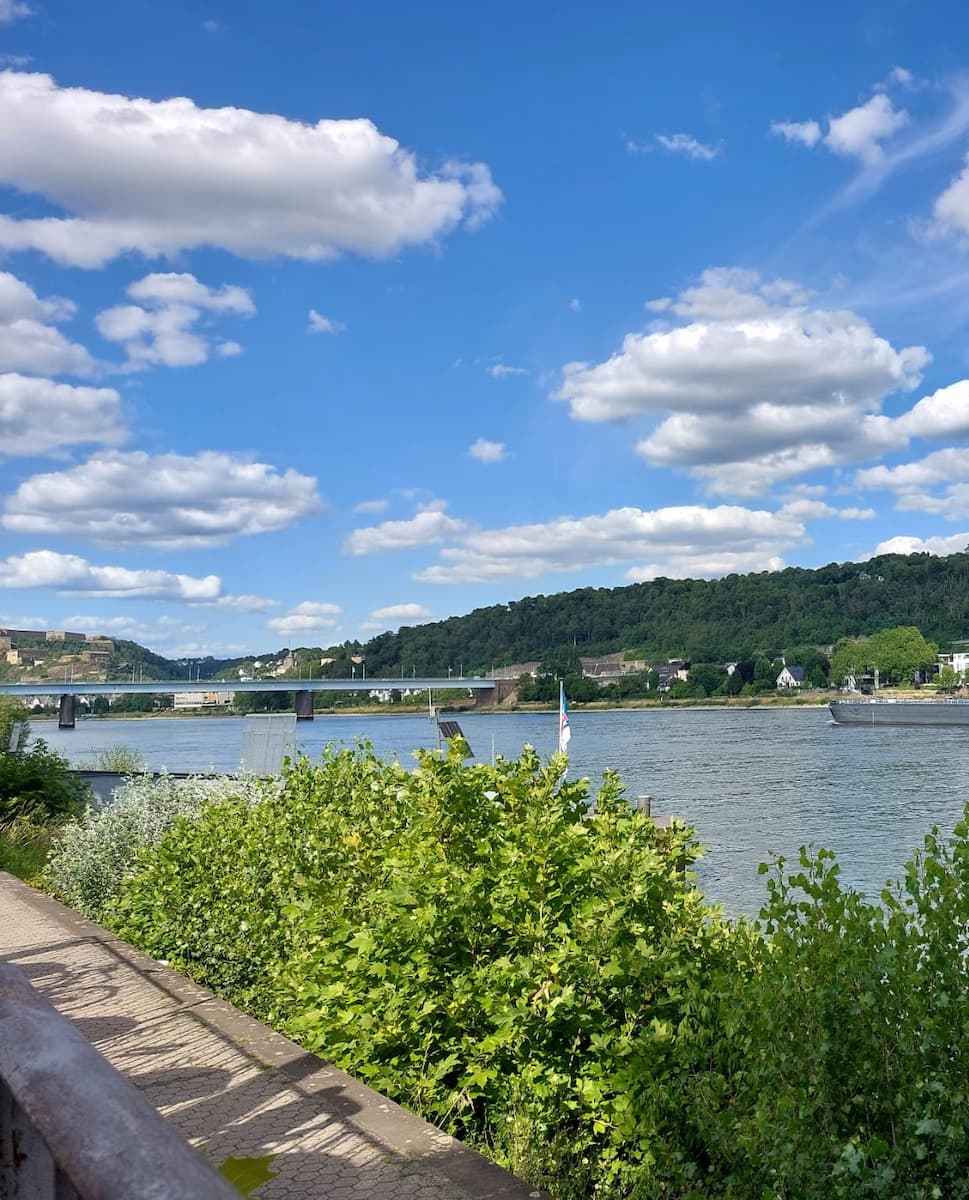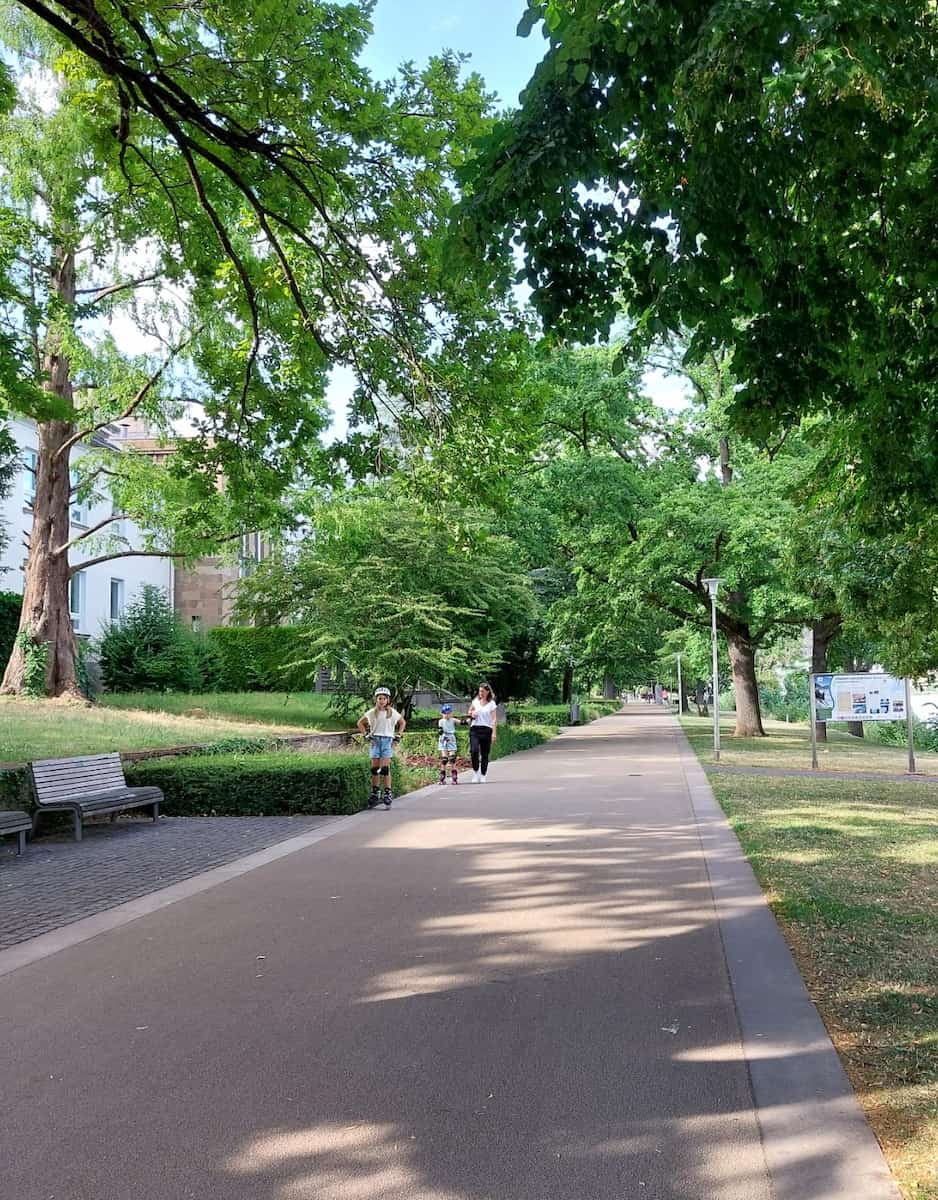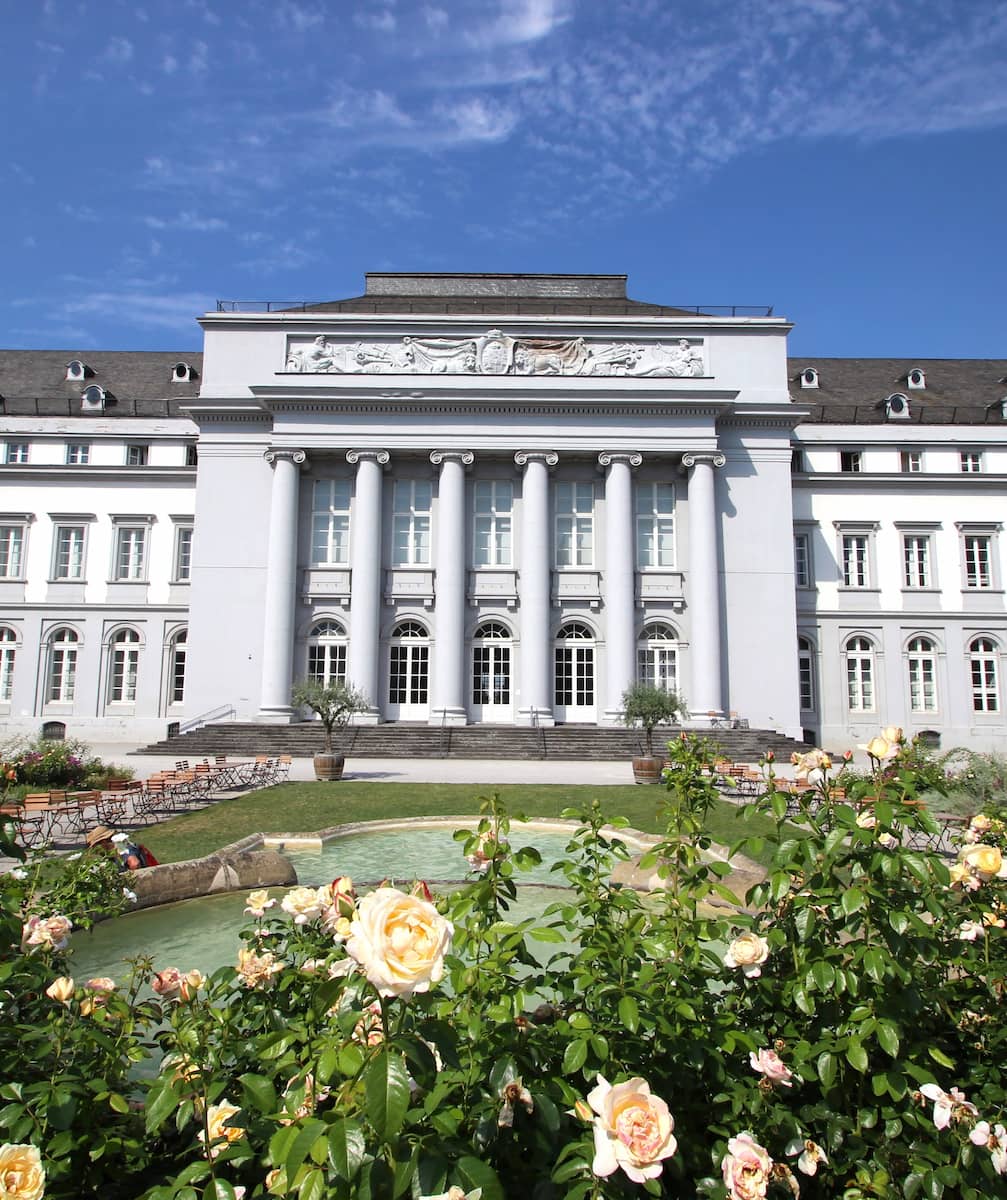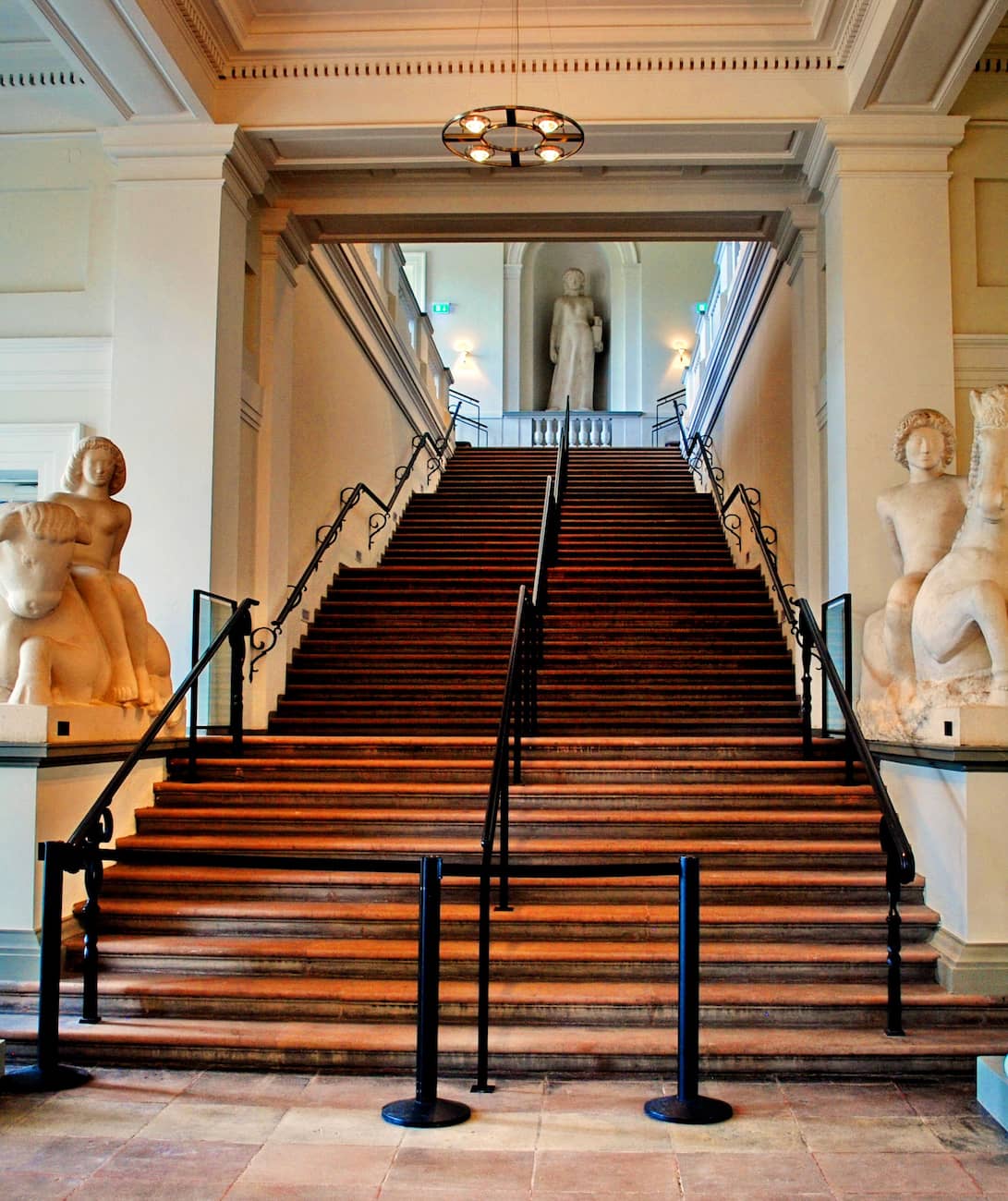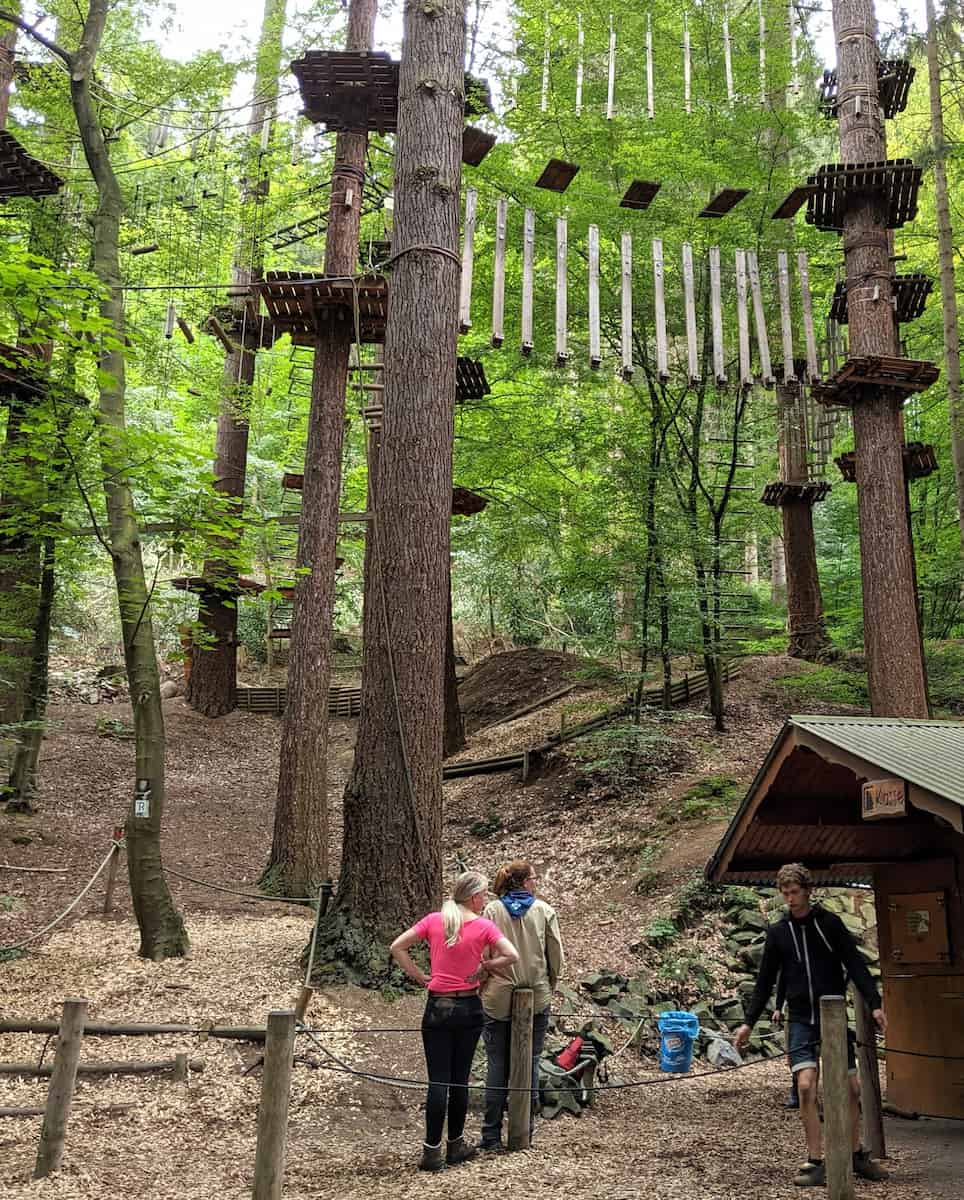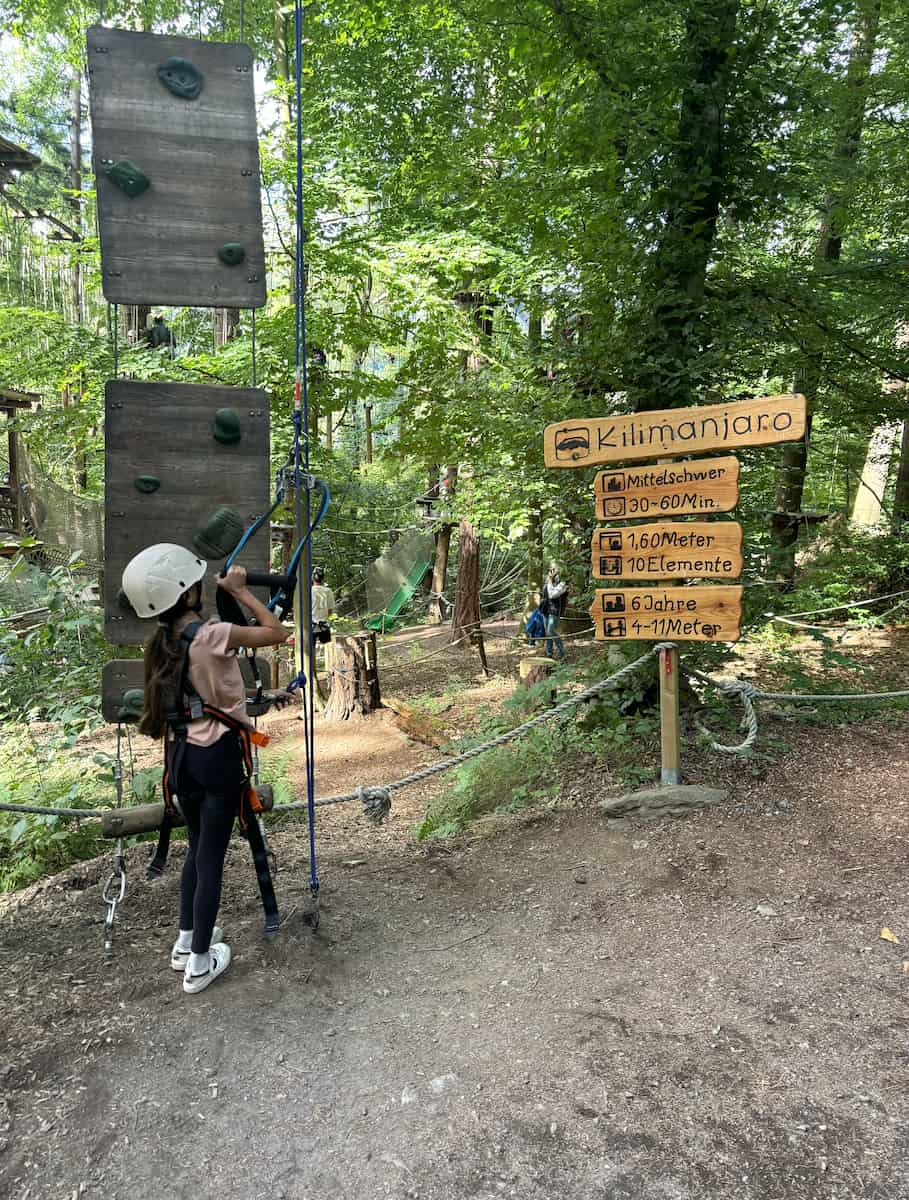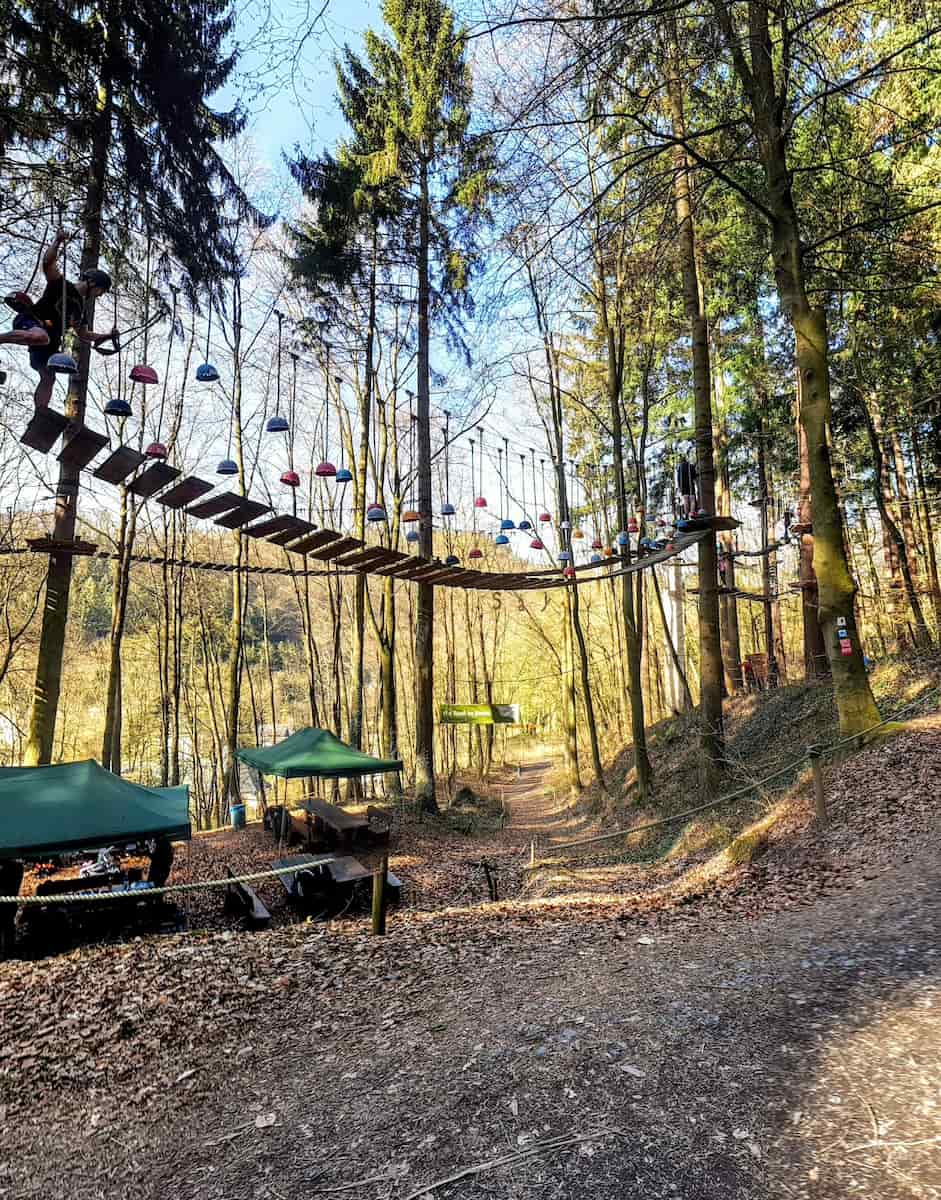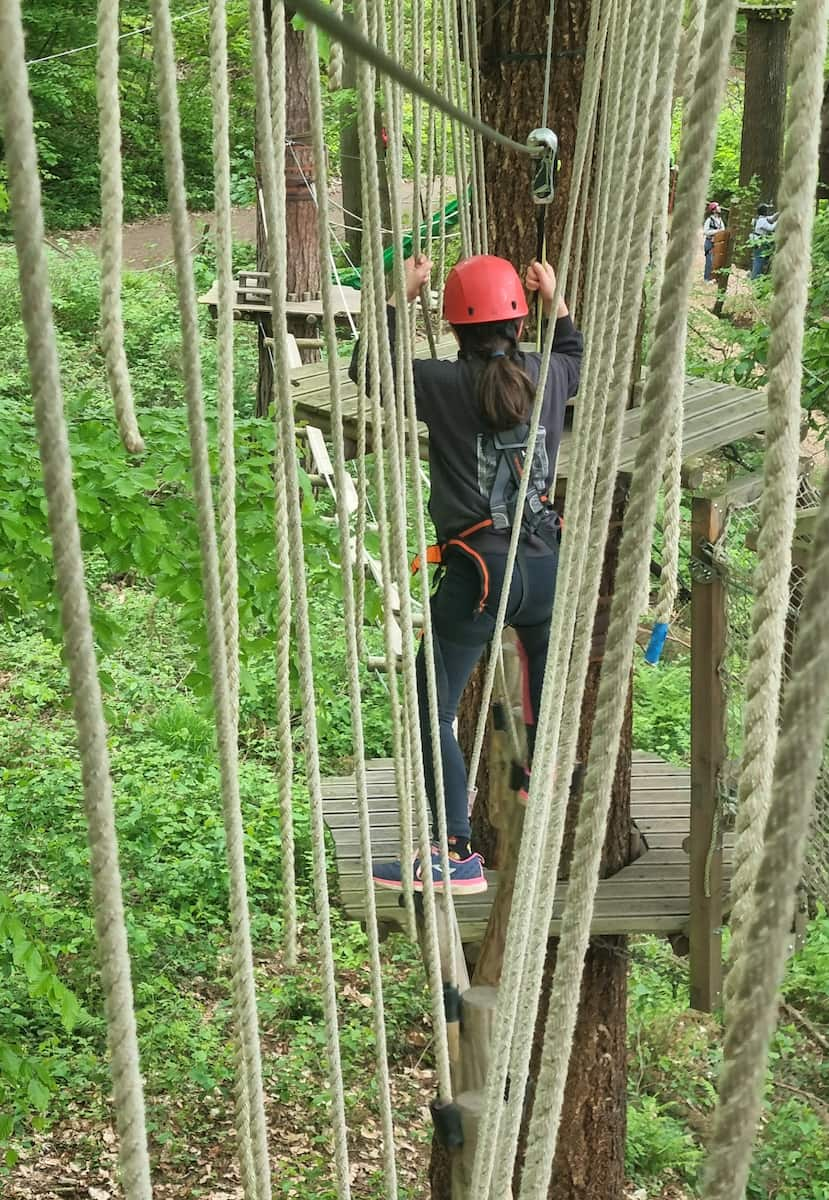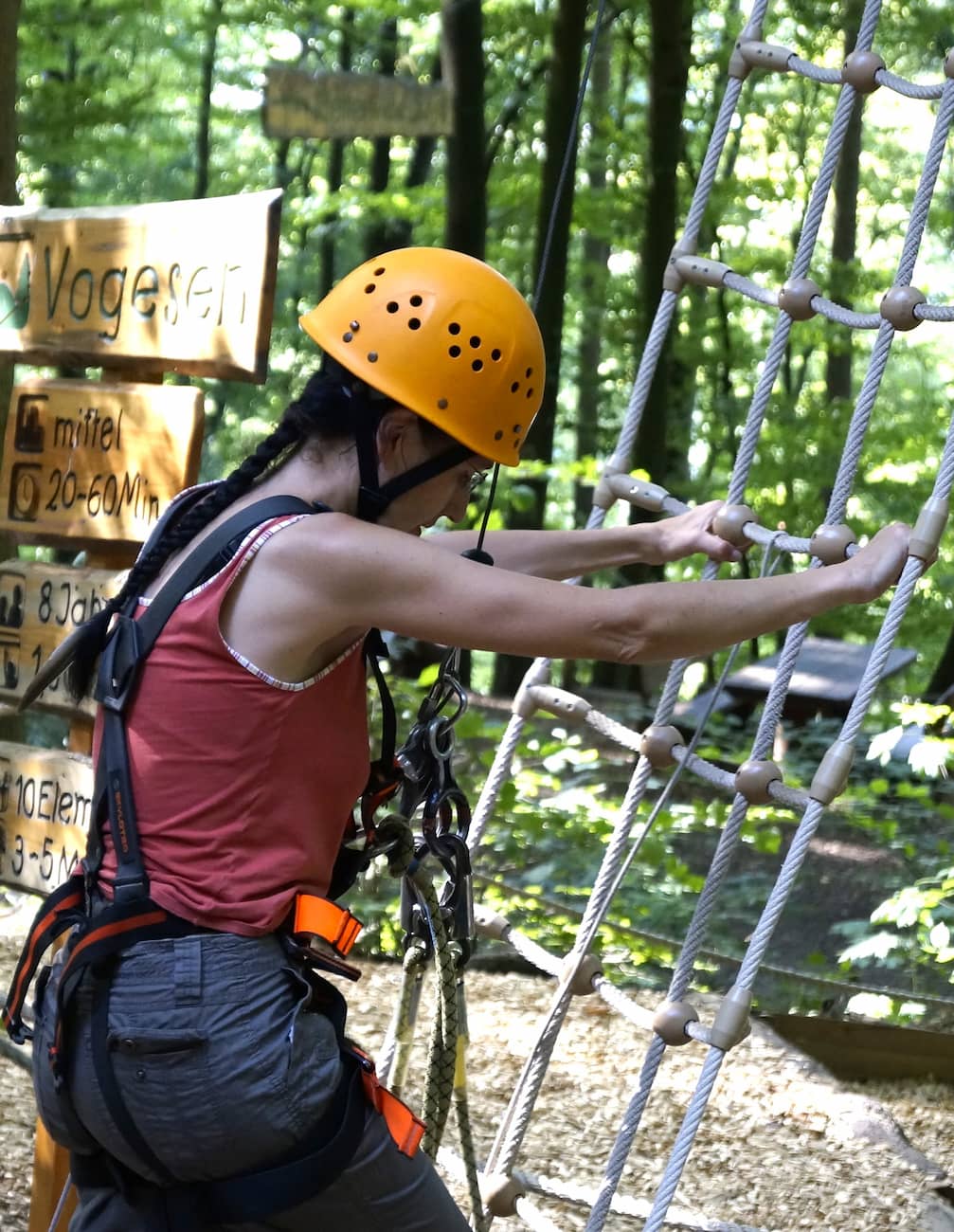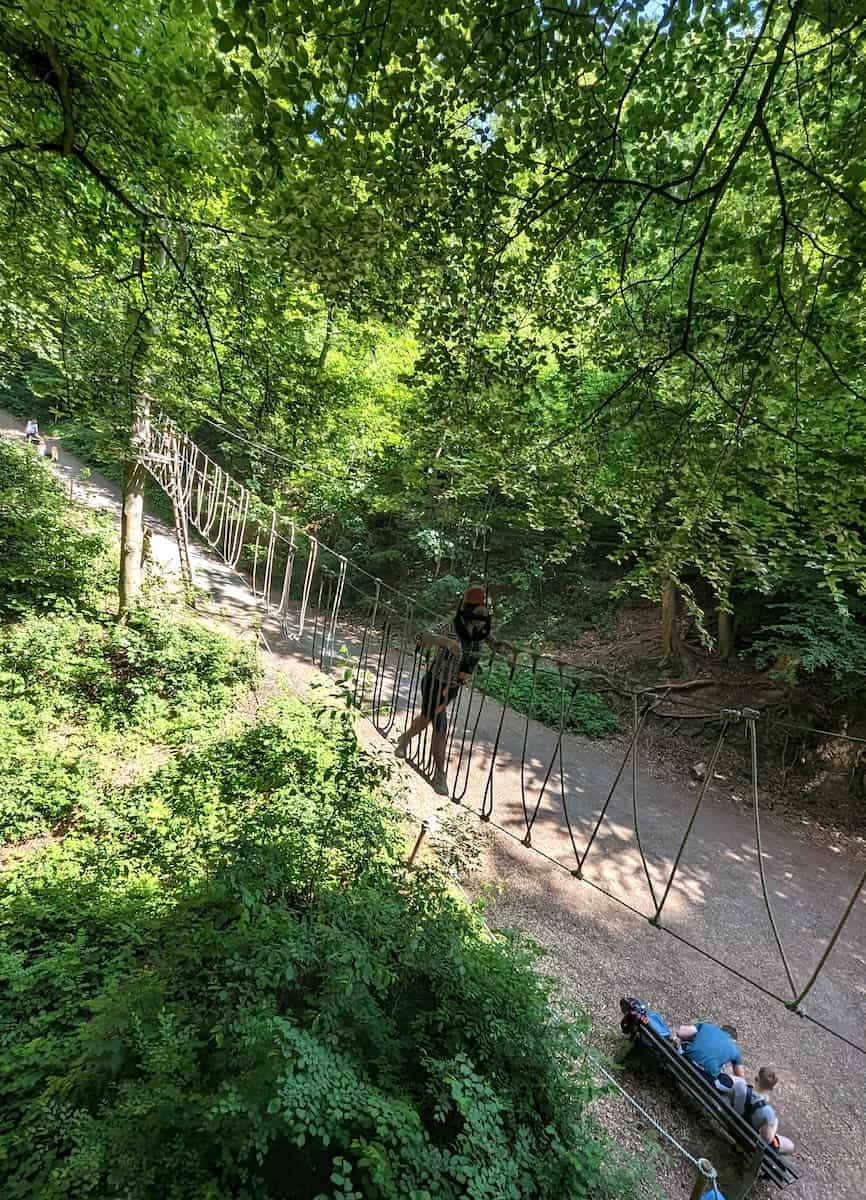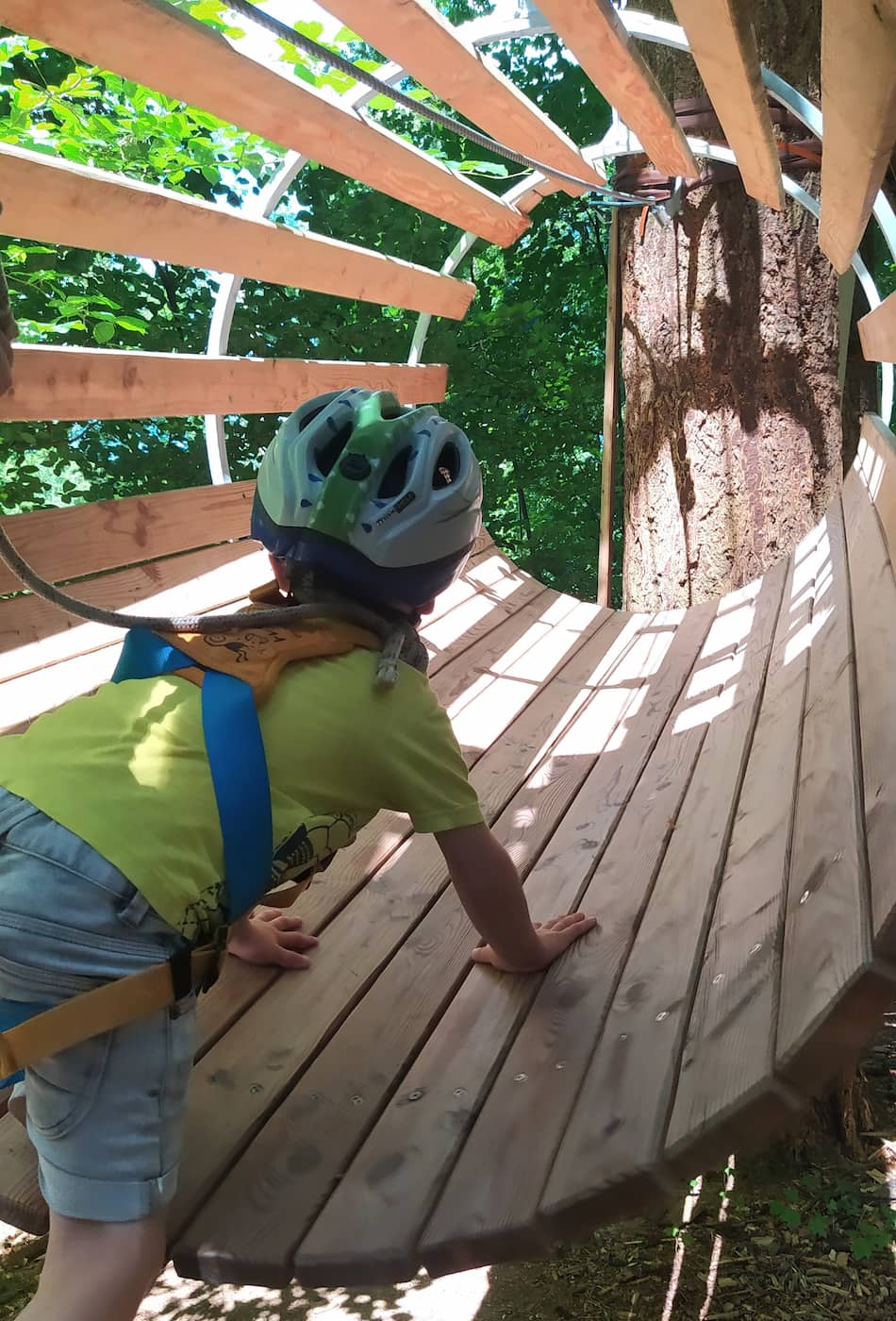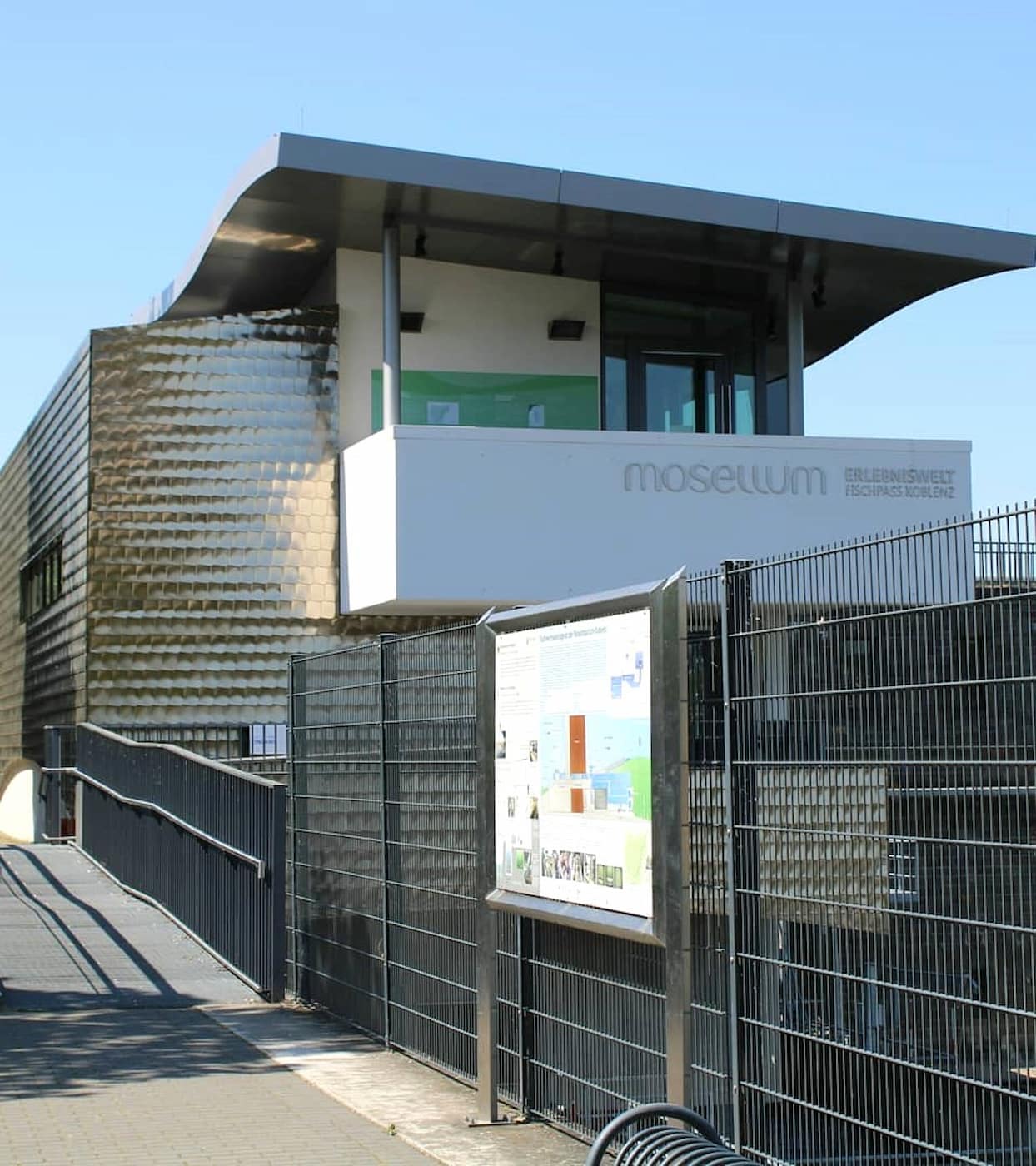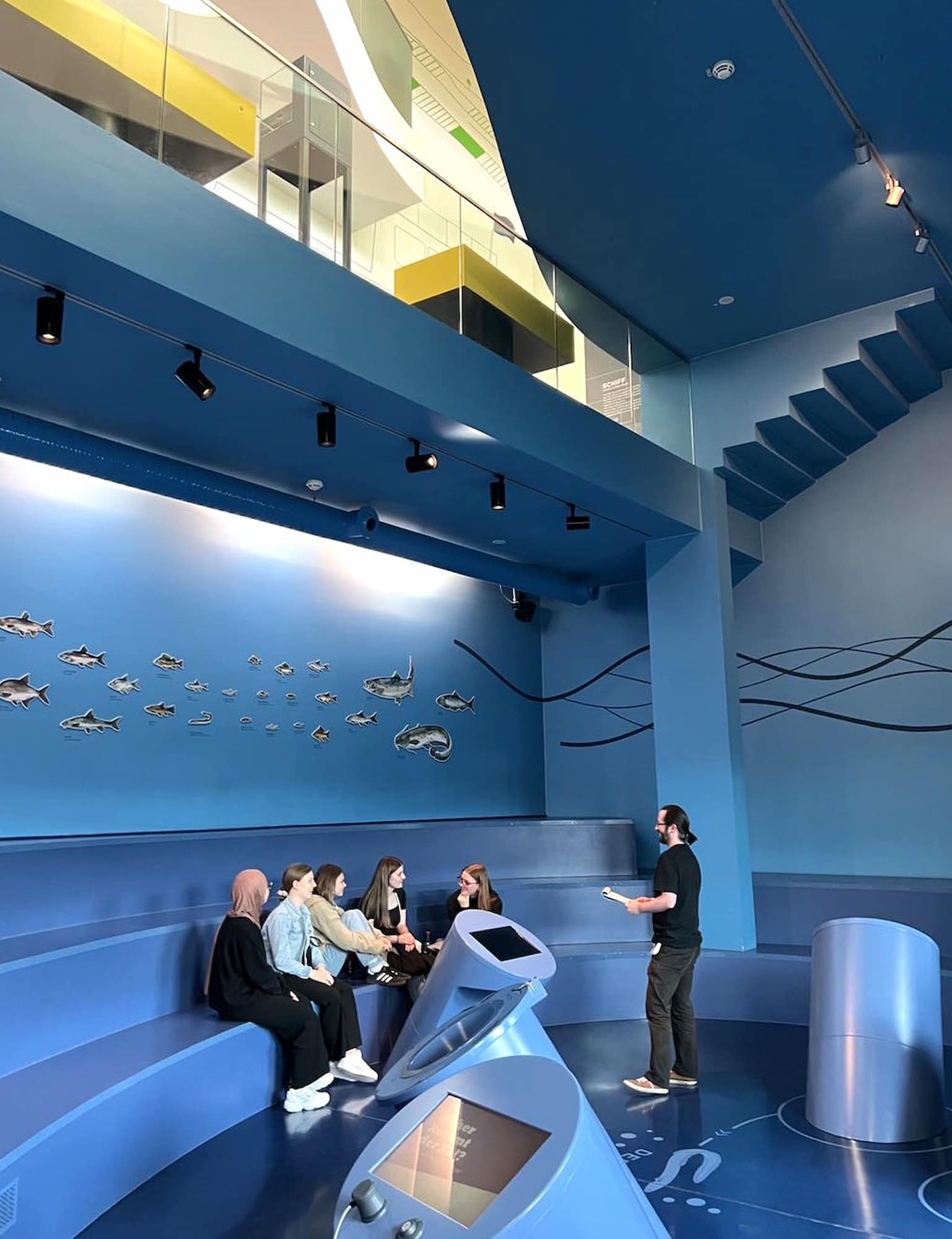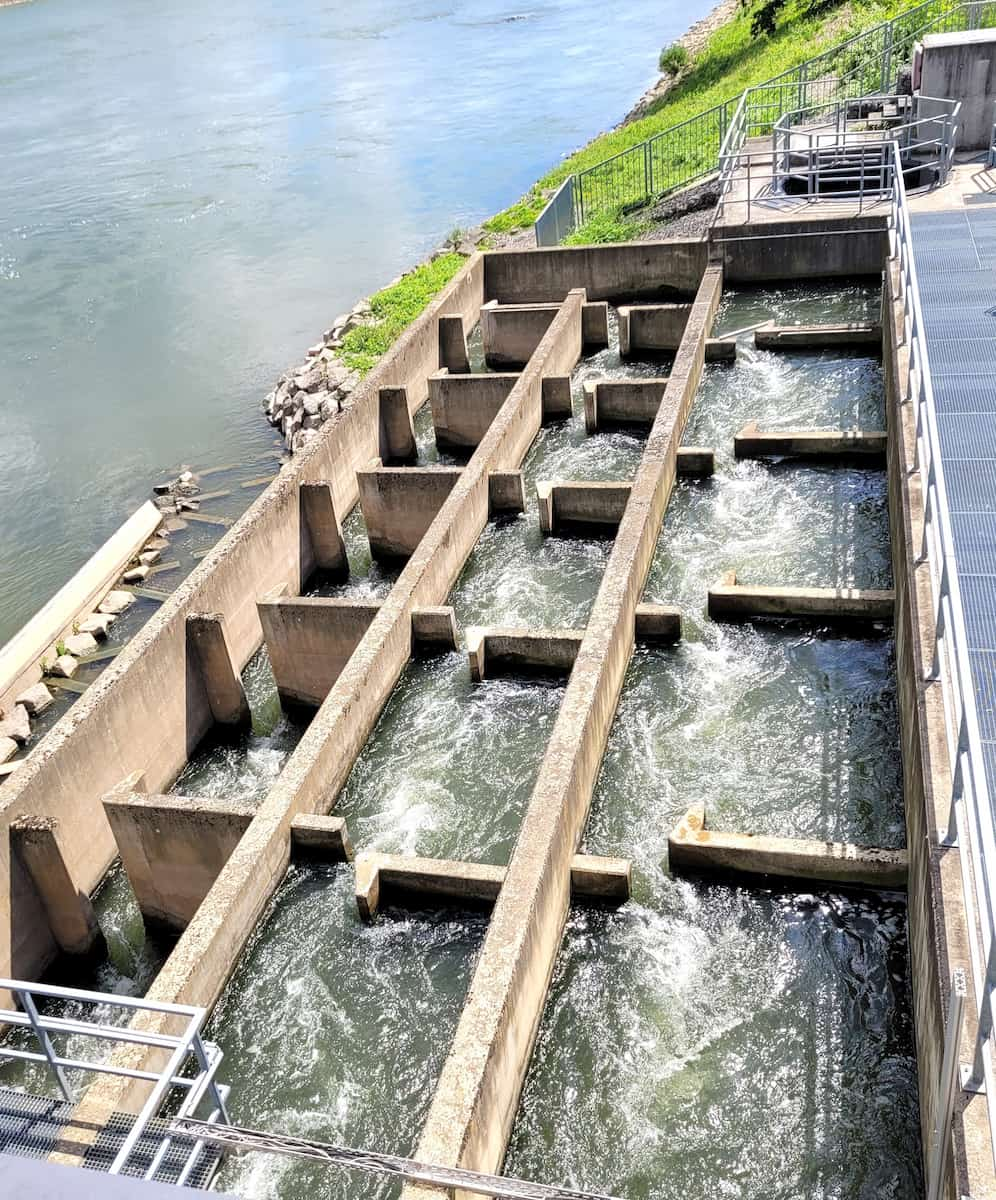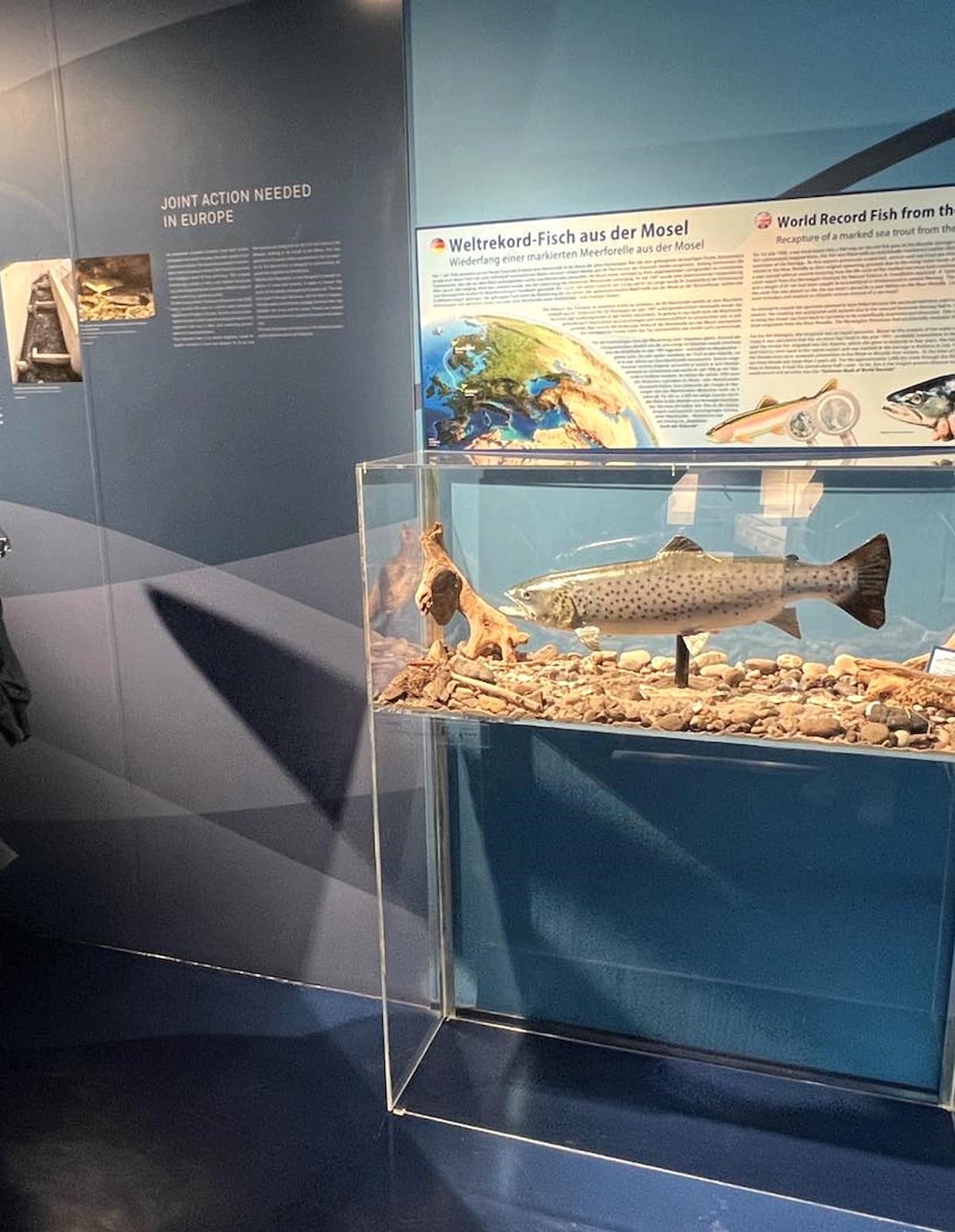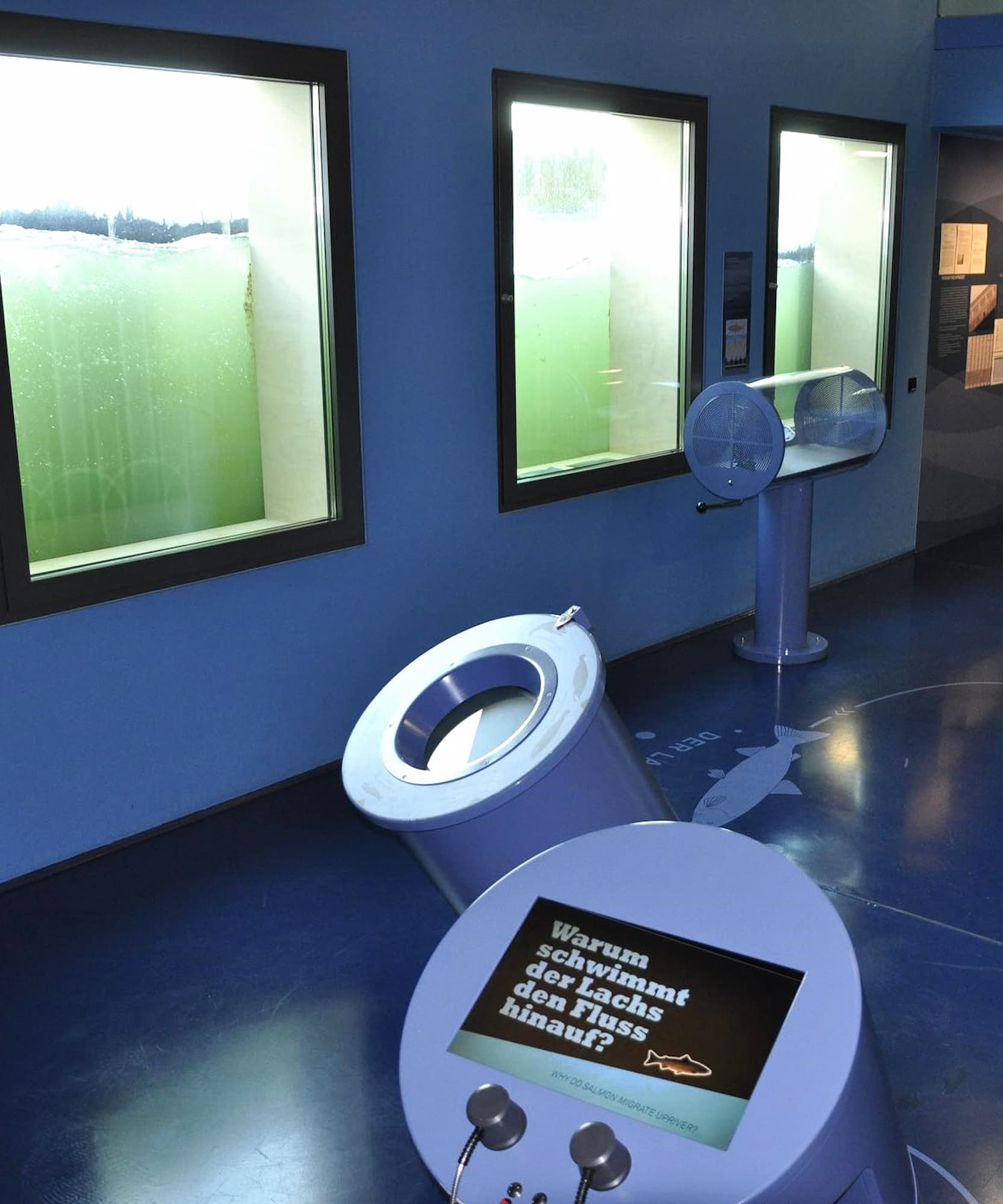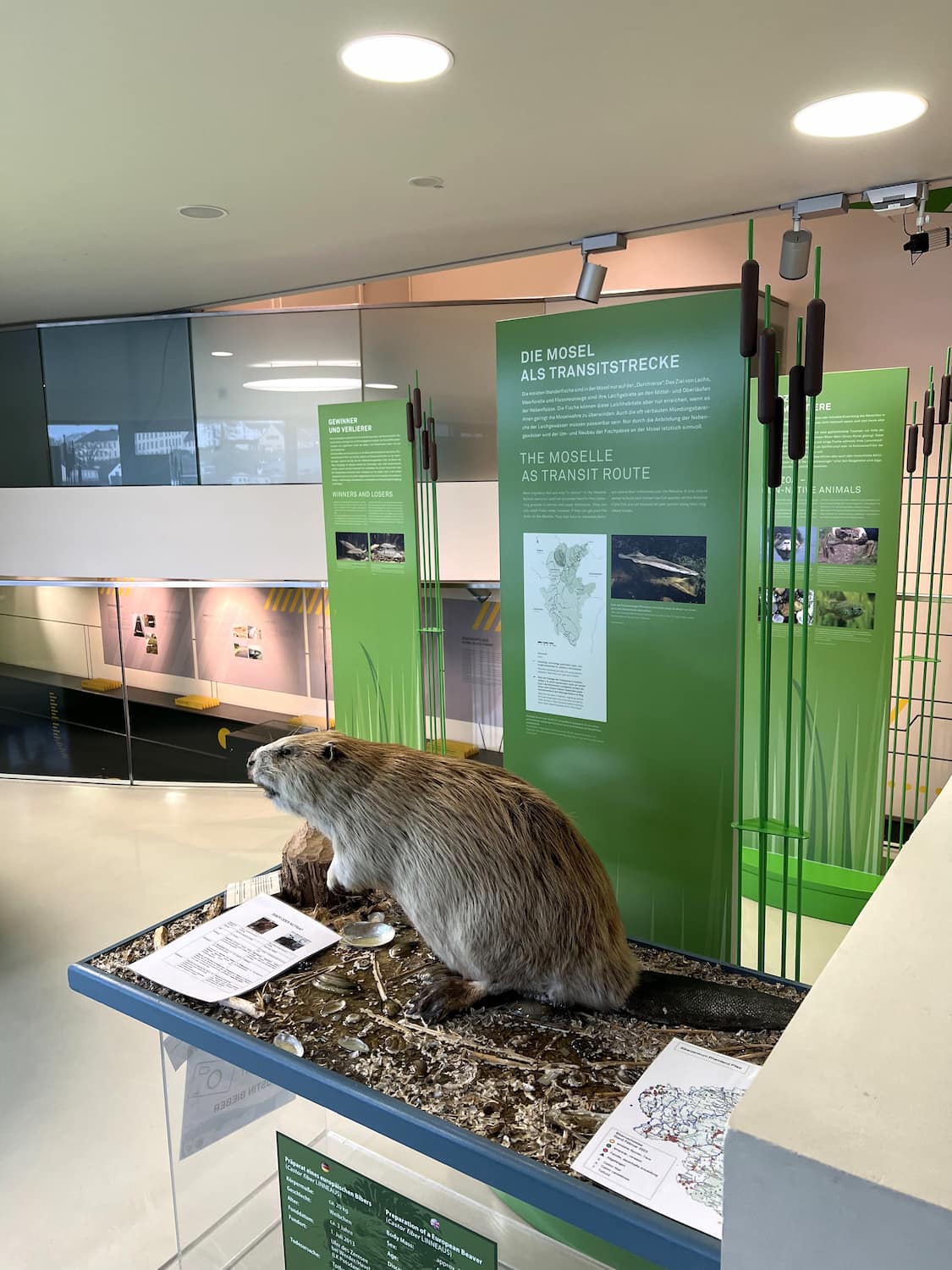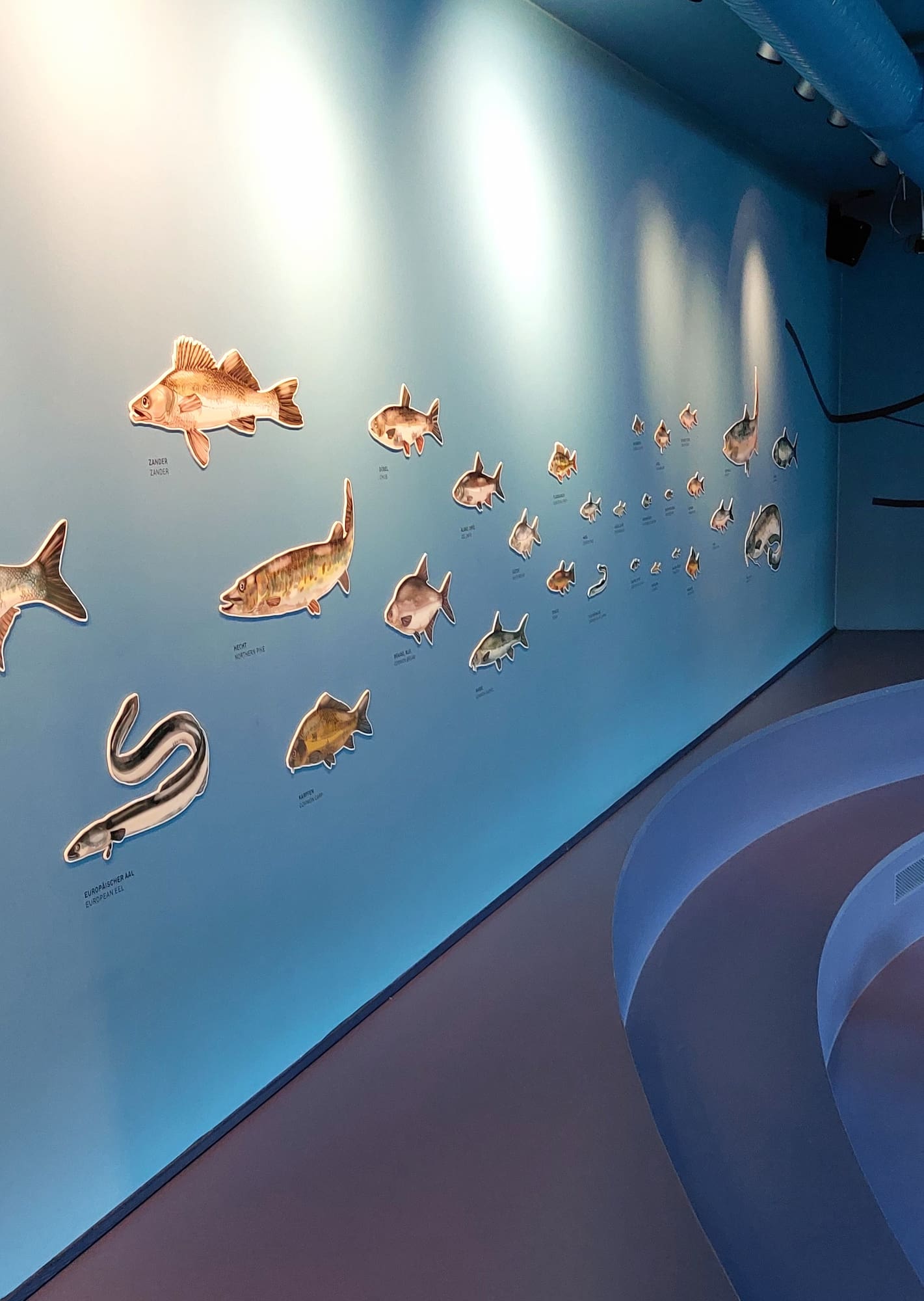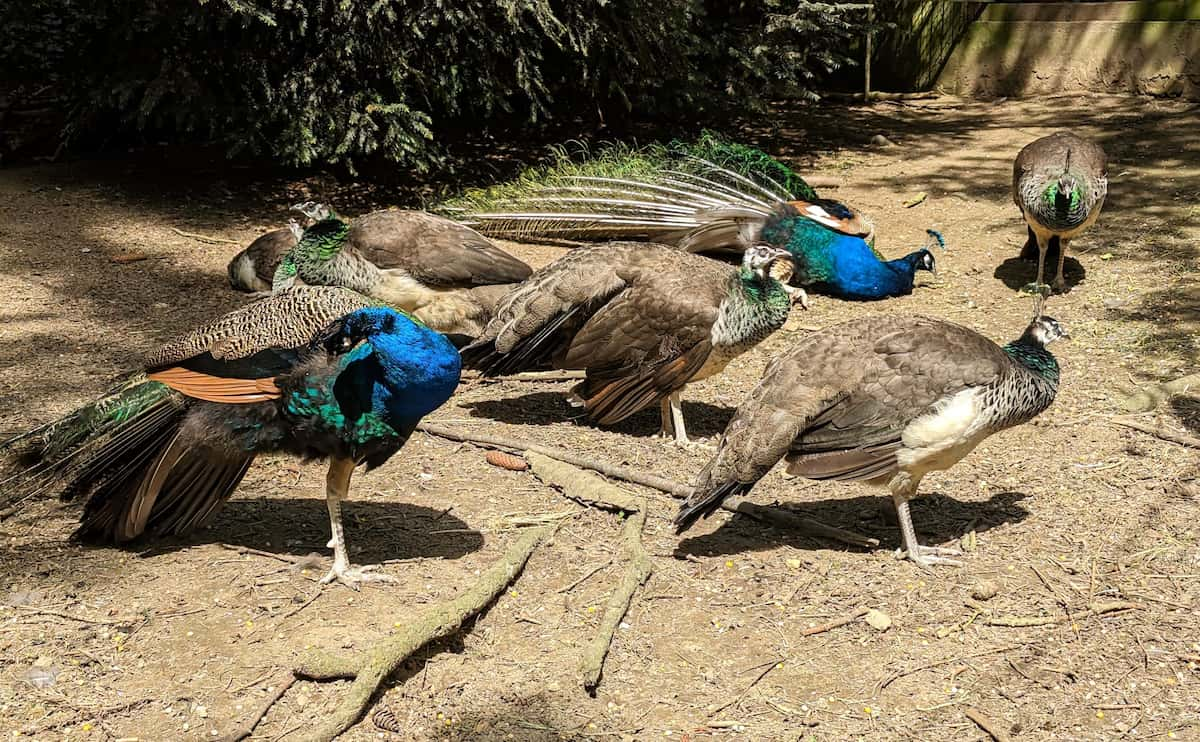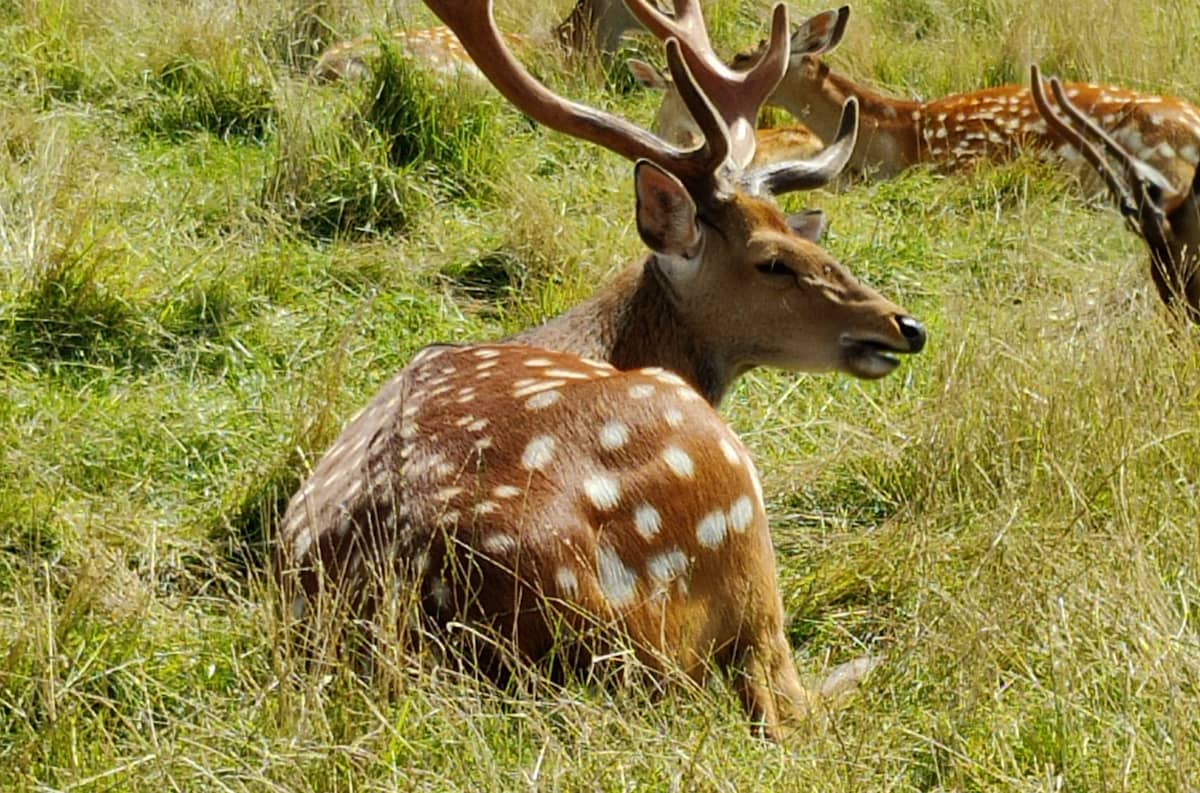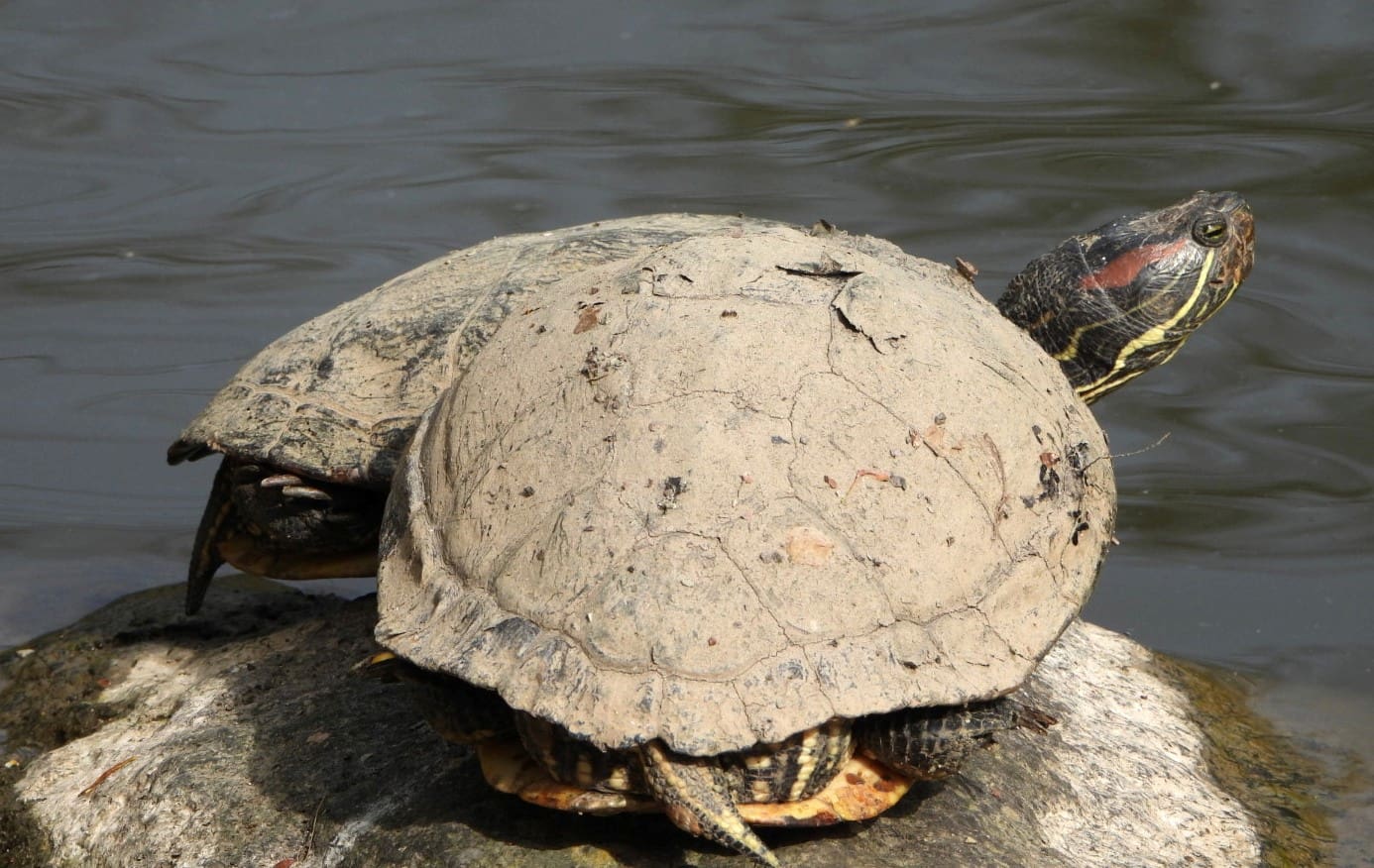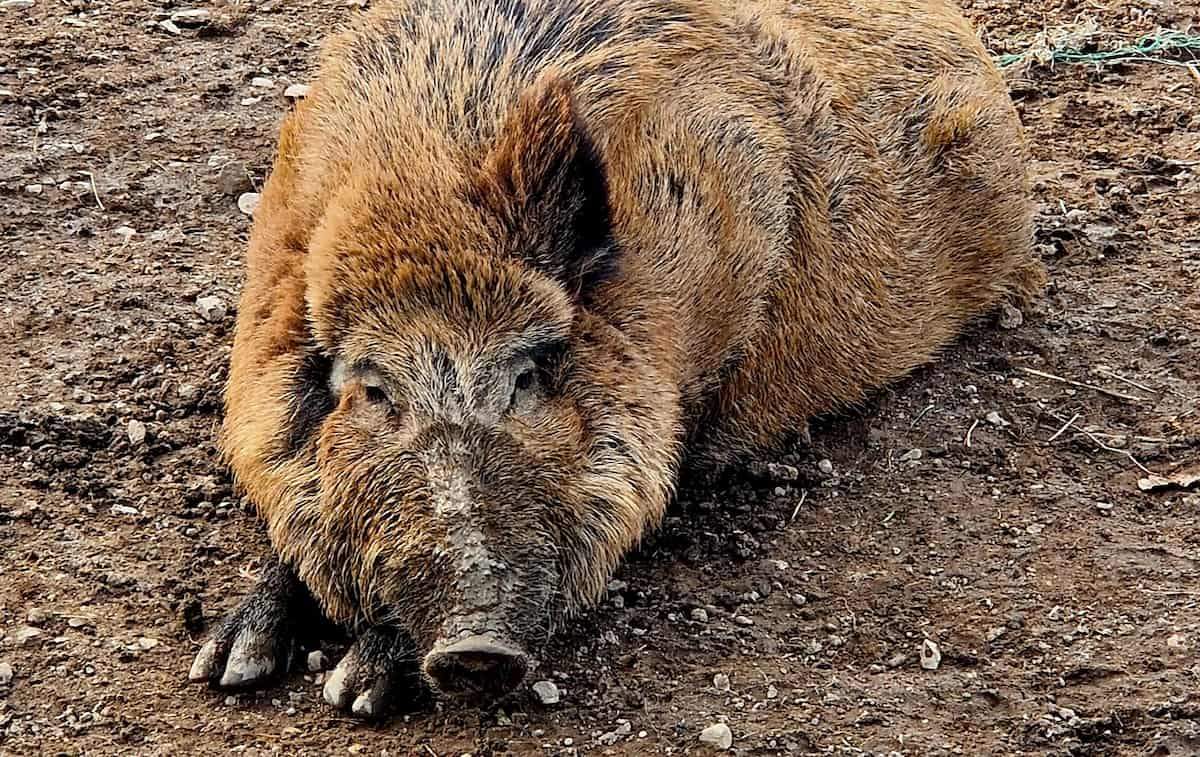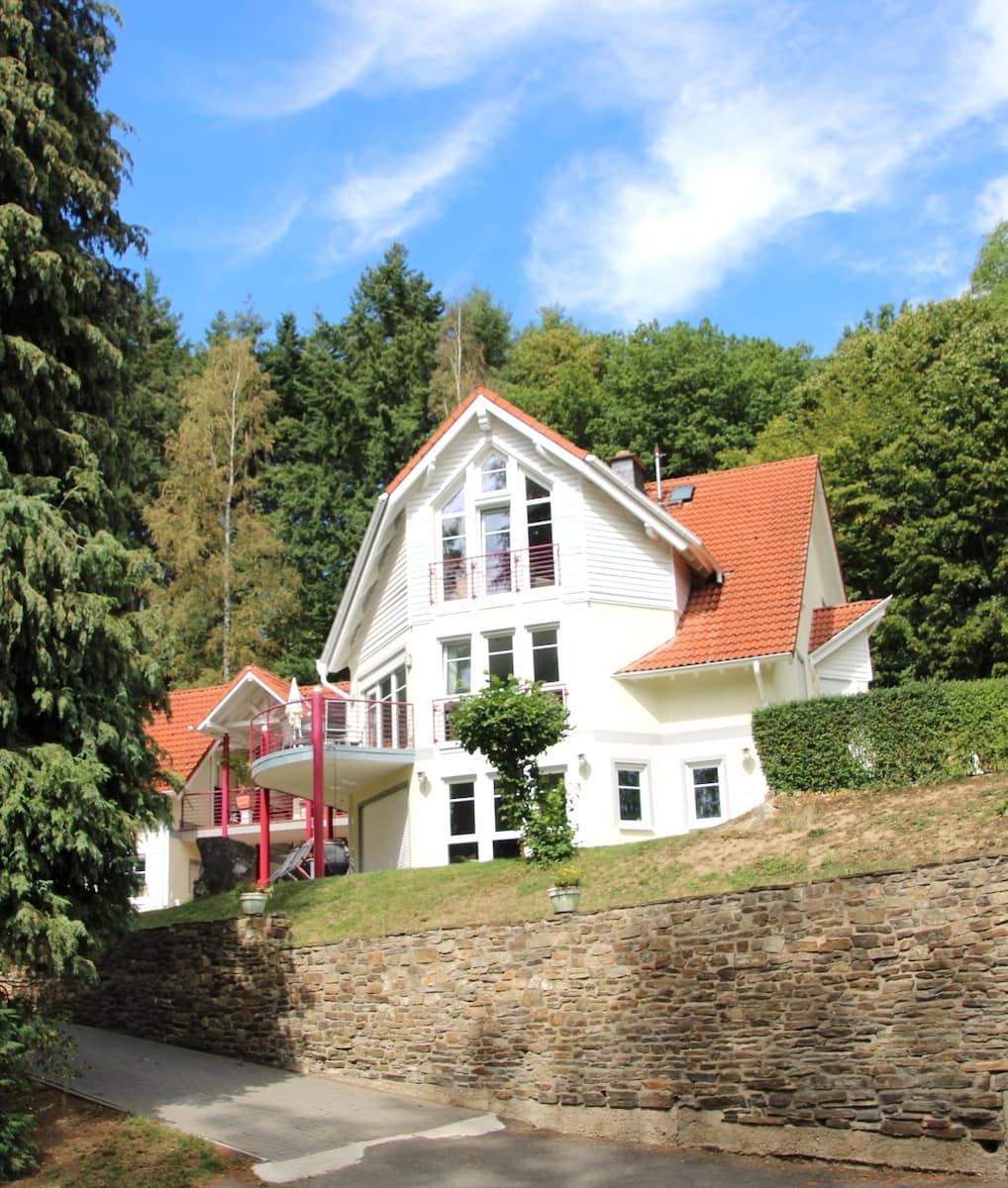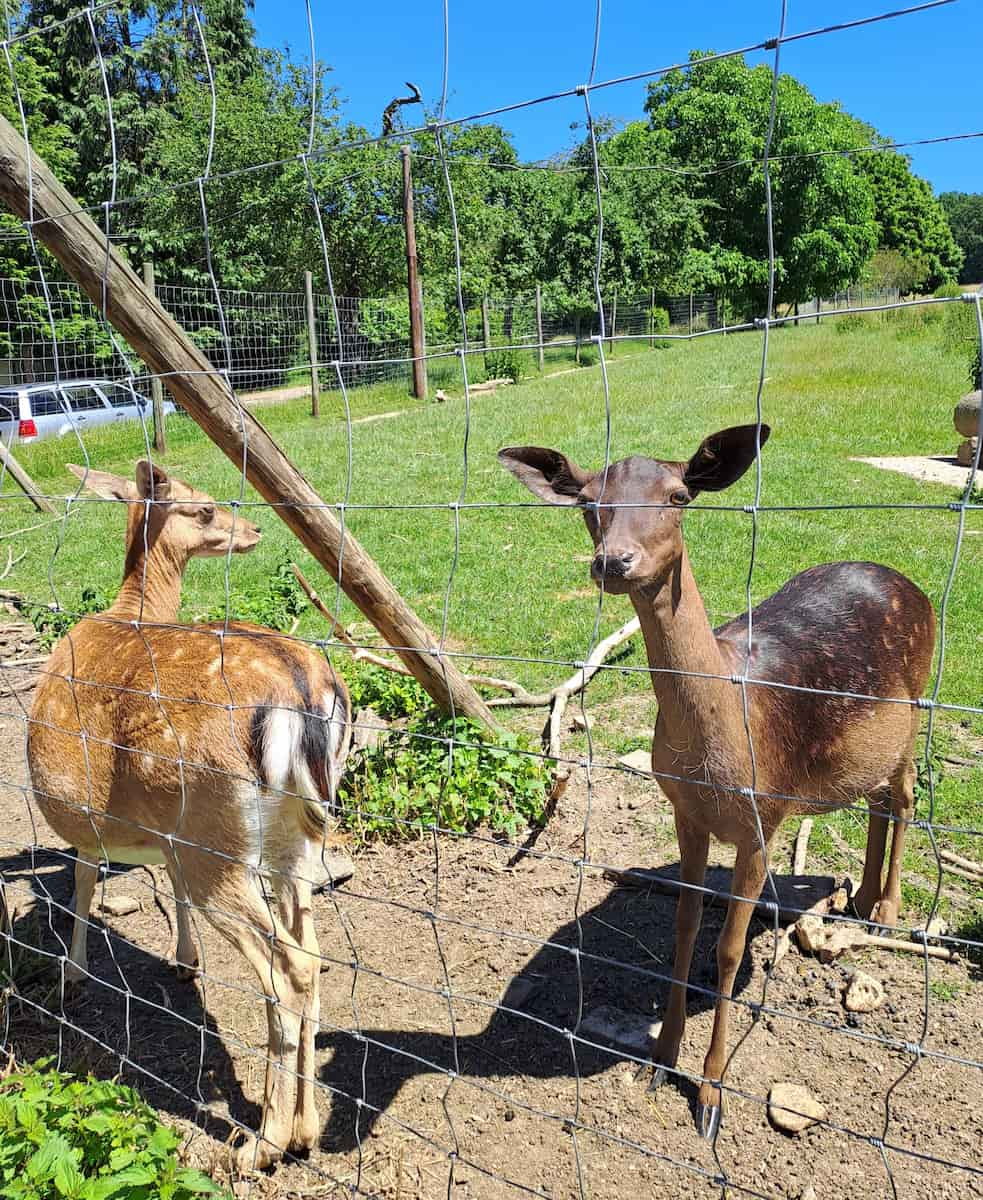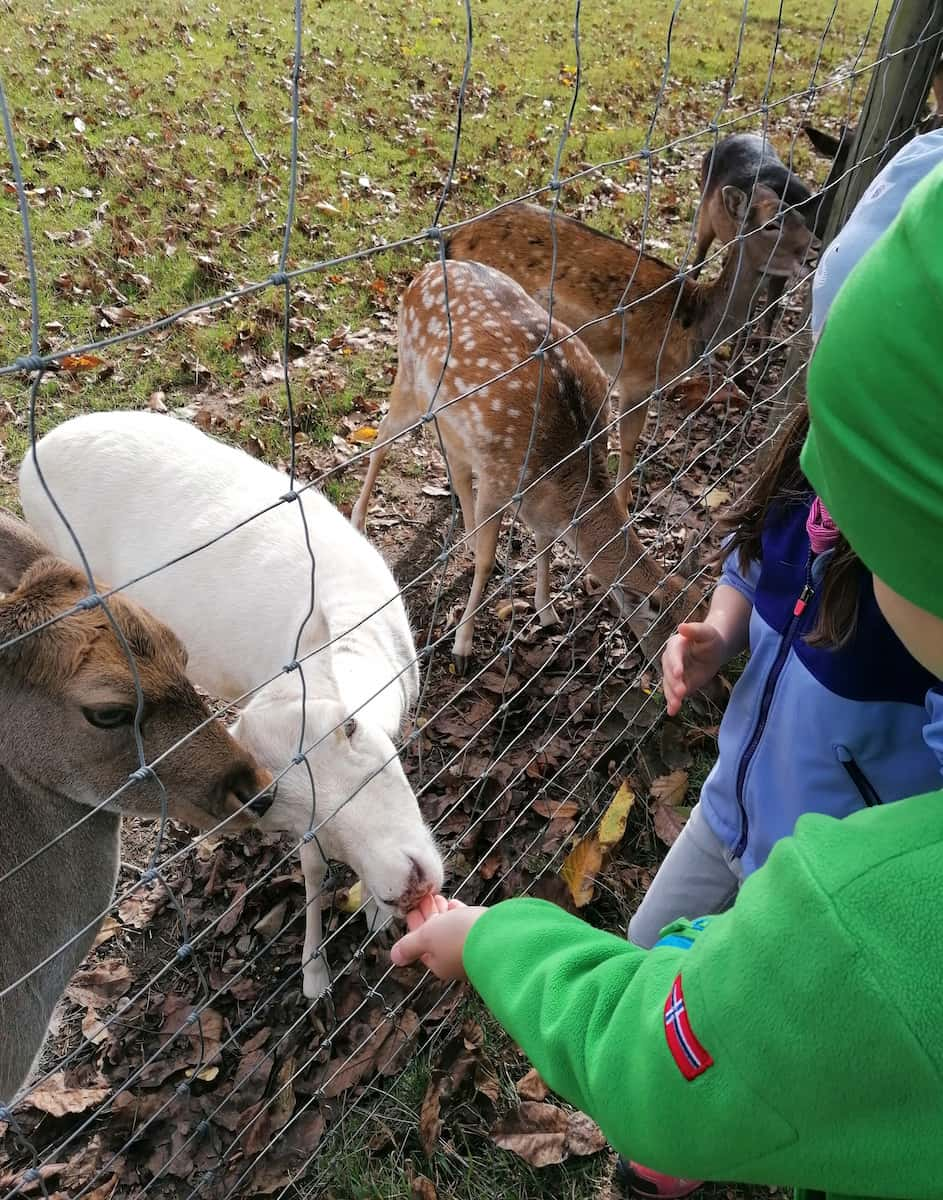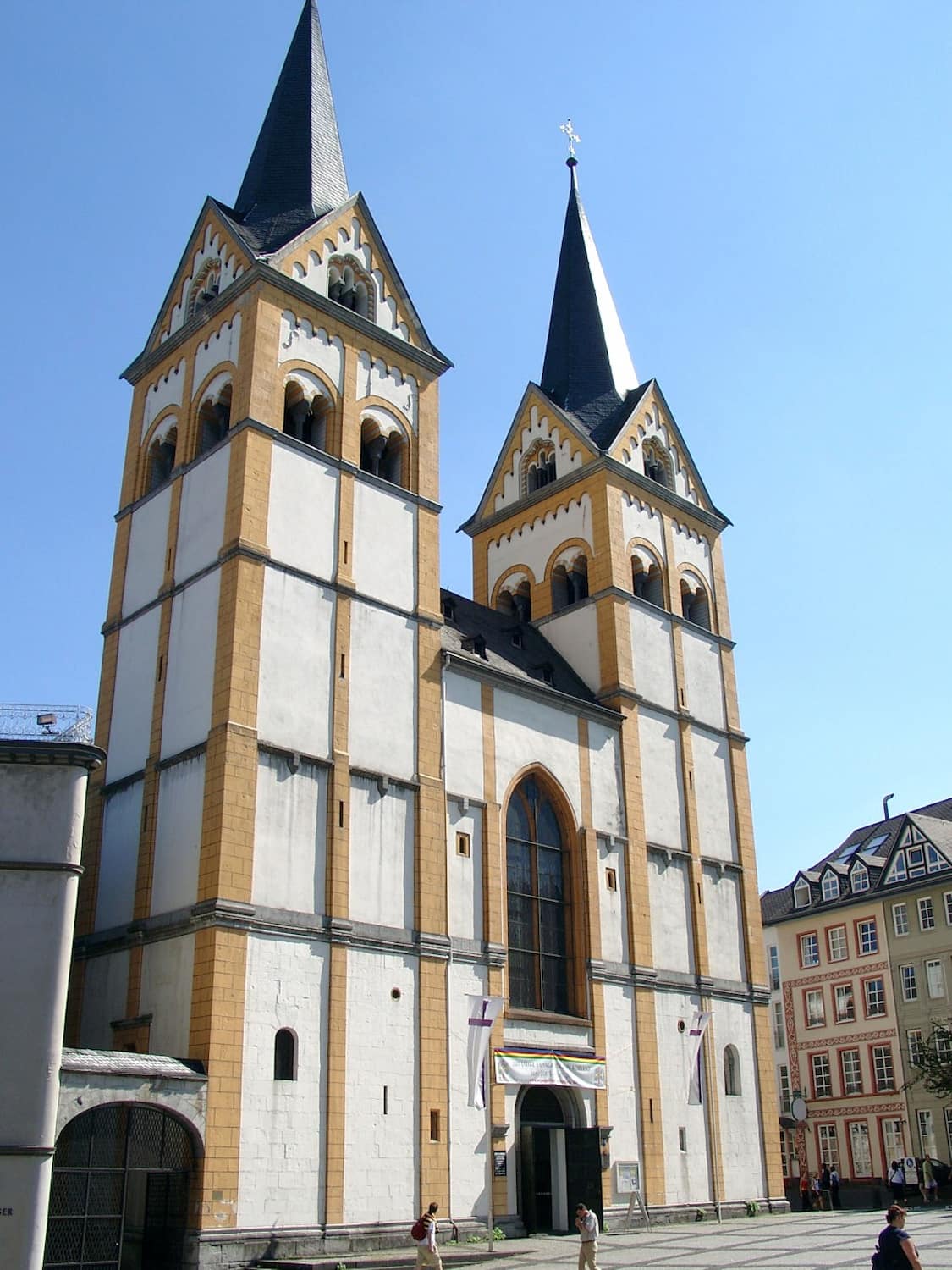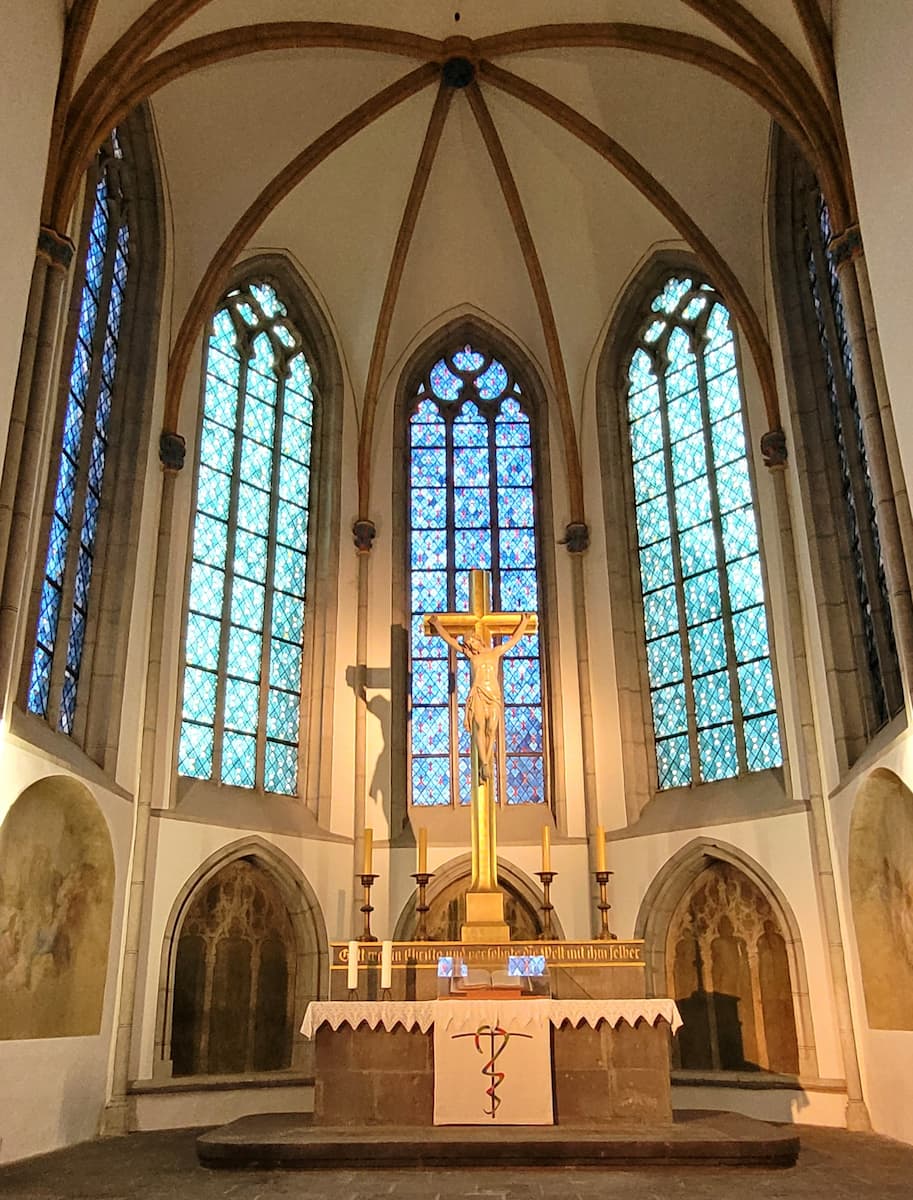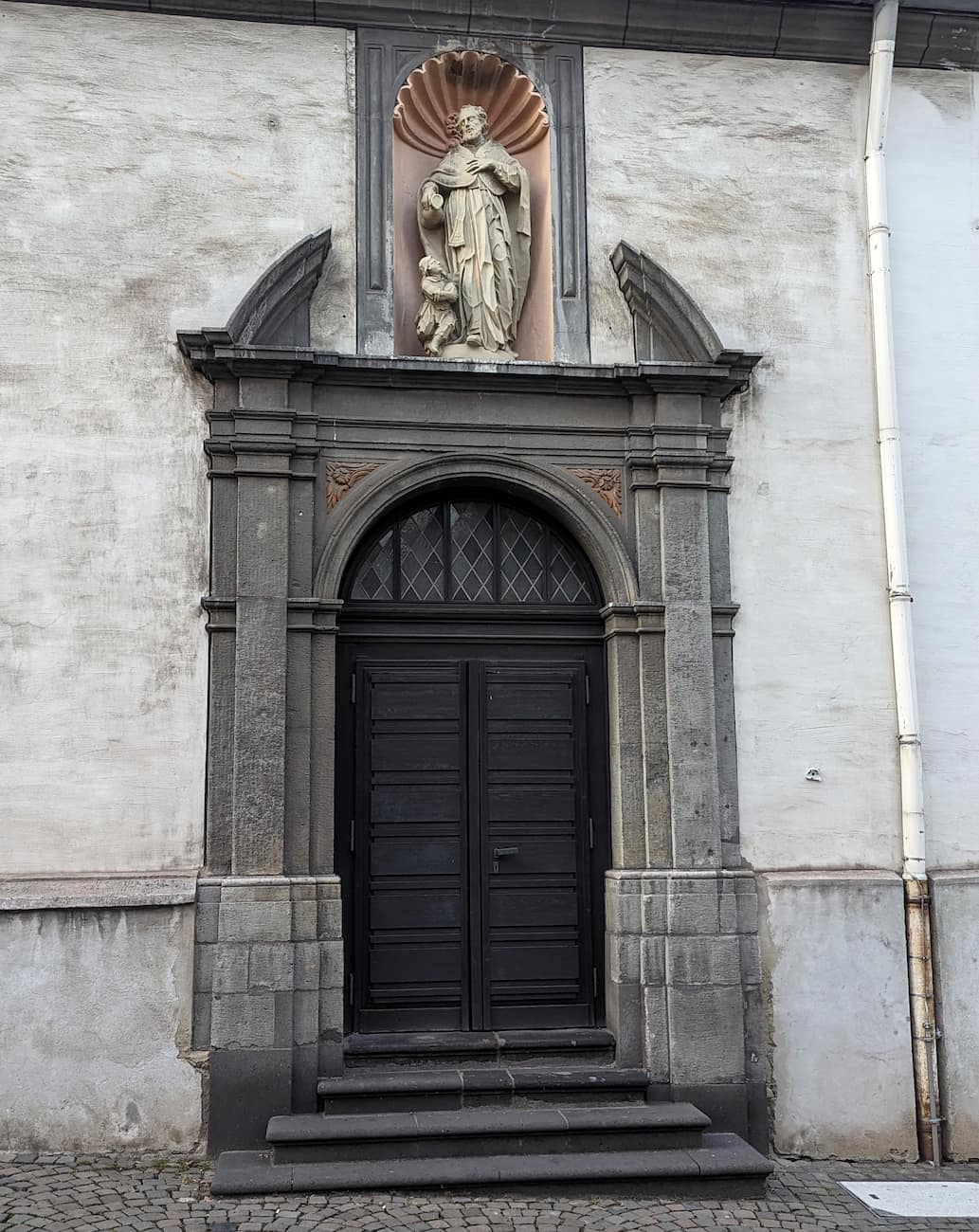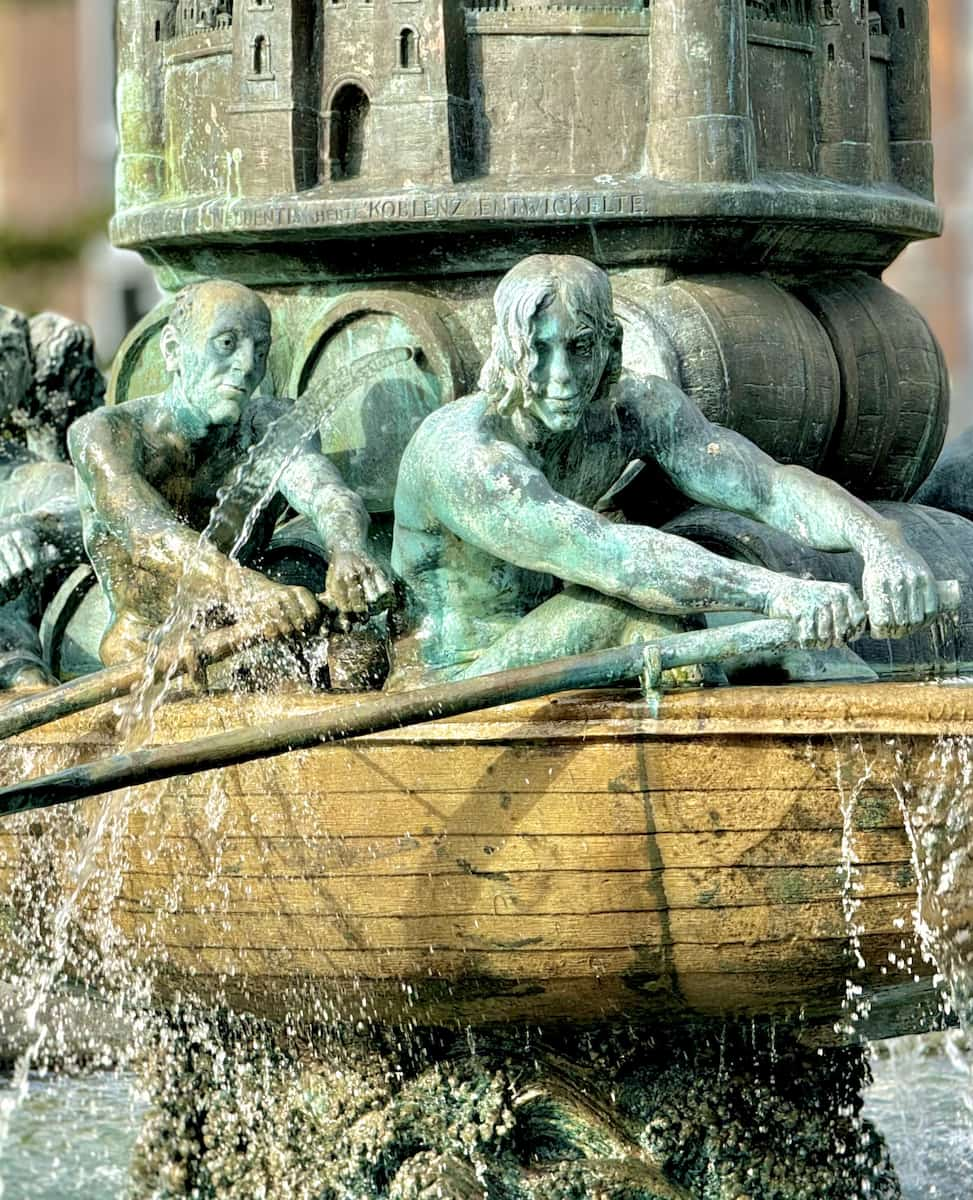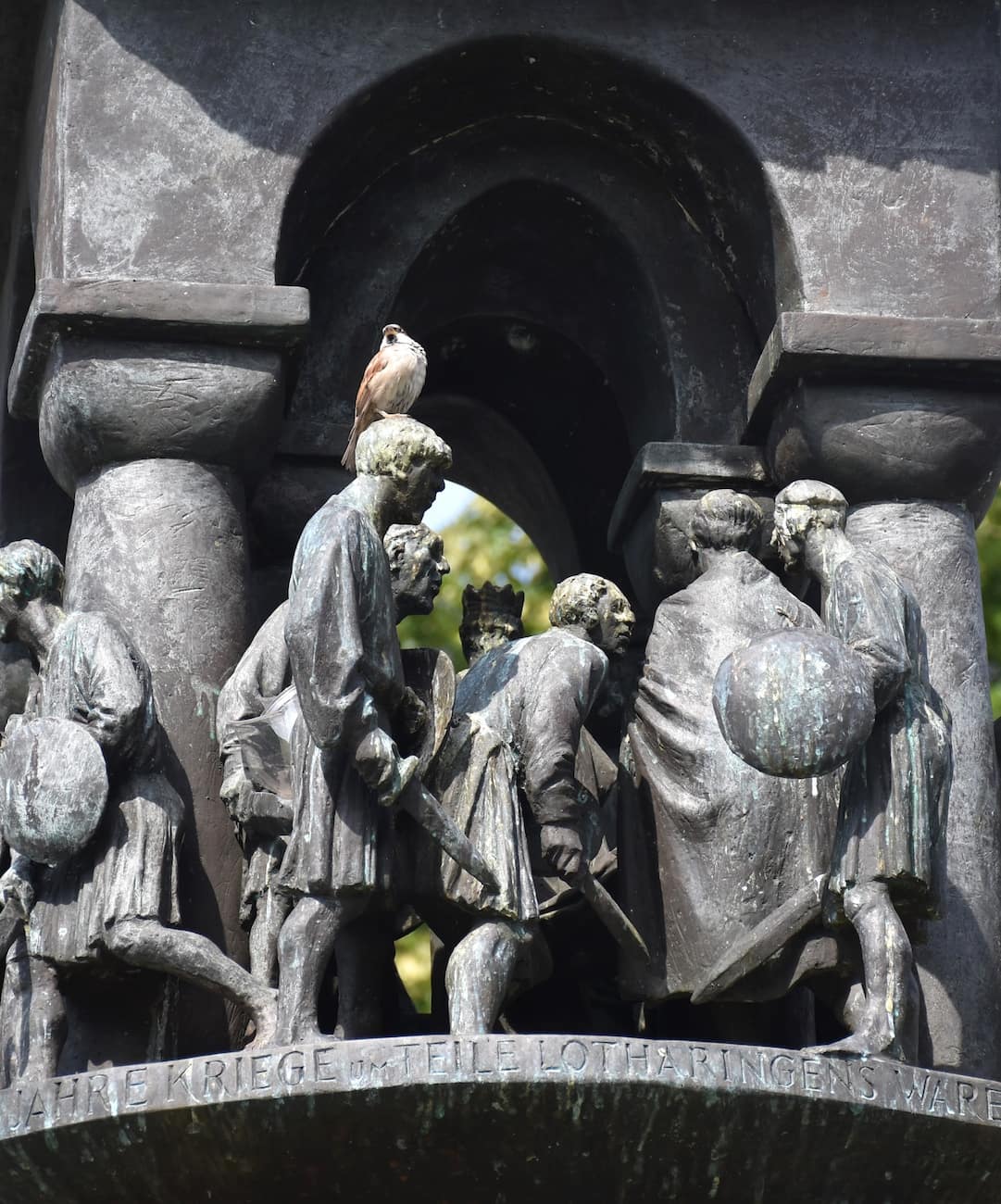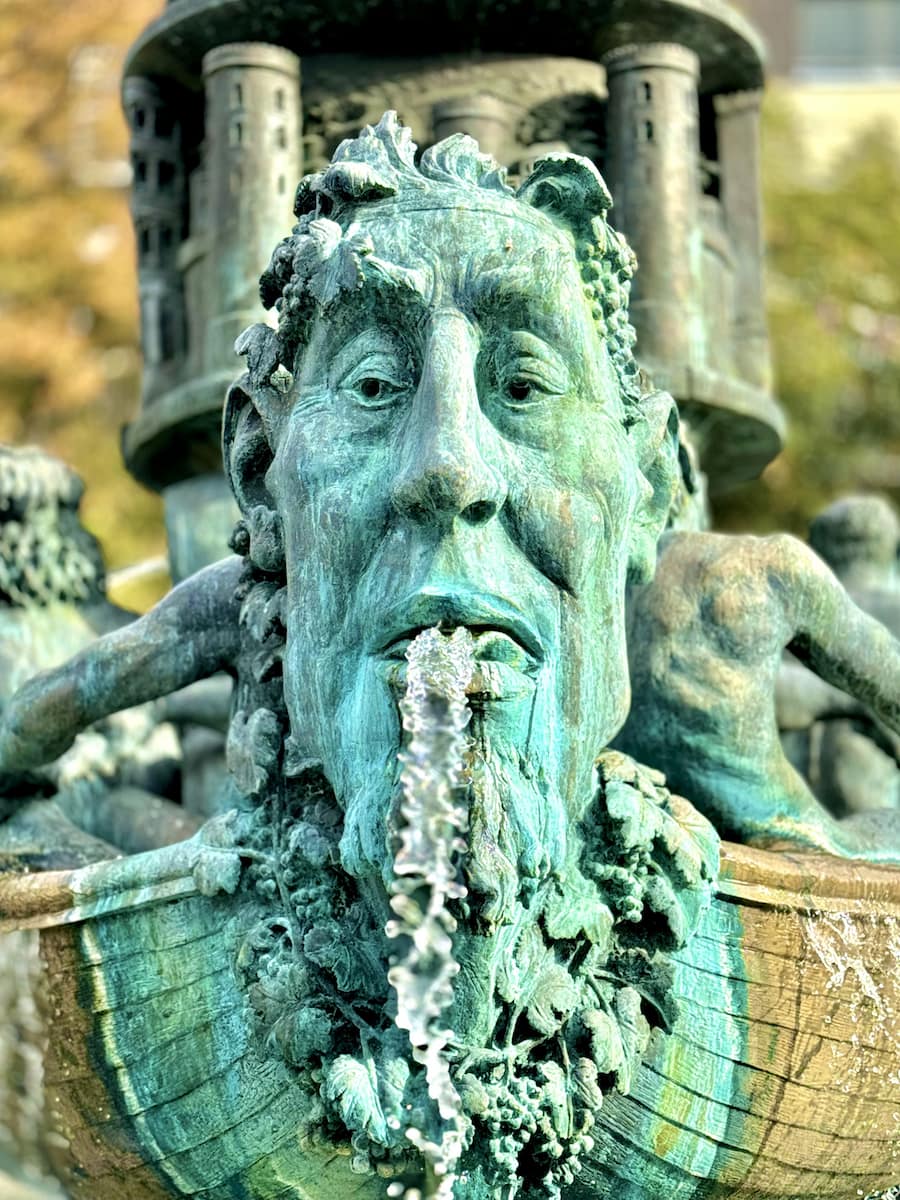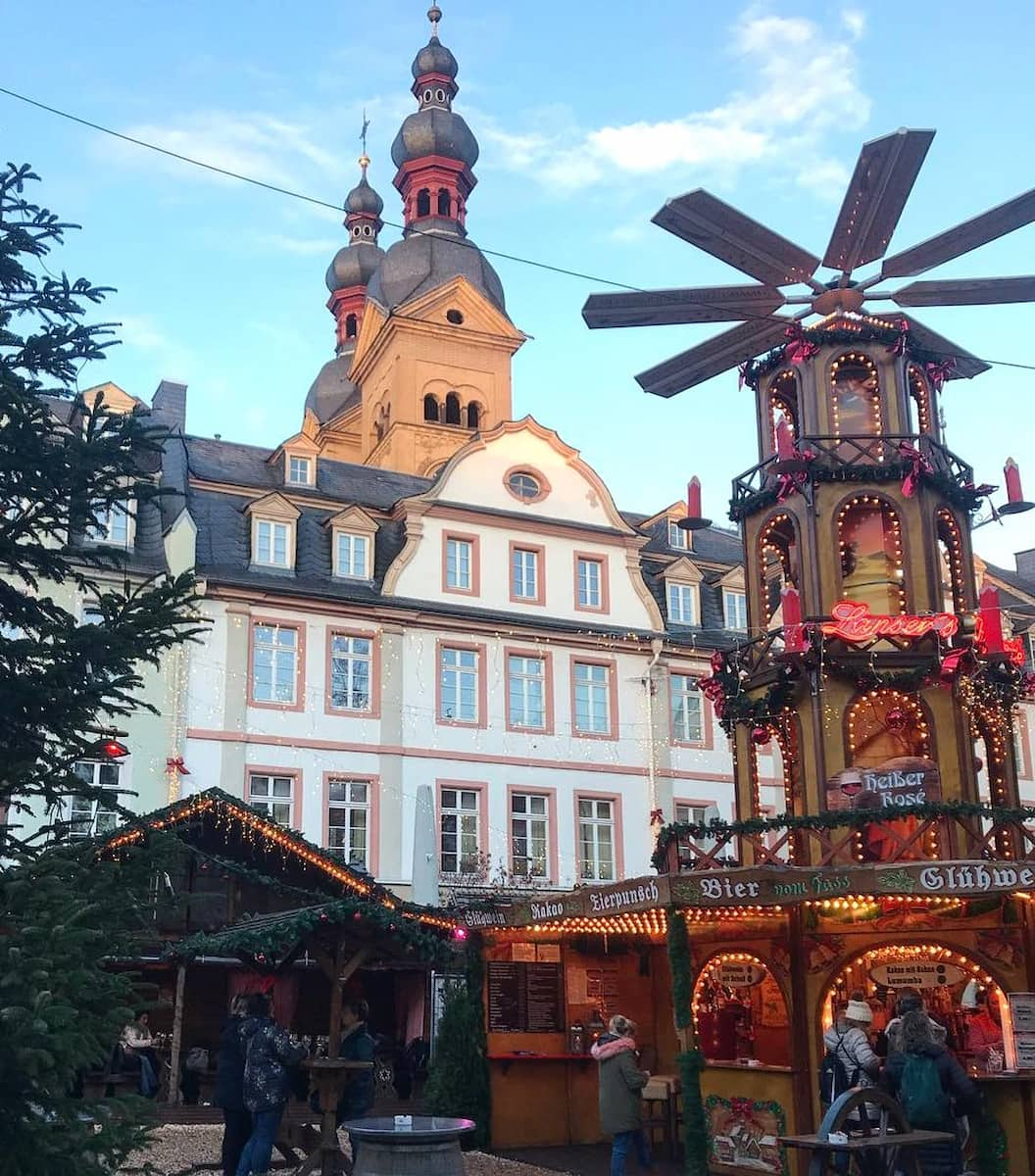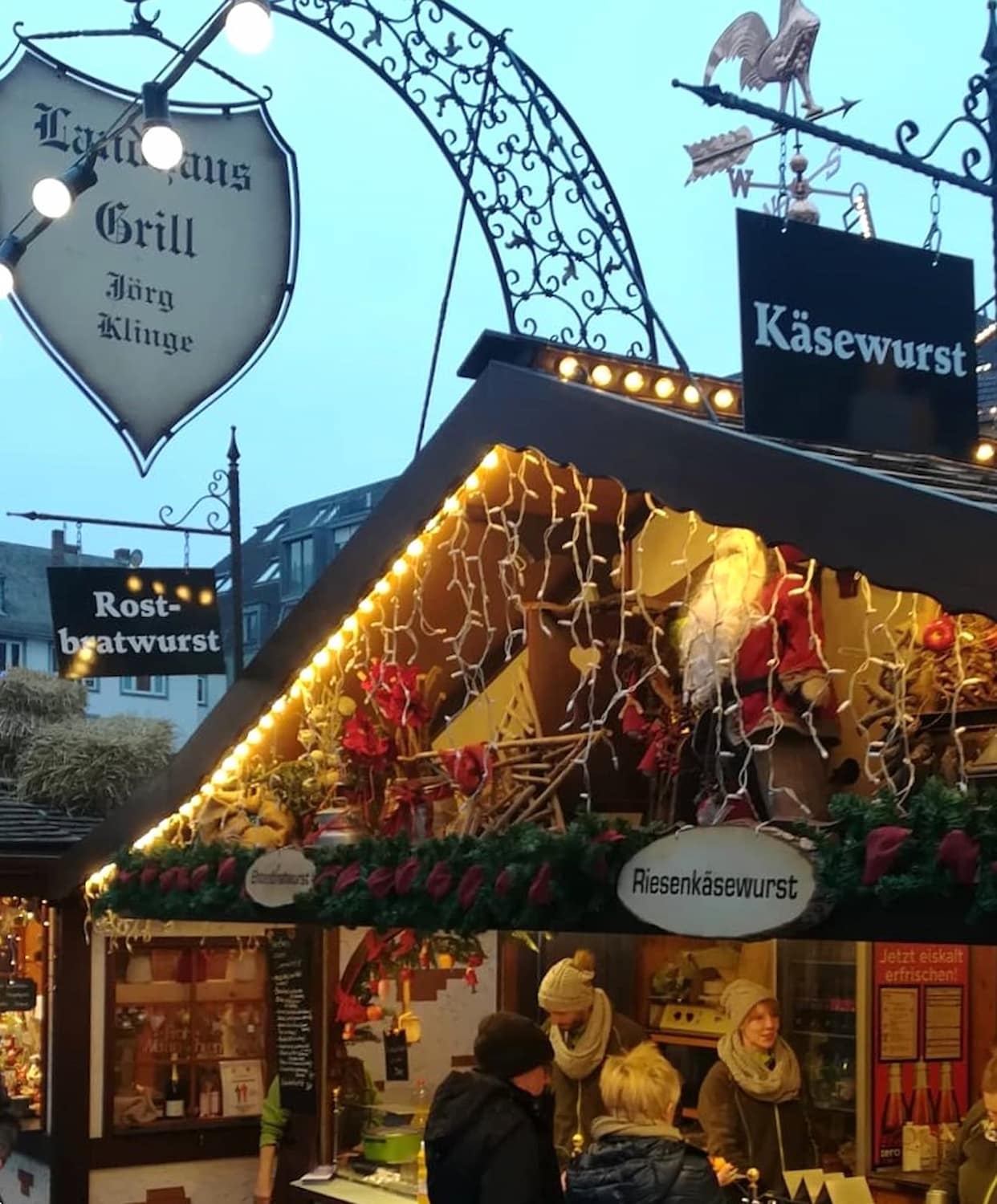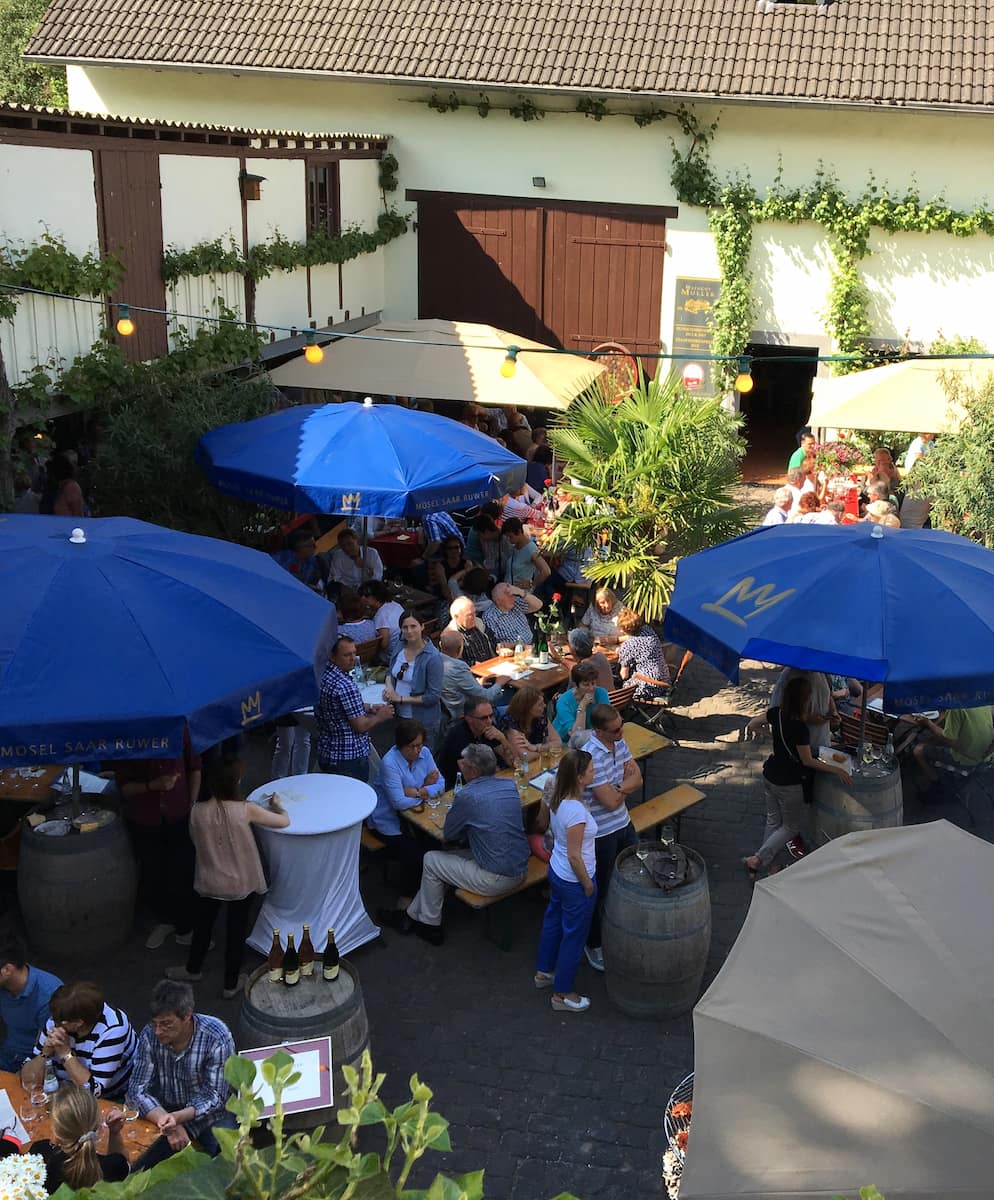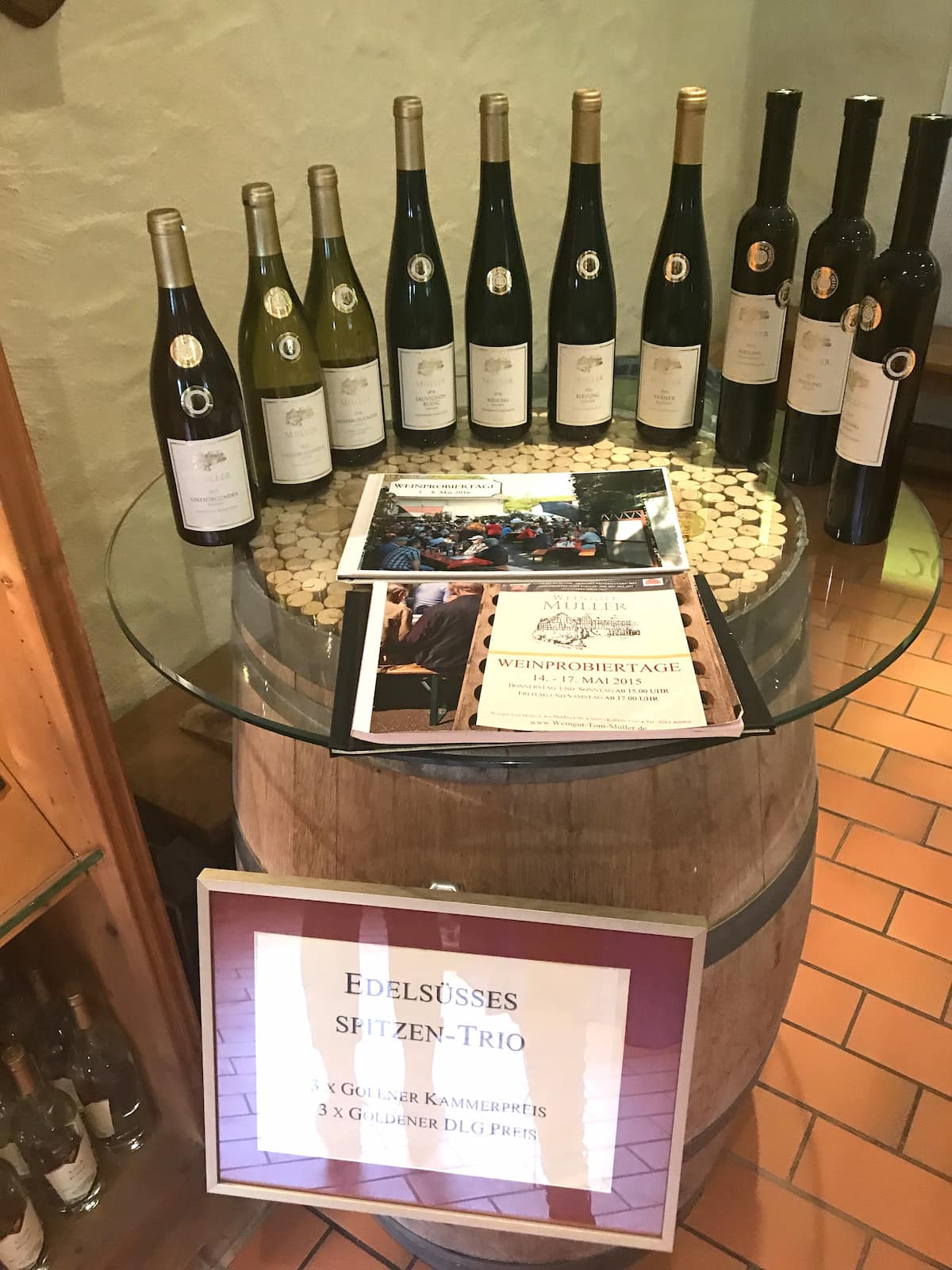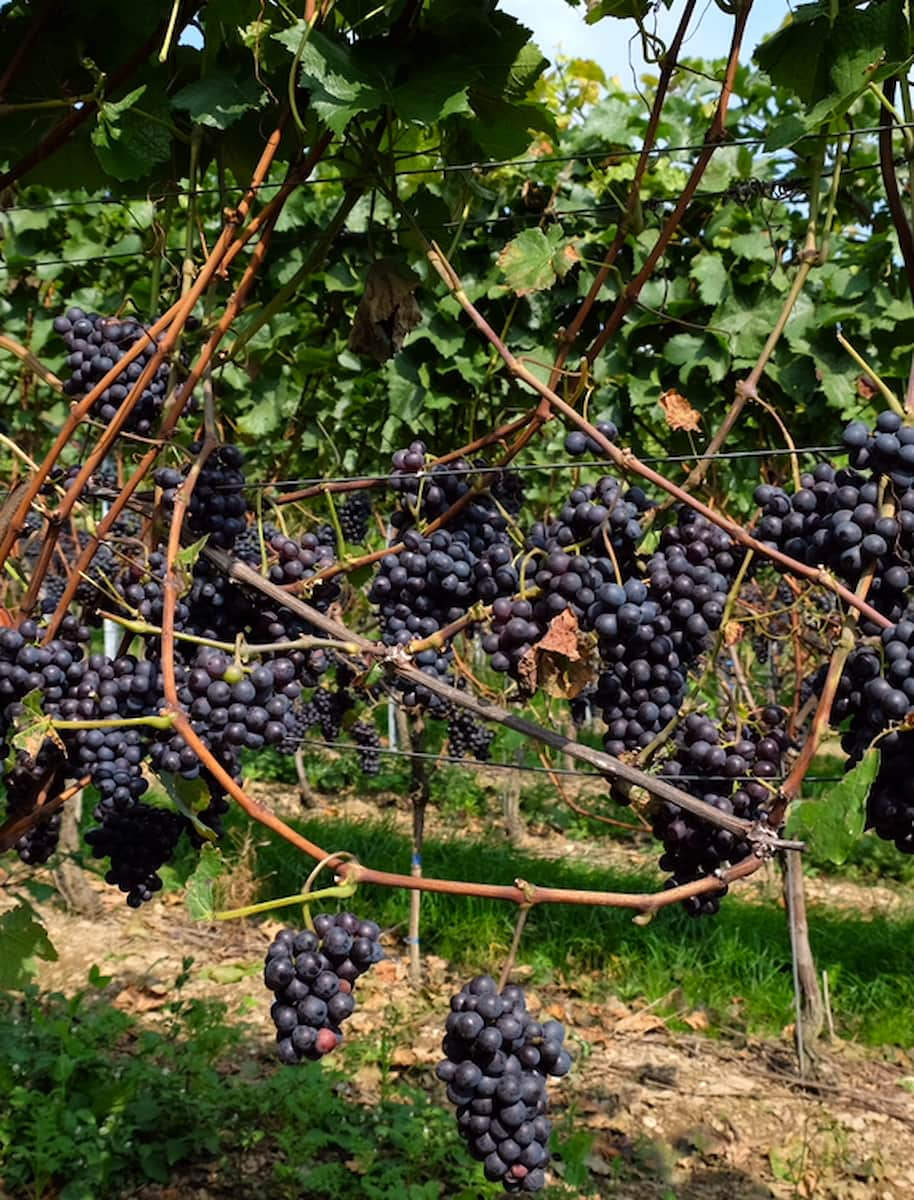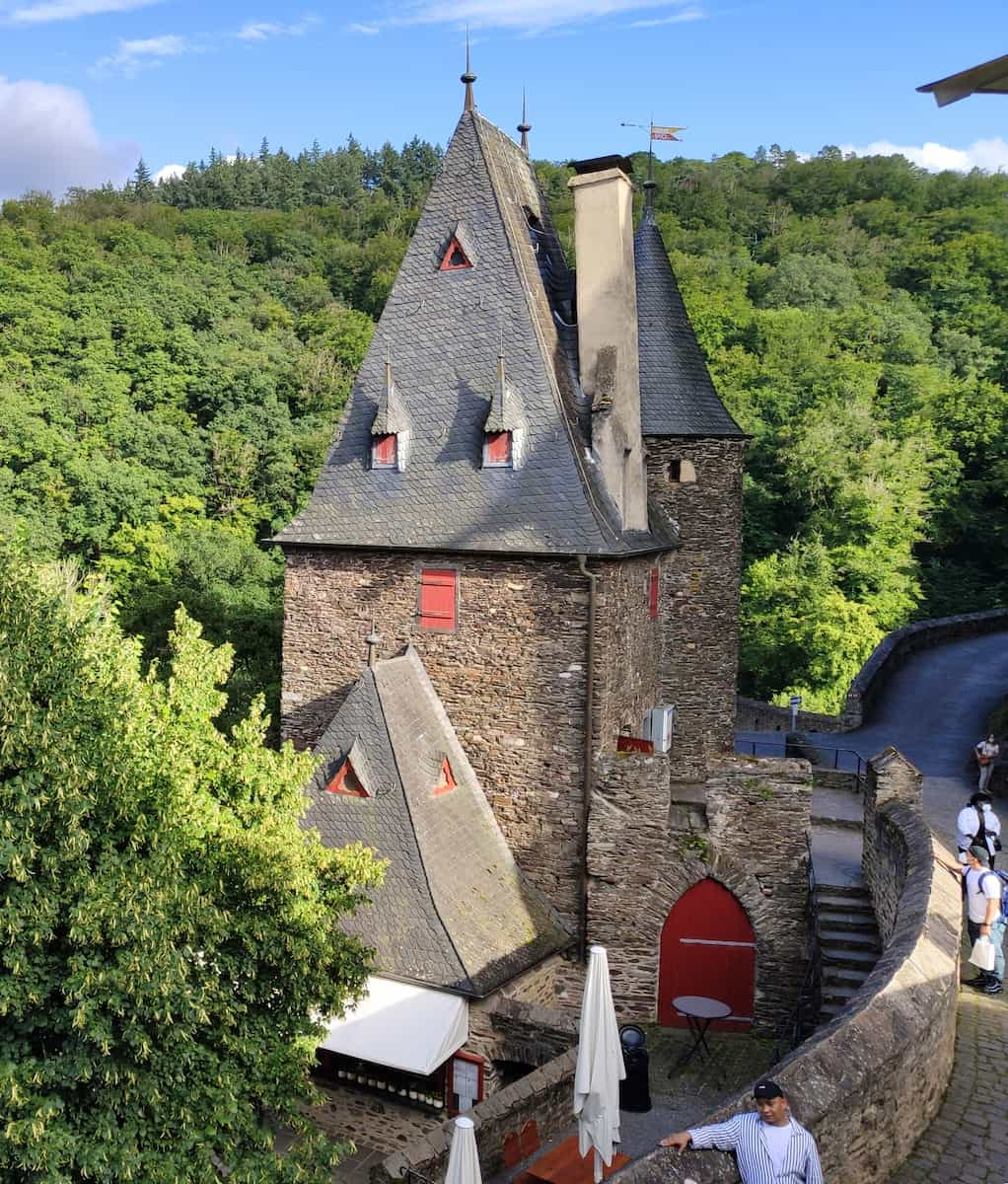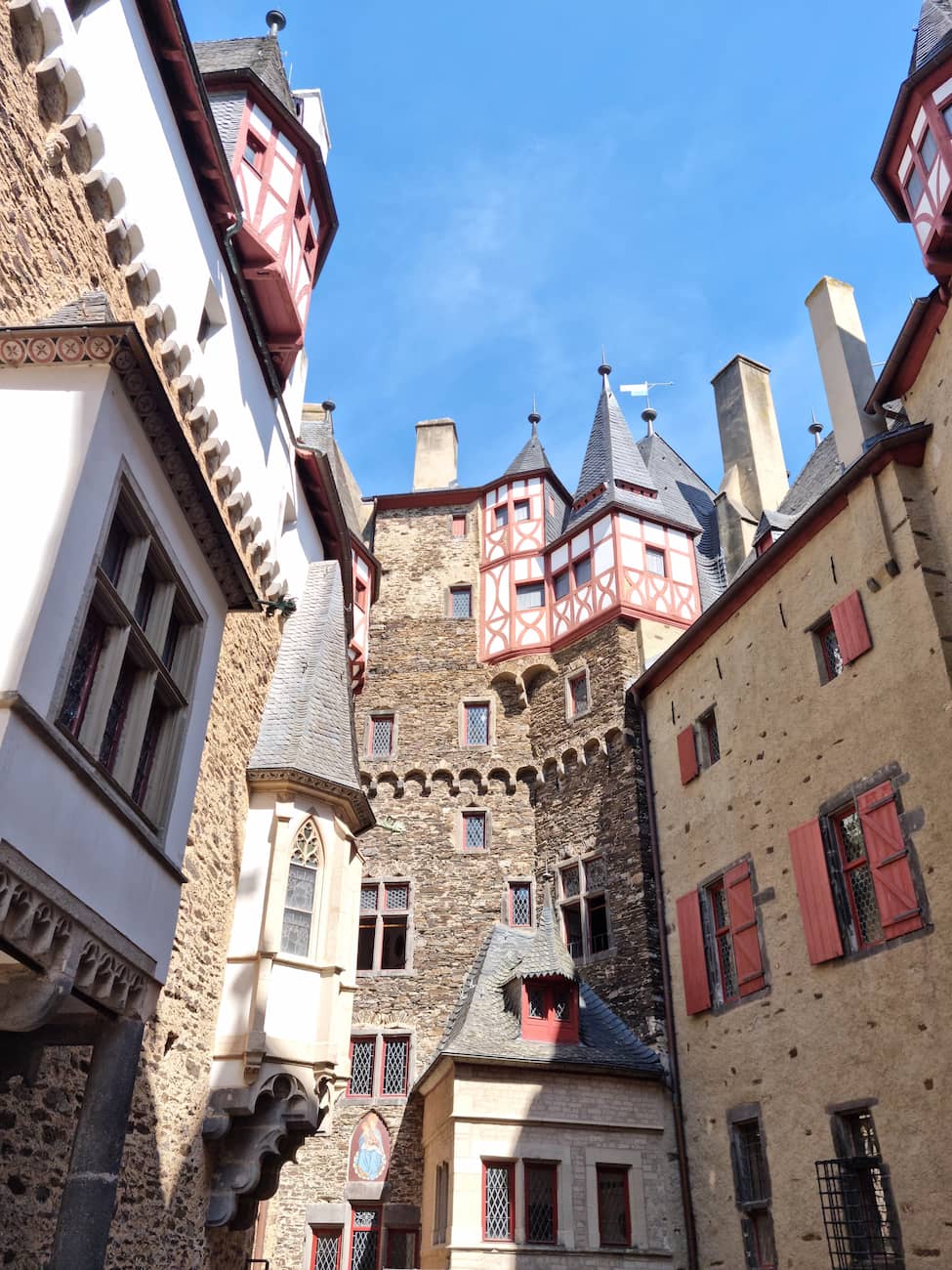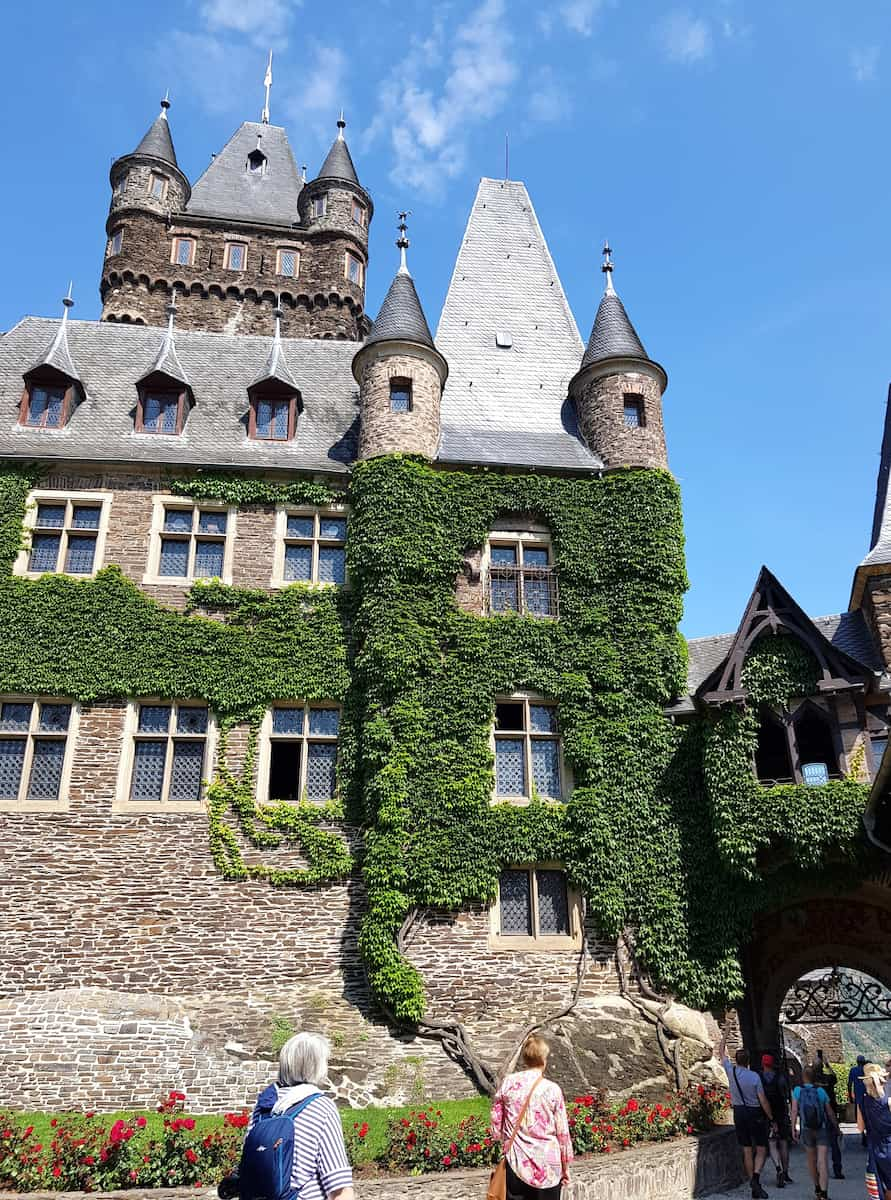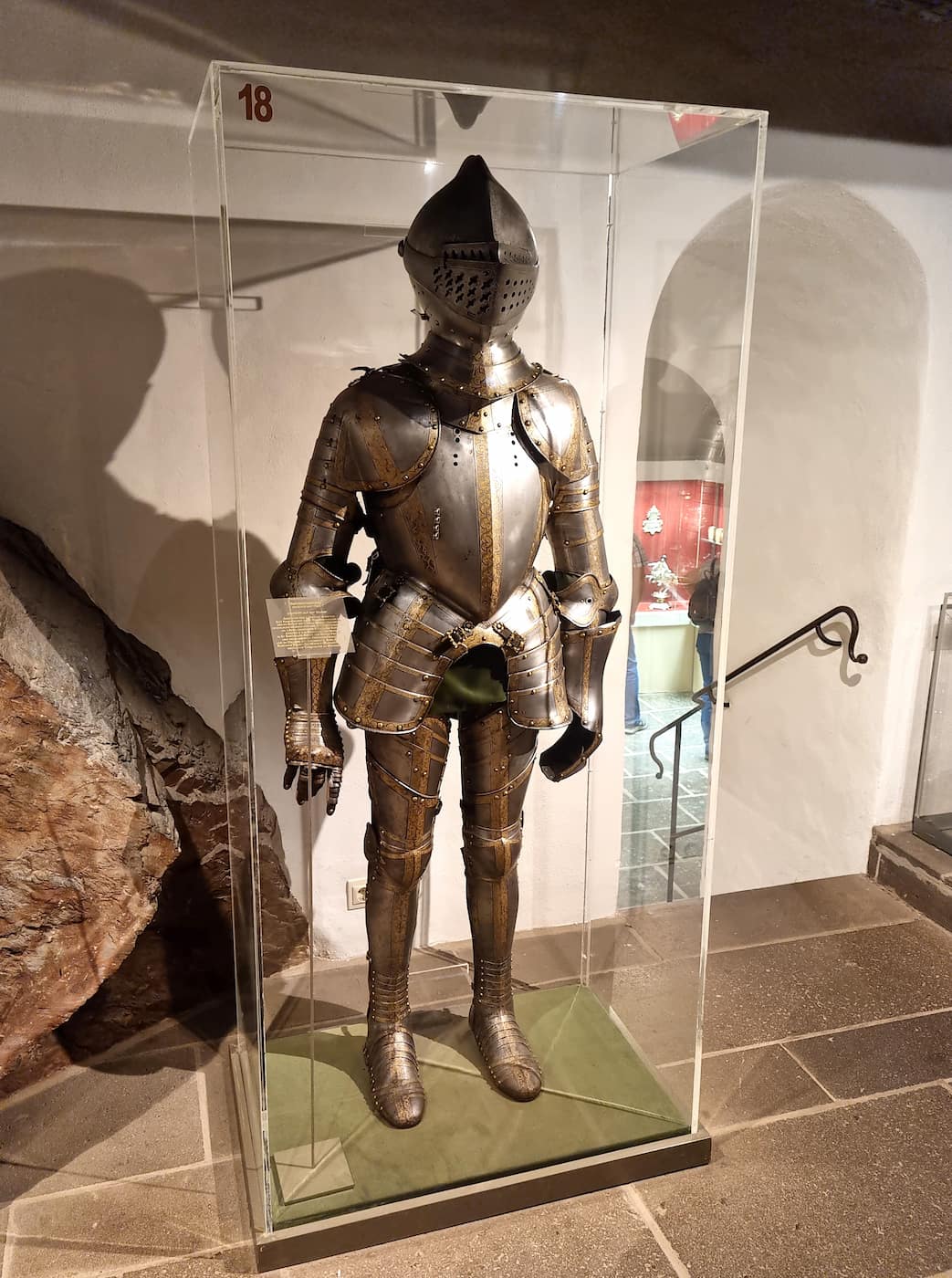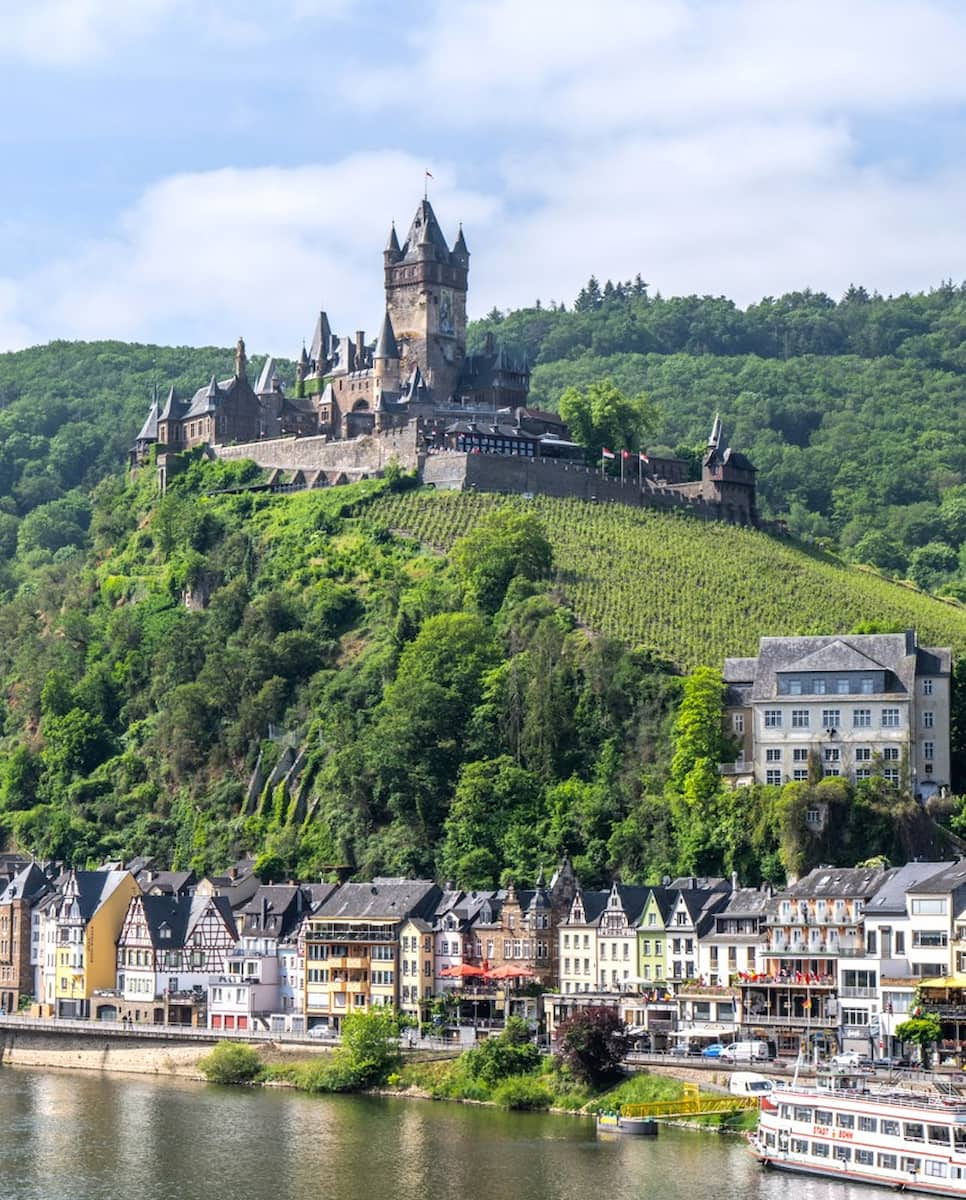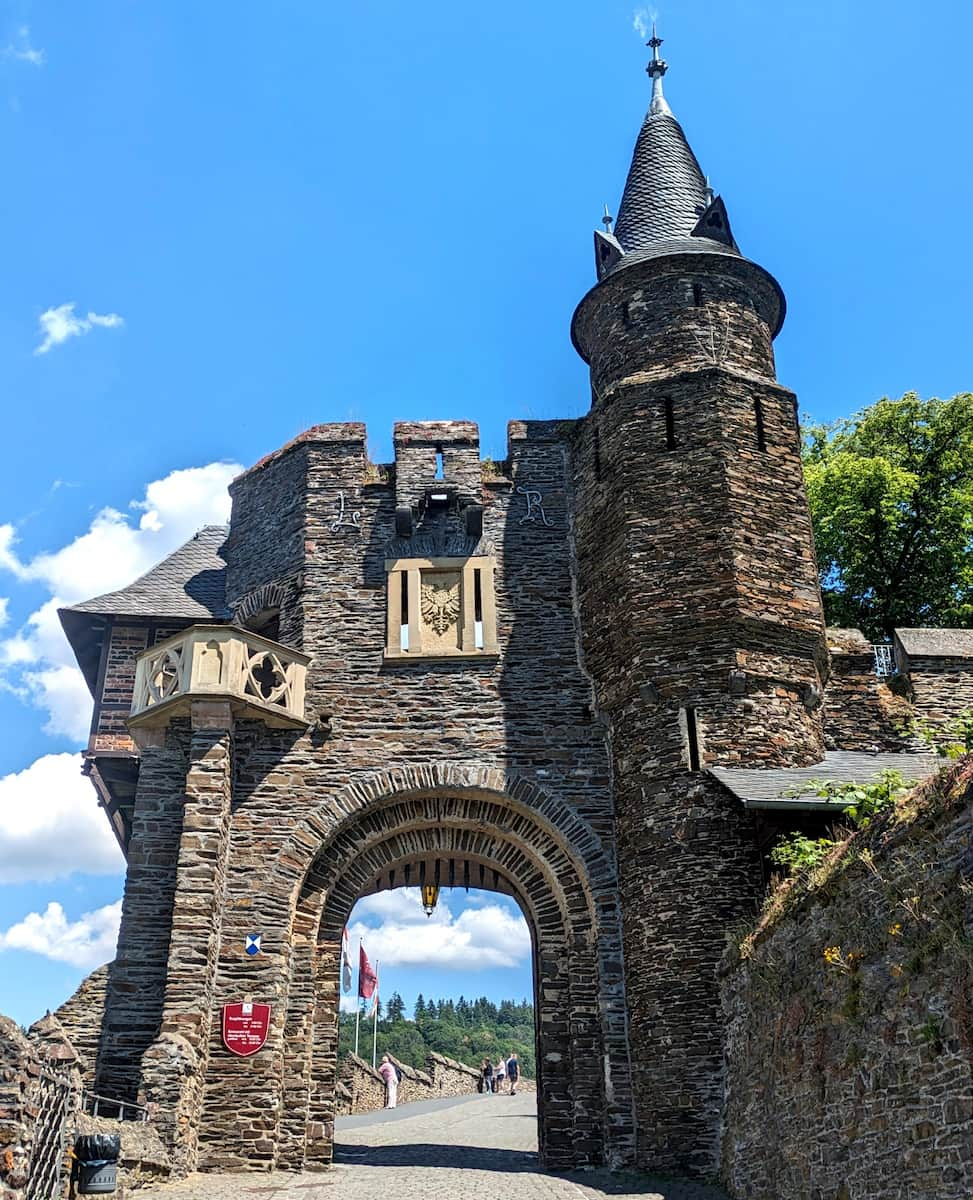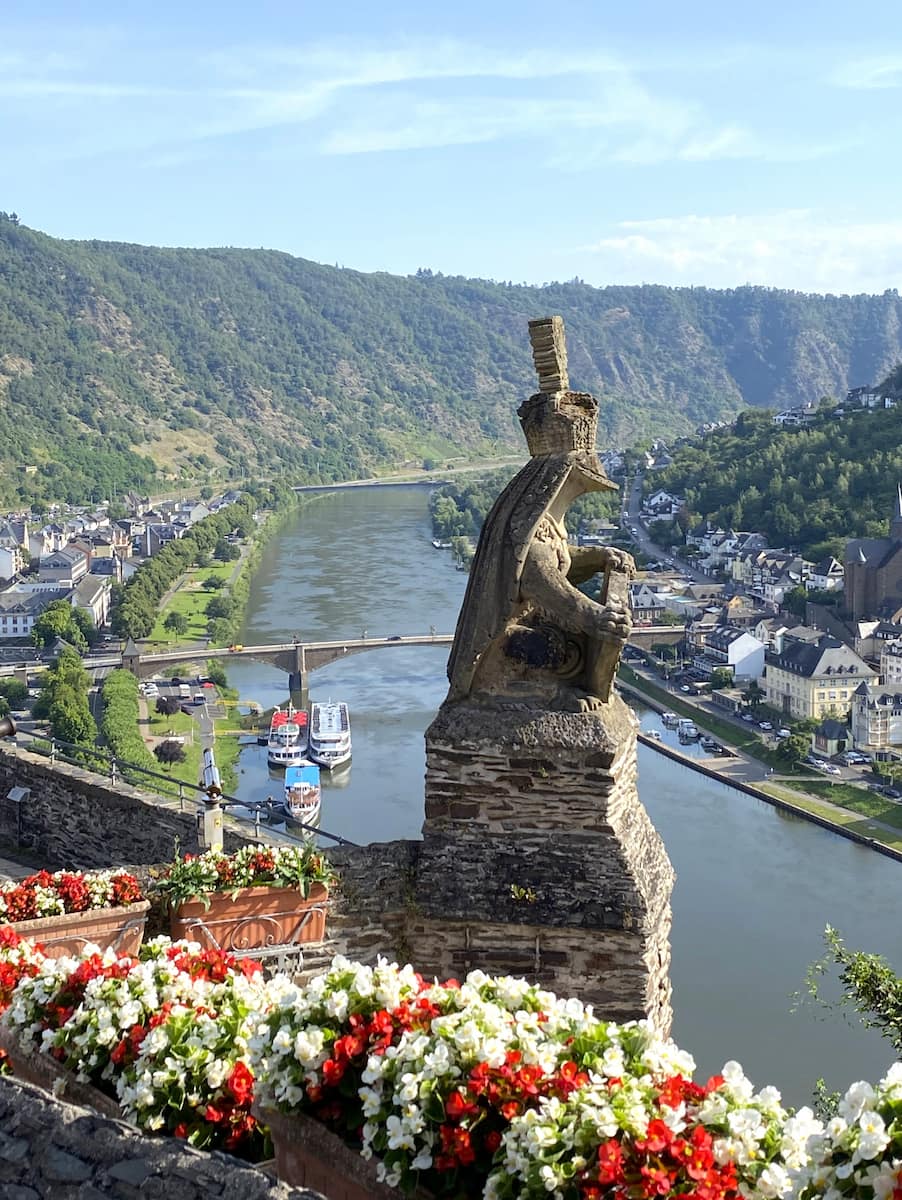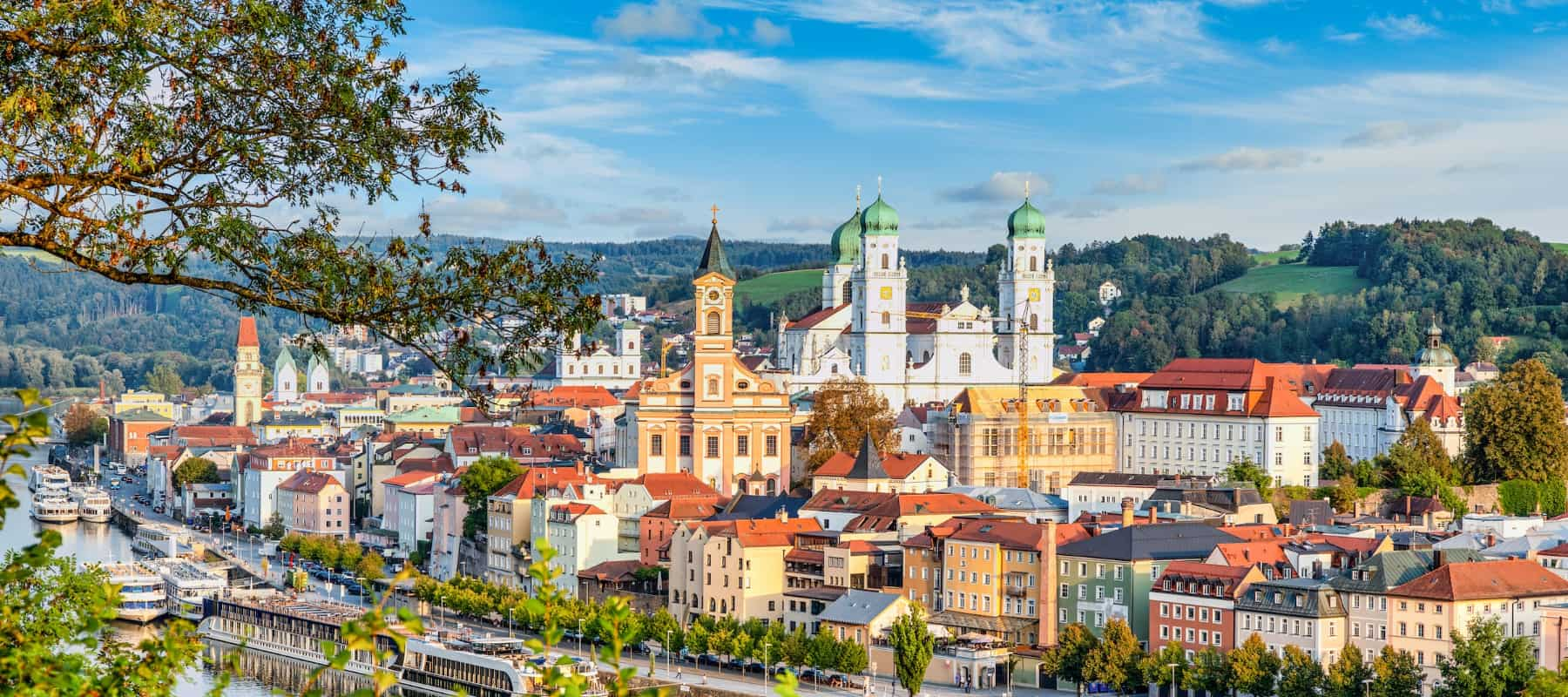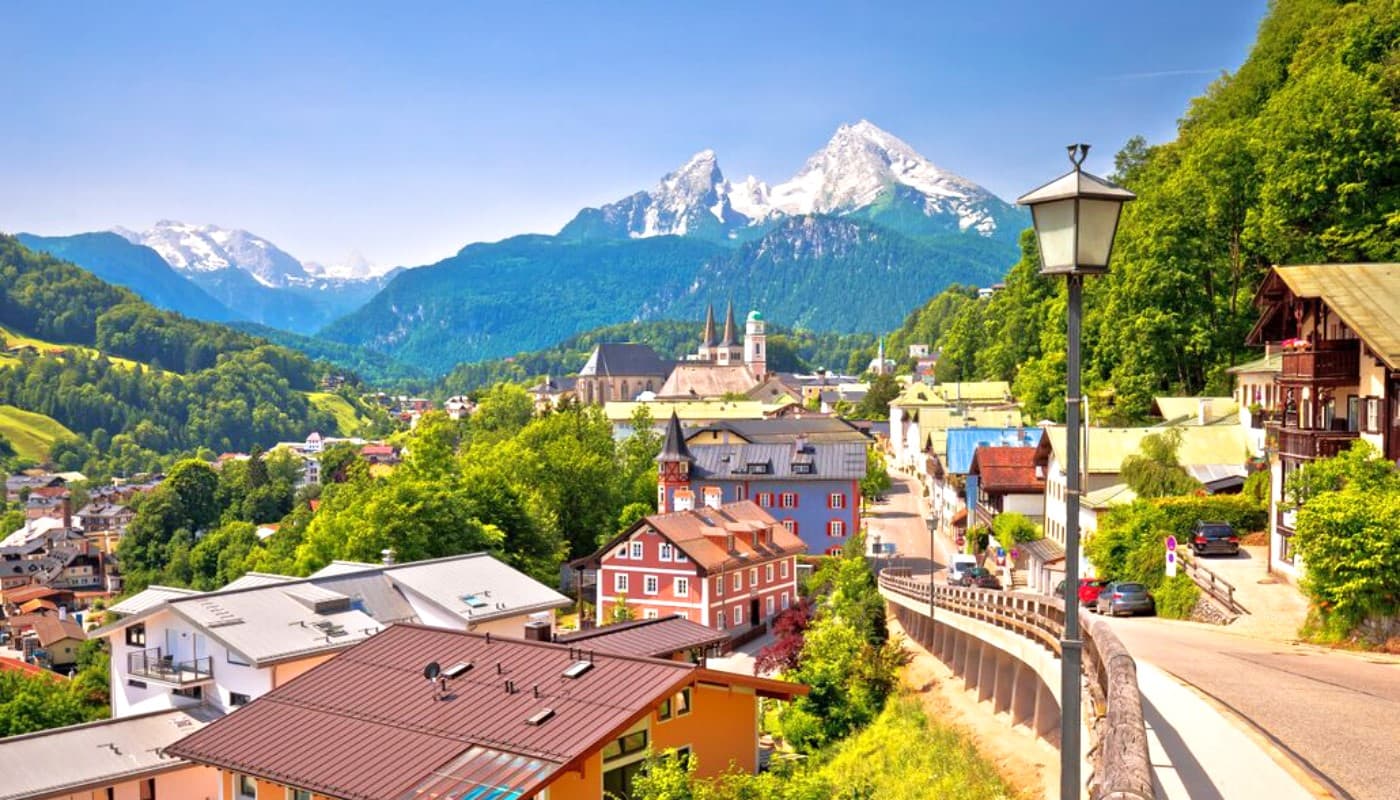Koblenz, a charming city in western Germany, is nestled at the confluence of the Rhine and Moselle rivers. This unique location has made Koblenz a significant cultural and historical hub for centuries. As you wander through its cobblestone streets, you’ll discover a blend of medieval architecture, picturesque riverside promenades, and stunning fortresses that tell stories of the past.
In this article, we’ll explore the top attractions and activities that make Koblenz a must-visit destination. From the iconic Deutsches Eck to the majestic Ehrenbreitstein Fortress, and from family-friendly adventures to romantic river cruises, we’ll guide you through the best experiences Koblenz has to offer.
🏠 Best Hotels in Koblenz
- 💎 Luxury Hotel: Haus Morjan
- ✨ 5-Star: Hotel Sander
- 🏨 4-Star: GHOTEL hotel & living Koblenz
- 🛏 3-Star: Hotel Jan van Werth
- 💸 Cheap: Super 8 by Wyndham Koblenz
- 🏢 Apartment: Schönes Apartment am Rhein - Zentral
- 👨👩👧👦 For Families: Ferienwohnung im Herzen der Koblenzer Altstadt
- 🏩 For Couples: Premium Apartments Koblenz
💁 Best Guided Tours
- From Koblenz: 2-Hour Castles and Palaces Boat Tour from € 25 (⭐ 4.8/5)
- Koblenz: Upper Middle Rhine Valley Castle Boat Tour from € 29 (⭐ 4.7/5)
- Koblenz: Panoramic Cruise on Moselle River to Winningen from € 19 (⭐ 4.9/5)
- Koblenz: Panoramic Old Town & Rhine Cruise from € 17 (⭐ 4.8/5)
- Koblenz: Wine Tasting Experience from € 35 (⭐ 5.0/5)
- Koblenz: Historical Sparkling Wine Museum Guided Tour from € 15 (⭐ 4.9/5)
Best Things To Do in Koblenz
1. Deutsches Eck (German Corner)
Historic Confluence. Standing at Deutsches Eck, where the mighty Rhine meets the Moselle, I felt the weight of German history beneath my feet. This artificial spit of land created at the confluence triangle isn’t just a pretty viewpoint – it’s Koblenz’s defining landmark, attracting around 2 million visitors annually.
Monumental Experience. The imposing equestrian statue of Emperor Wilhelm I dominates the landscape, standing proudly atop a 37-meter high monument. I was struck by how the statue symbolizes German unification, with 14 meters dedicated to the emperor himself riding alongside a genius figure.
River Promenades. I spent hours strolling along the charming riverside paths, watching boats navigate the meeting of these historic waterways. The promenades offer perfect spots for people-watching or simply soaking in the atmosphere where “Father Rhine meets Mother Moselle.”
UNESCO Heritage. Since 2002, Deutsches Eck has been part of the UNESCO World Heritage Upper Middle Rhine Valley. My tip: approach on foot through the picturesque old town alleyways rather than driving directly – you’ll discover hidden medieval architecture and charming squares along the way.
Historical Significance. The name “Deutsches Eck” comes from the Teutonic Order of knights who received this land in 1216. Interestingly, Koblenz itself derives from “Castellum apud Confluentes” – Latin for “fort at the confluence.”
2. Ehrenbreitstein Fortress
Panoramic Vistas. Perched 118 meters above the Rhine, Ehrenbreitstein Fortress offered me the most spectacular views of Koblenz and the river confluence. As Europe’s second-largest preserved fortress, its strategic position makes it a photographer’s dream.
Cable Car Adventure. Taking the Koblenz cable car across the Rhine was a highlight of my visit. For €12 round-trip (about $13), I floated over the river, enjoying breathtaking views of Deutsches Eck before gliding past the impressive fortress walls nestled against the rock.
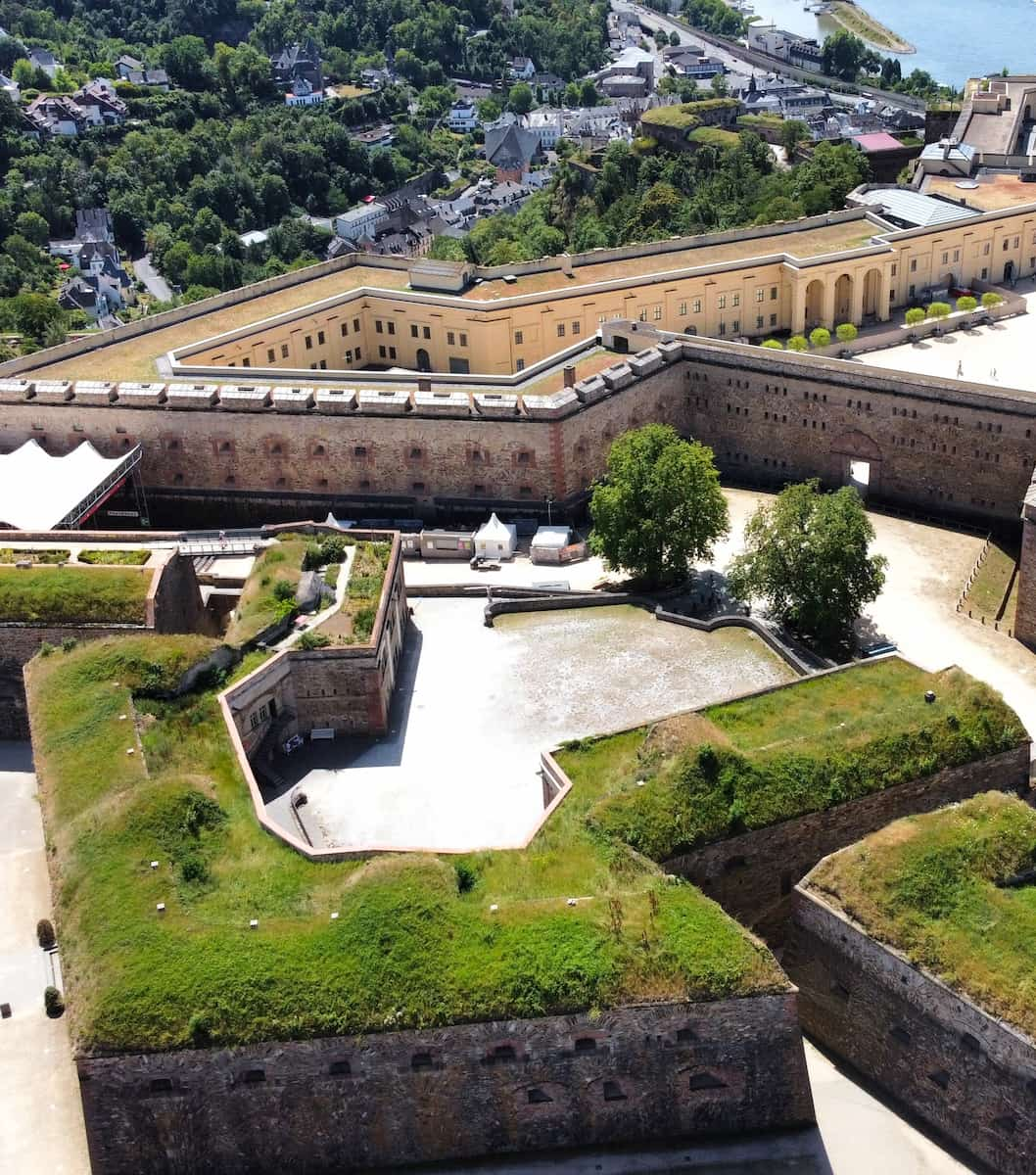
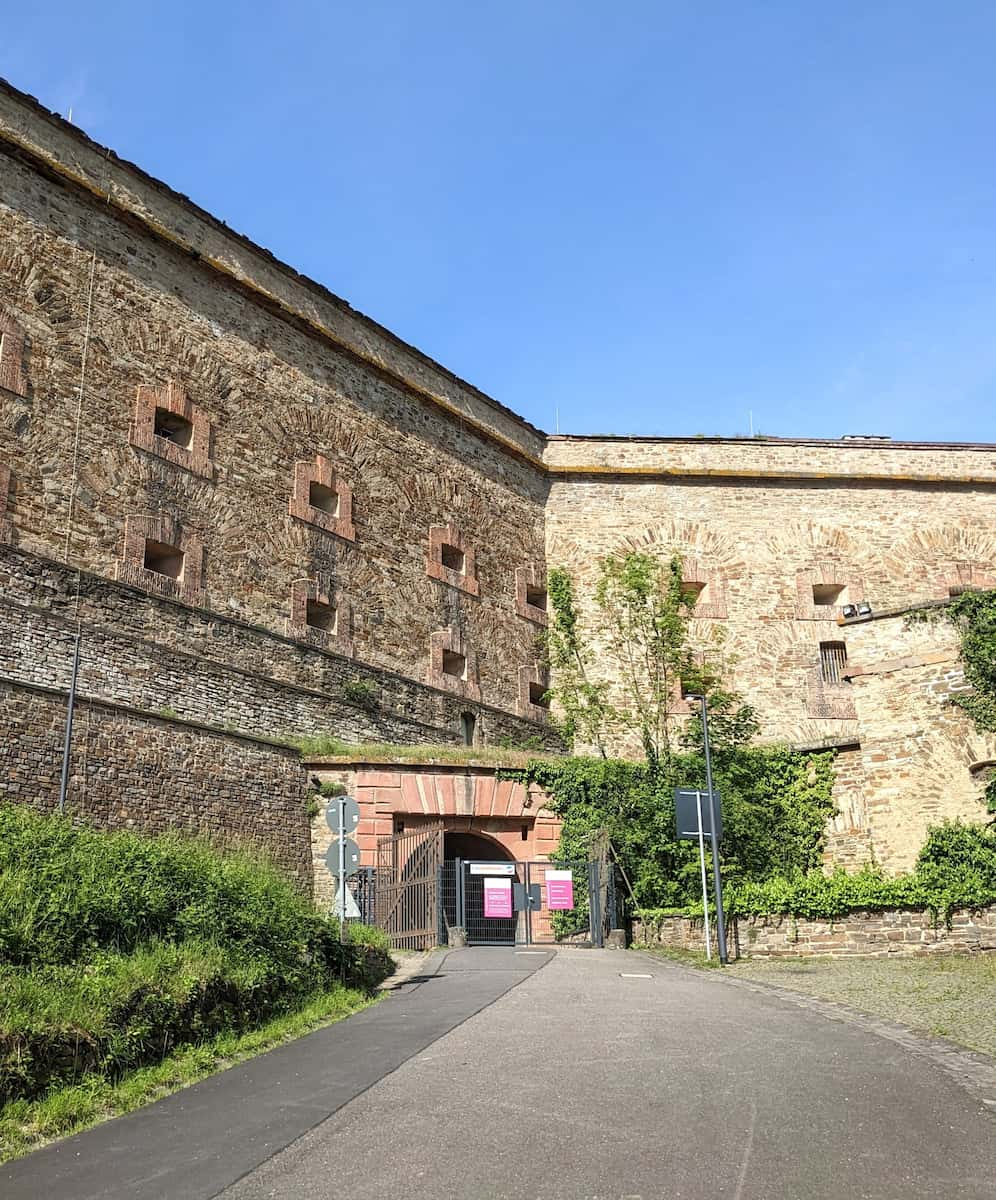
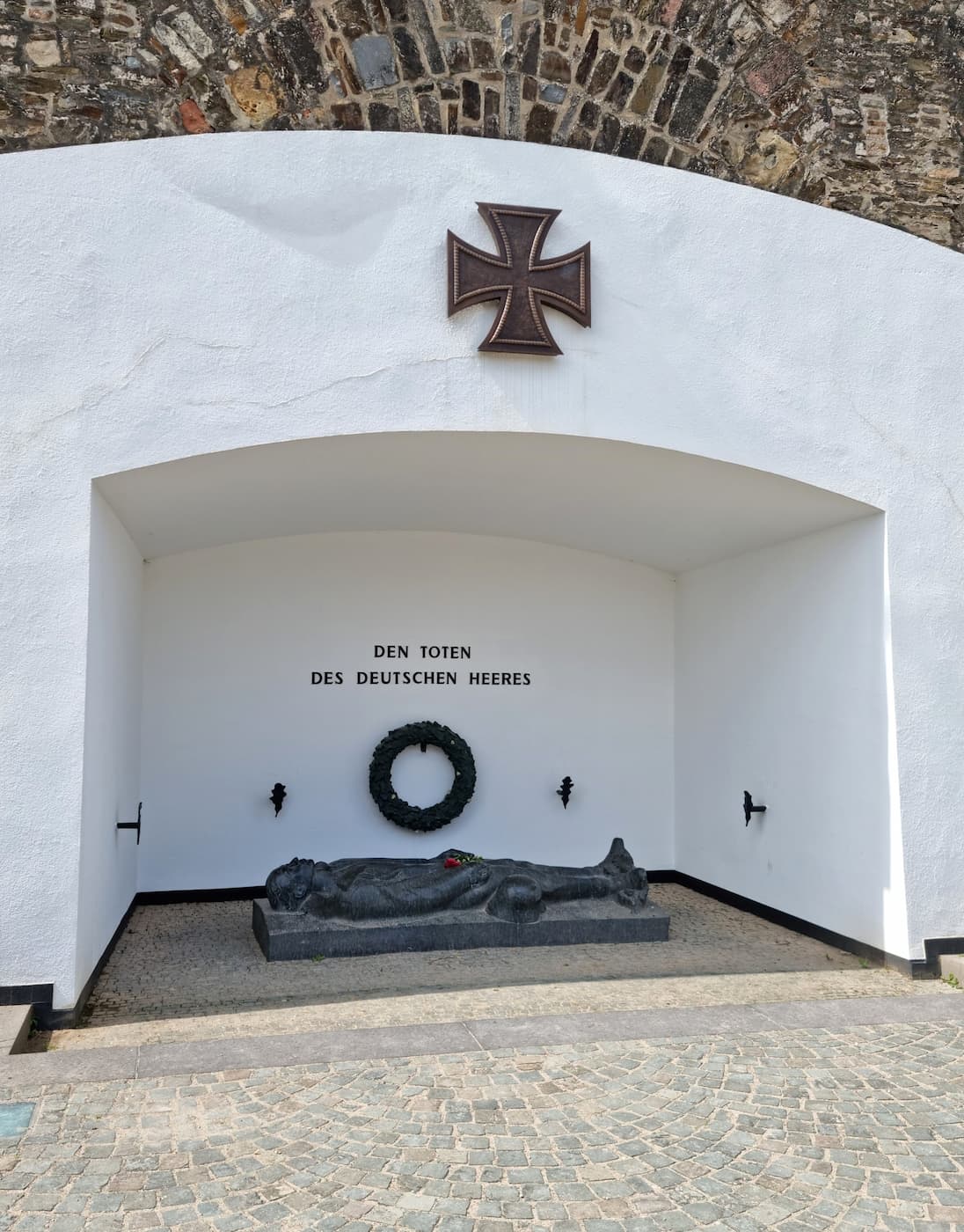
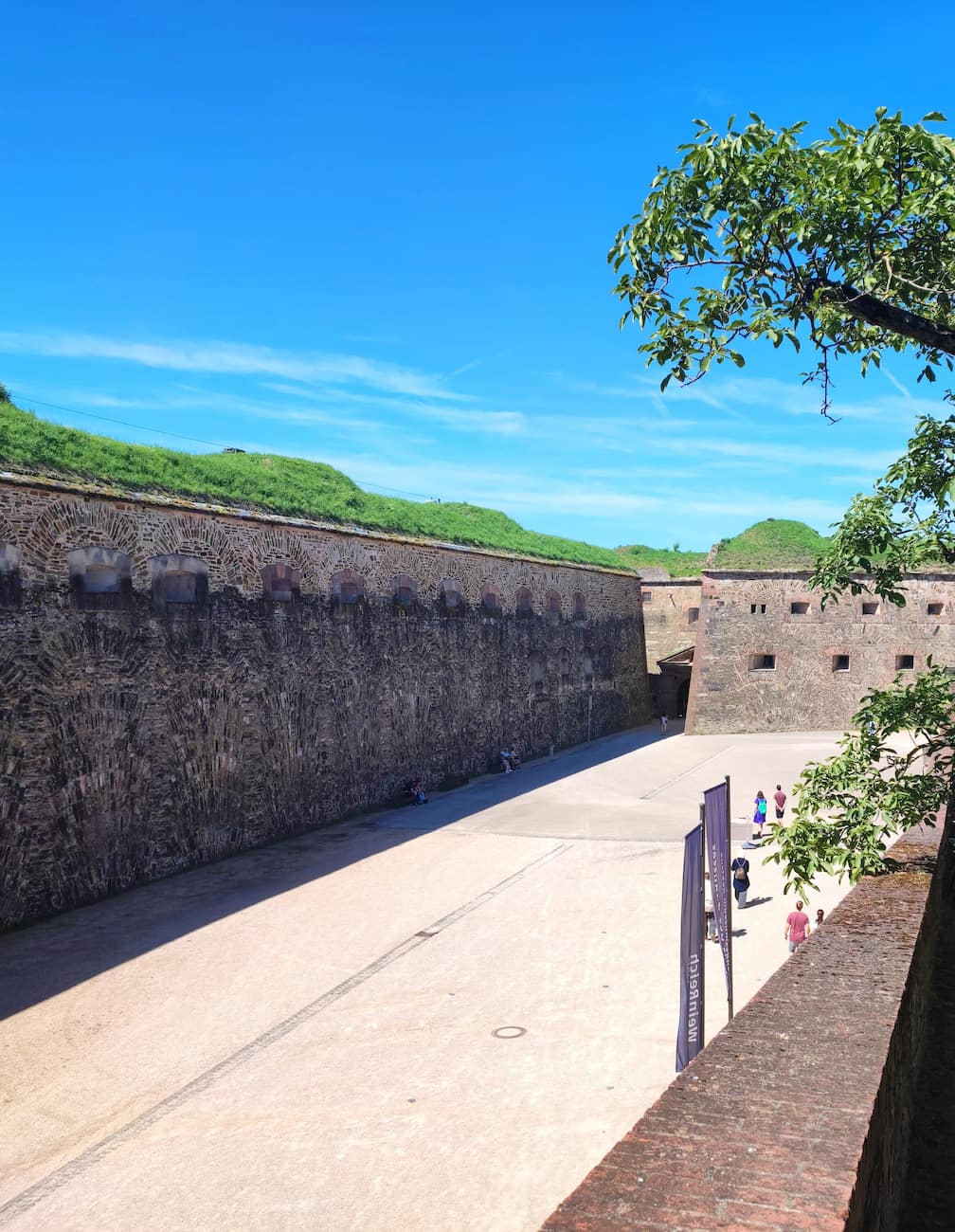
Military Marvel. Built between 1817-1828 by Prussia, this fortress could house up to 1,200 soldiers and was part of the formidable Festung Koblenz system. Walking through its massive walls, I imagined how it once guarded the valuable Holy Tunic relic from 1657 to 1794.
Cultural Center. Today, the fortress houses the fascinating Koblenz State Museum with diverse exhibitions on archaeology, technology, and fortress history. Don’t miss the “Vogel Greif” – one of Europe’s largest cannons and a powerful reminder of the region’s military past.
Practical Tips:
- Allow at least 3 hours to explore the fortress grounds and exhibitions
- Wear comfortable shoes for the uneven surfaces
- Visit on weekdays to avoid weekend crowds
- The fortress restaurant offers traditional German dishes with stunning views
| Experience | Cost (€) | Cost (USD) |
|---|---|---|
| Fortress Entry | 7€ | $7.60 |
| Cable Car (Round Trip) | 12€ | $13.00 |
| Guided Tour | 5€ | $5.40 |
| Museum Access | Included | Included |
⭐ Best Activities
- From Koblenz: 2-Hour Castles and Palaces Boat Tour: Enjoy a scenic 2-hour boat tour from Koblenz along the Rhine River, where you’ll see magnificent castles and palaces dotting the UNESCO World Heritage landscape. This cruise offers best views of medieval fortresses and charming riverside villages while you learn about the rich history of this legendary river valley.
3. Koblenz Cable Car
Aerial Adventure. I couldn’t resist taking the Koblenz Cable Car (Seilbahn Koblenz), Germany’s largest aerial tramway with 18 cabins gliding majestically over the Rhine. For €12 round-trip, this 850-meter journey offers unparalleled views of the city, the confluence of rivers, and the surrounding UNESCO World Heritage landscape.
Glass-Floor Thrills. My heart raced as I stepped onto the glass floor sections of the cable car, providing a unique perspective of the Rhine flowing 118 meters below. The sensation of floating above one of Europe’s most historic waterways while watching boats navigate the currents is simply unforgettable.
Practical Access. The cable car connects Konrad-Adenauer-Ufer on the west bank with Greiffenklaustr near Ehrenbreitstein Fortress. Operating daily from 9:30 AM to 5:30 PM (with extended hours during summer), it’s not just a tourist attraction but a practical way to reach the fortress without climbing steep paths.
Seasonal Experiences. During my spring visit, I enjoyed watching the cherry blossoms along the Rhine Gardens from above. The cable car operates year-round except for a brief maintenance period in January, with each season offering different perspectives of Koblenz’s changing landscape.
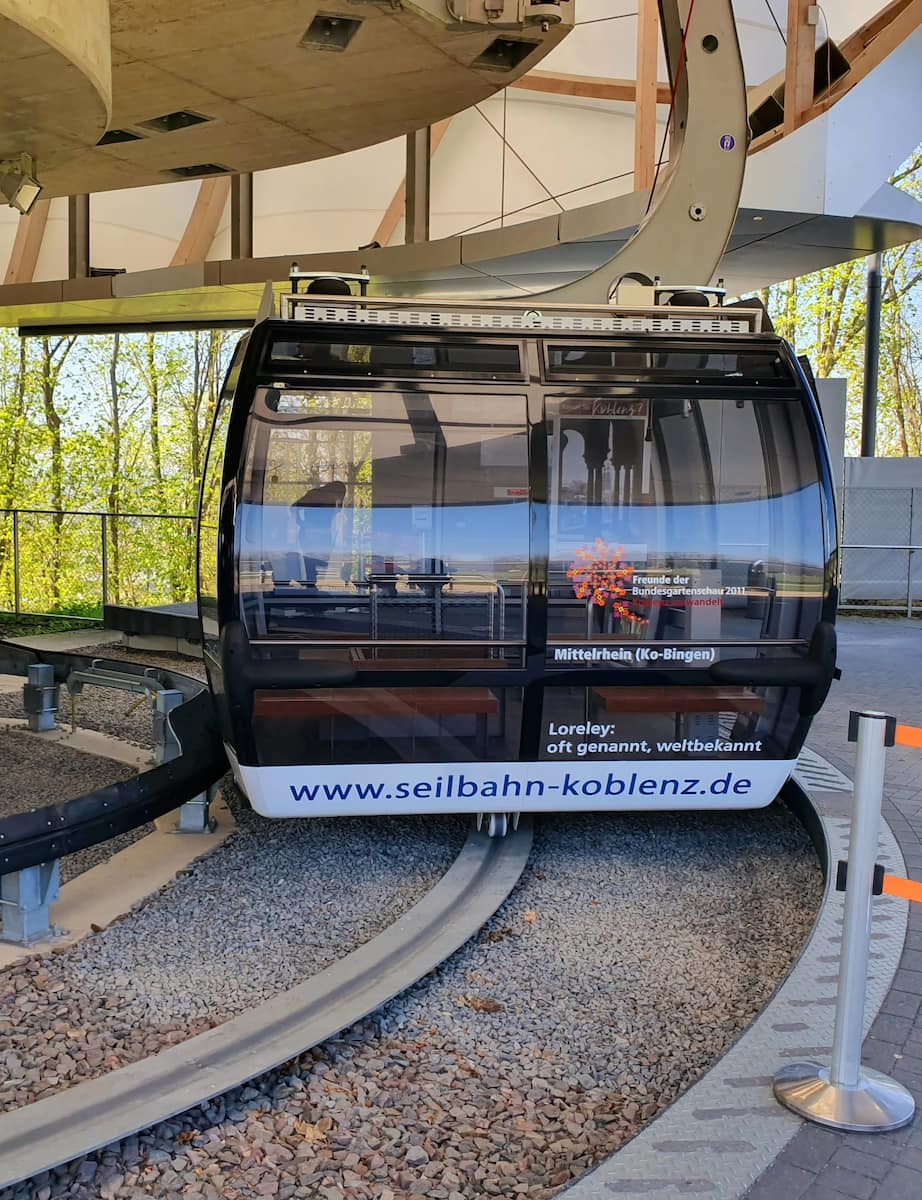

Photography Paradise. I recommend bringing your camera for spectacular shots of Deutsches Eck from above. My tip: ride in the late afternoon when the sun casts a golden glow over the rivers and historic buildings, creating perfect lighting conditions for memorable photos.
4. Stolzenfels Castle
Romantic Architecture. Wandering through Stolzenfels Castle, I was transported to the Romantic era of German history. This stunning neo-Gothic masterpiece sits majestically on the left bank of the Rhine, just 5 kilometers south of Koblenz’s center. Originally built in the 13th century and beautifully restored in the 1800s by Prussian Crown Prince Frederick William, it embodies Rhine Romanticism.
Royal Retreat. As I explored the castle’s ornate rooms, I discovered it was designed as a summer residence rather than a military fortress. King Friedrich Wilhelm IV transformed the medieval ruins into this fairy-tale palace with help from renowned architect Karl Friedrich Schinkel, creating a perfect blend of medieval charm and 19th-century royal comfort.
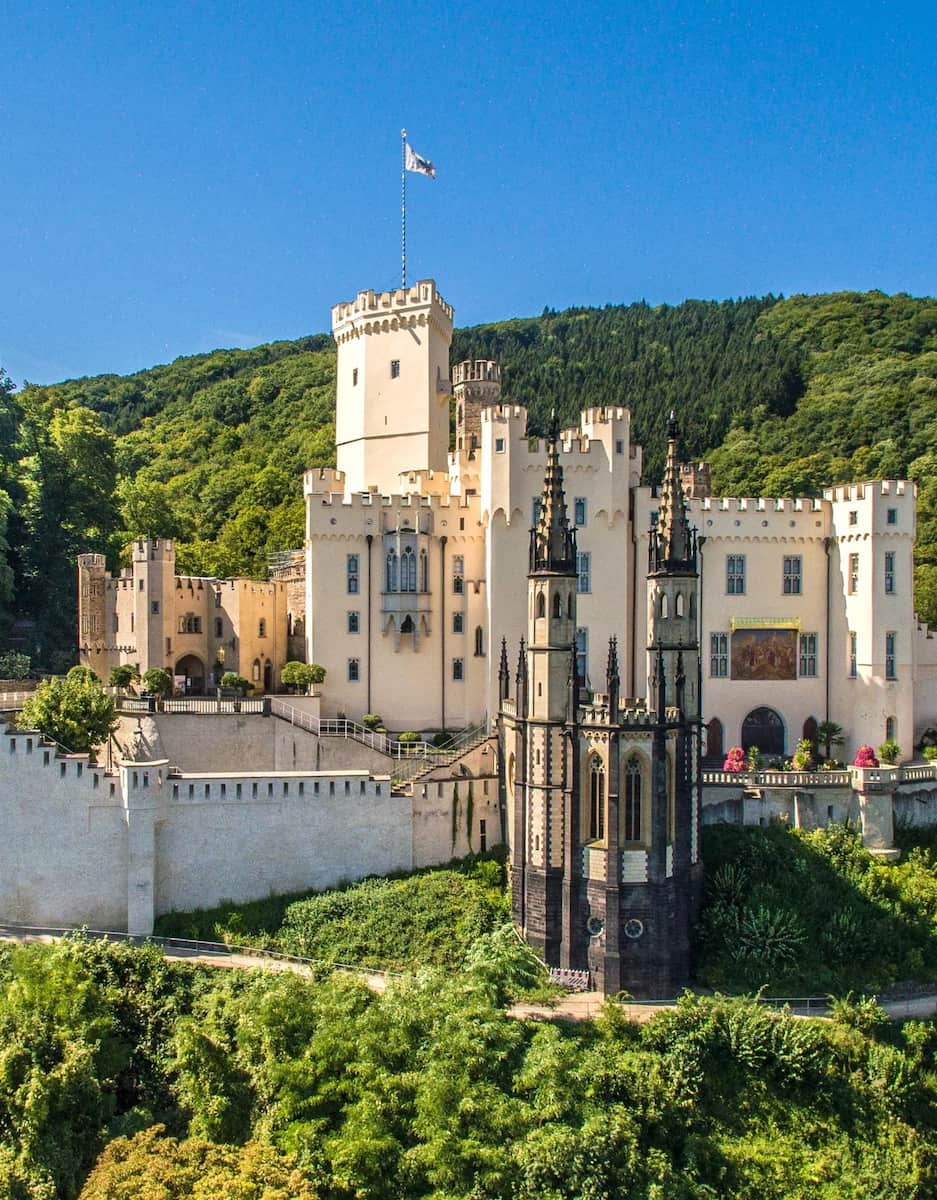

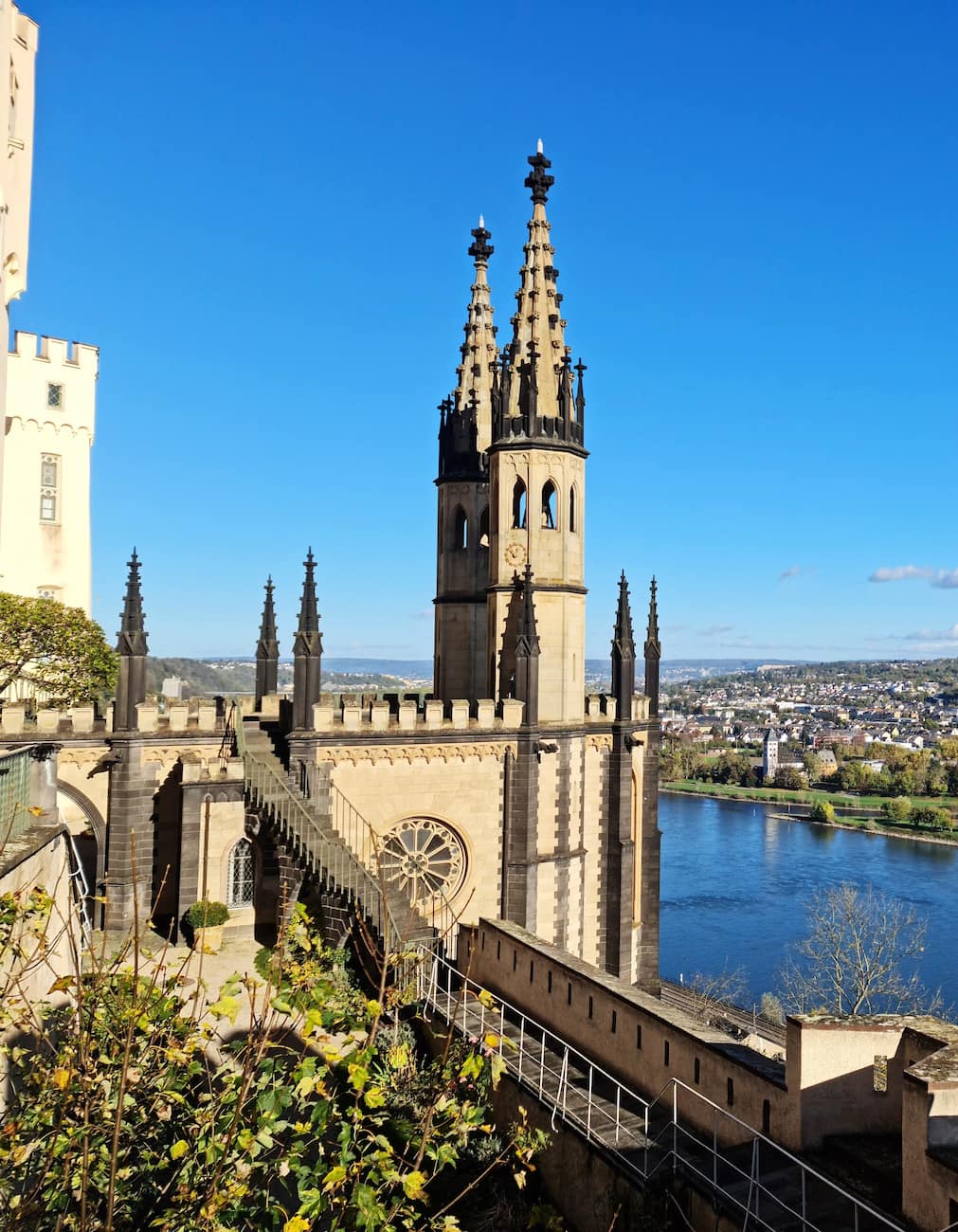
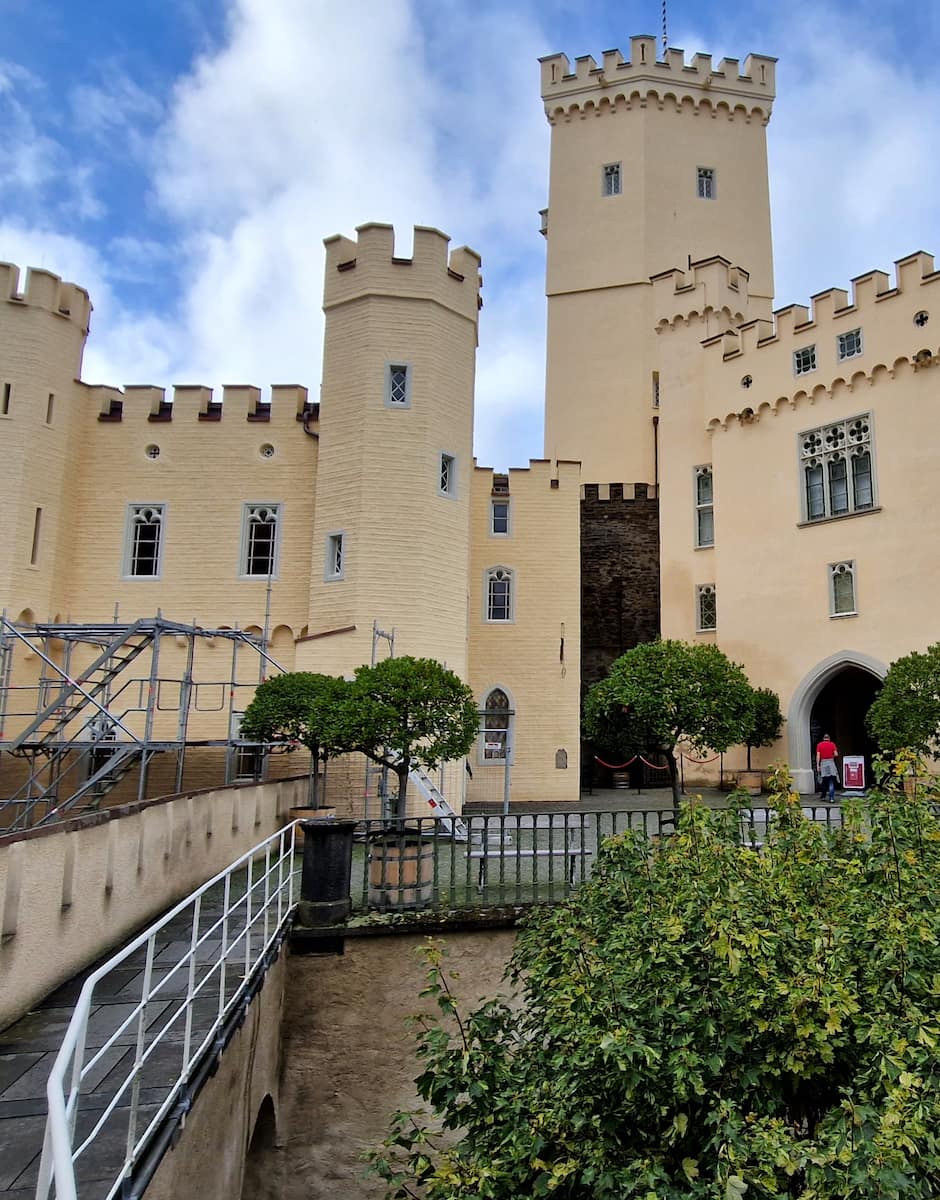
Garden Paradise. The terraced gardens surrounding Stolzenfels were perhaps my favorite discovery. Designed in Mediterranean style with pergolas, fountains and exotic plants, they offer spectacular views of the Rhine Valley below. I spent an hour simply sitting among the greenery, watching boats navigate the river’s gentle curves.
Art Collection. Inside, the castle houses an impressive collection of medieval armor, weapons and paintings. The Knights’ Hall particularly impressed me with its vaulted ceiling and historical artifacts that tell stories of Rhine Valley’s rich past. Each room feels authentically preserved rather than artificially reconstructed.
Visitor Information:
- Open Tuesday-Sunday from March to November
- Guided tours only (45 minutes, in German with English information sheets)
- Wear comfortable shoes for the 15-minute uphill walk from the parking area
| Stolzenfels Experience | Cost (€) | Cost (USD) |
|---|---|---|
| Castle Entry & Guided Tour | 6€ | $6.50 |
| Reduced Entry (Students/Seniors) | 4.50€ | $4.90 |
| Children under 6 | Free | Free |
| Parking | 2€ | $2.20 |
⭐ Best Activities
- Koblenz: Upper Middle Rhine Valley Castle Boat Tour: Discover the beauty of the Middle Rhine Valley on this captivating boat tour from Koblenz. Perfect for photography enthusiasts and history lovers seeking to experience the romantic Rhine landscape.
5. Old Town (Altstadt)
Medieval Charm. Koblenz’s Old Town captivated me with its narrow cobblestone streets and well-preserved buildings spanning centuries of architectural styles. Unlike many German cities heavily damaged during WWII, Koblenz’s historic center retains authentic medieval, baroque and renaissance structures that create a living museum atmosphere.
Jesuitenplatz Magic. This picturesque square became my favorite spot for morning coffee. Surrounded by baroque buildings including the former Jesuit College (now city hall), the square features the quirky Schängelbrunnen fountain with its mischievous boy who unexpectedly spits water at unsuspecting visitors – I got splashed twice!
Hidden Courtyards. Wandering through the Old Town, I discovered secret courtyards behind unassuming doorways. The Four Towers (Vier Türme) area particularly charmed me with its four corner buildings featuring distinctive turrets marking the former city boundaries, now housing cozy restaurants and boutiques.
Historical Landmarks. The Historiensäule at Görresplatz tells Koblenz’s 2,000-year story through intricate sculptures spiraling around a column. Nearby, I was moved by the simplicity of the Liebfrauenkirche (Church of Our Lady) with its beautiful Gothic interior and peaceful atmosphere away from tourist crowds.
Local Experiences. For authentic Koblenz flavors, I stopped at Weindorf (Wine Village) on Münzplatz where local vintners serve regional Rieslings and Spätburgunders. A glass of crisp Mosel wine (€4.50/$4.90) paired perfectly with traditional Flammkuchen (€8.50/$9.20) while watching locals go about their daily routines.
| Old Town Experiences | Cost (€) | Cost (USD) |
|---|---|---|
| Walking Tour (90 min) | 12€ | $13.00 |
| Coffee at Jesuitenplatz | 3.50€ | $3.80 |
| Wine Tasting (3 glasses) | 12€ | $13.00 |
| Local Lunch | 10-15€ | $11-16 |
⭐ Best Activities
- Koblenz: Historical Sparkling Wine Museum Guided Tour: Discover the fascinating world of German sparkling wine production at Koblenz’s Historical Sparkling Wine Museum. This guided tour takes you through ancient cellars and production facilities, explaining traditional methods and offering tastings of premium sparkling wines in an atmospheric setting steeped in history.
6. Rhine Valley Cruises
Scenic Waterways. Gliding along the Middle Rhine Valley aboard a river cruise became the highlight of my Koblenz adventures. The stretch between Koblenz and Bingen is particularly spectacular, with medieval castles perched dramatically on hillsides and charming wine villages nestled along the riverbanks.
Historic Vessels. I splurged on a nostalgic cruise aboard the RMS Goethe, a beautifully preserved paddle steamer from 1913. While regular modern cruises start at €15 ($16.30), this historic vessel experience costs €29 ($31.50) but offers unmatched atmosphere with its polished wood interiors and open-air viewing decks perfect for photography.
Vineyard Views. As we sailed past terraced vineyards clinging to steep slate slopes, I learned these challenging growing conditions produce some of Germany’s most distinctive Rieslings. The cruise guide pointed out specific vineyards dating back to Roman times, with some slopes so steep they must be worked entirely by hand.
Castle Spotting. I counted over a dozen castles during my three-hour cruise, each with fascinating stories of medieval knights, river tolls, and romantic legends. The imposing Marksburg Castle particularly impressed me as the only Rhine fortress never destroyed throughout history, standing proudly on its rocky perch since the 13th century.
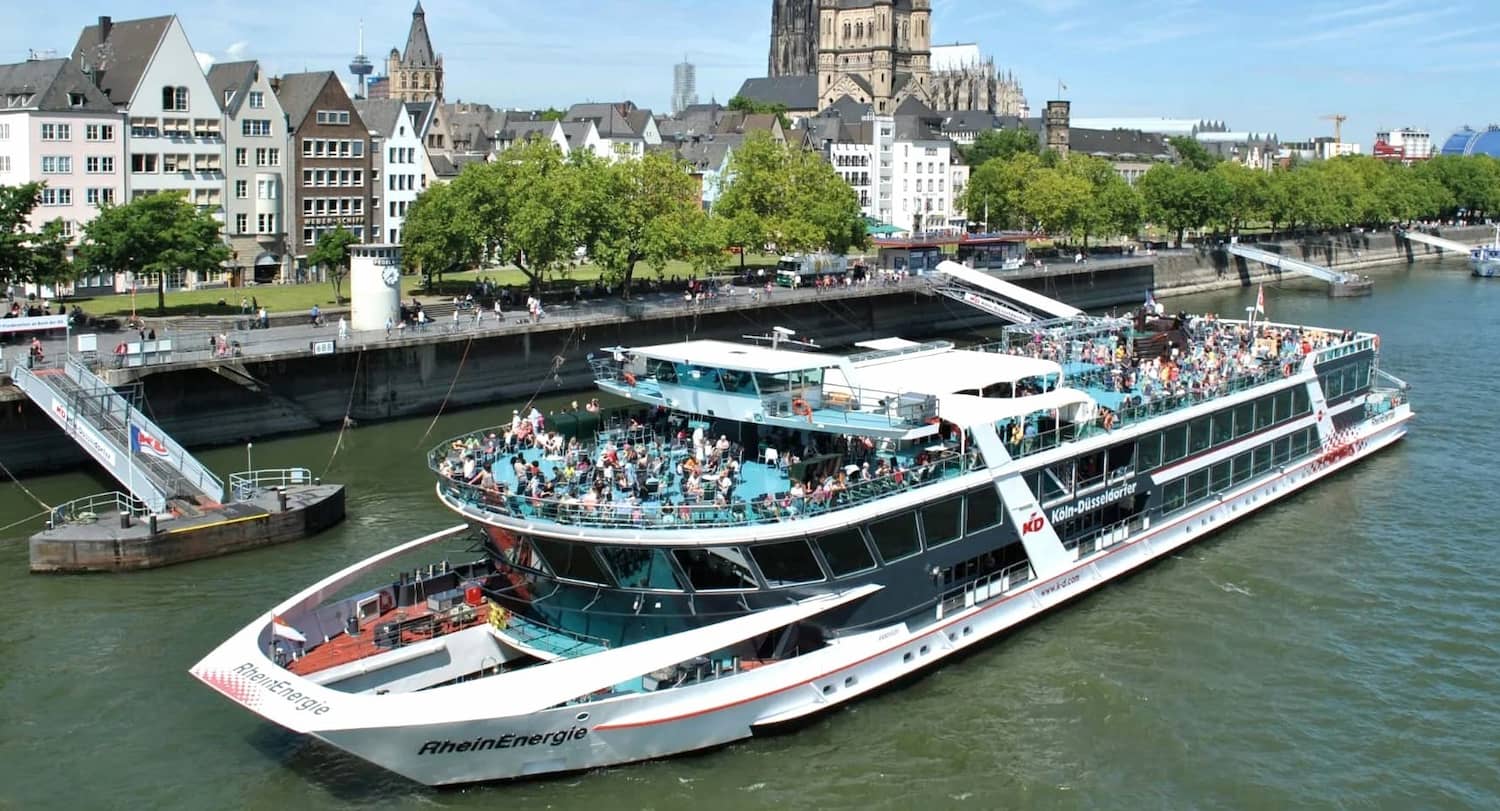
Practical Tips:
- Book morning cruises for calmer waters and fewer crowds
- Bring layers as the river breeze can be chilly even in summer
- Most cruises depart from the Konrad-Adenauer-Ufer pier near Deutsches Eck
⭐ Best Tours
- Koblenz: Panoramic Cruise on Moselle River to Winningen: Experience the picturesque Moselle River on this panoramic cruise from Koblenz to the charming wine village of Winningen. Enjoy breathtaking views of vineyard-covered hillsides, historic castles, and quaint riverside communities while learning about the region’s winemaking traditions and cultural heritage.
- Koblenz: Panoramic Old Town & Rhine Cruise: Combine the best of Koblenz with this dual experience featuring a guided tour of the historic Old Town followed by a scenic Rhine River cruise.
7. Forum Confluentes
Cultural Hub. The striking white cube of Forum Confluentes stands out boldly in Koblenz’s central Zentralplatz. Opened in 2013, this modern cultural center houses the city library, tourist information center, and two fascinating museums under one architecturally impressive roof.
Interactive Exhibits. I spent hours exploring the Romanticum, an interactive exhibition that brings Rhine Romanticism to life through multimedia displays. For €5 ($5.40), I virtually sailed down the Rhine, composed romantic poetry, and learned about the region’s artistic heritage that inspired generations of painters, musicians, and writers.
Art Collections. The Mittelrhein Museum on the upper floors impressed me with its extensive collection spanning 2,000 years of regional history. The panoramic windows offer stunning views of Koblenz’s rooftops while inside, masterpieces by regional artists tell the story of Rhine Valley culture through the centuries.
Architectural Marvel. The building itself deserves attention with its innovative design featuring a façade that changes appearance throughout the day as light conditions shift. At night, subtle lighting transforms the cube into a glowing landmark visible throughout the city center.
Local Gathering Place. Beyond its cultural offerings, I discovered Forum Confluentes serves as a community hub where locals gather at the ground-floor café. I enjoyed a perfectly brewed cappuccino (€3.20/$3.50) while watching Koblenz life unfold through the floor-to-ceiling windows overlooking the bustling square.
| Forum Confluentes | Cost (€) | Cost (USD) |
|---|---|---|
| Romanticum Entry | 5€ | $5.40 |
| Mittelrhein Museum | 6€ | $6.50 |
| Combined Ticket | 9€ | $9.80 |
8. Kaiserin-Augusta-Anlagen (Rhine Gardens)
Riverside Splendor. Strolling along the Kaiserin-Augusta-Anlagen, I discovered one of Koblenz’s most enchanting green spaces. This three-and-a-half-kilometer stretch of manicured gardens and promenades extends along the east bank of the Rhine from the Electoral Palace to Oberwerth island, offering a perfect escape from the bustling city center.
Royal History. Created for Empress Augusta, wife of Emperor Wilhelm I, these gardens were completed in 1861 and remain remarkably preserved. I was fascinated to learn they represent one of Germany’s earliest public riverside promenades, designed in the English landscape garden style that was fashionable among European royalty in the 19th century.
Sculpture Trail. As I wandered through the gardens, I encountered numerous sculptures and monuments that tell stories of Koblenz’s rich history. My favorite was the “Father Rhine and Mother Mosel” statue, symbolizing the meeting of the two rivers that define the city’s geography and cultural identity.
Seasonal Blooms. Visiting in spring, I was treated to spectacular displays of tulips, daffodils, and cherry blossoms lining the pathways. The gardens transform with each season – in summer, rose gardens burst with color, while autumn brings golden foliage that frames the Rhine in warm hues.
Practical Information: The gardens are open year-round with free entry, making them a perfect budget-friendly activity. I recommend visiting in the late afternoon when the light is softest for photographs of the Rhine. The promenade is wheelchair accessible and features several cafés where you can pause for refreshments.
| Garden Features | Best Viewing Season |
|---|---|
| Cherry Blossoms | April |
| Rose Gardens | June-August |
| Autumn Foliage | October |
| Sculpture Trail | Year-round |
| Rhine Views | Year-round |
9. Kurfürstliches Schloss
Cultural Heritage. The Kurfürstliches Schloss stands as one of the most significant palace buildings constructed in Germany just before the French Revolution. As I approached from the city center, I was impressed by how this neoclassical structure breaks with the previous Baroque tradition that dominated Koblenz’s architecture.
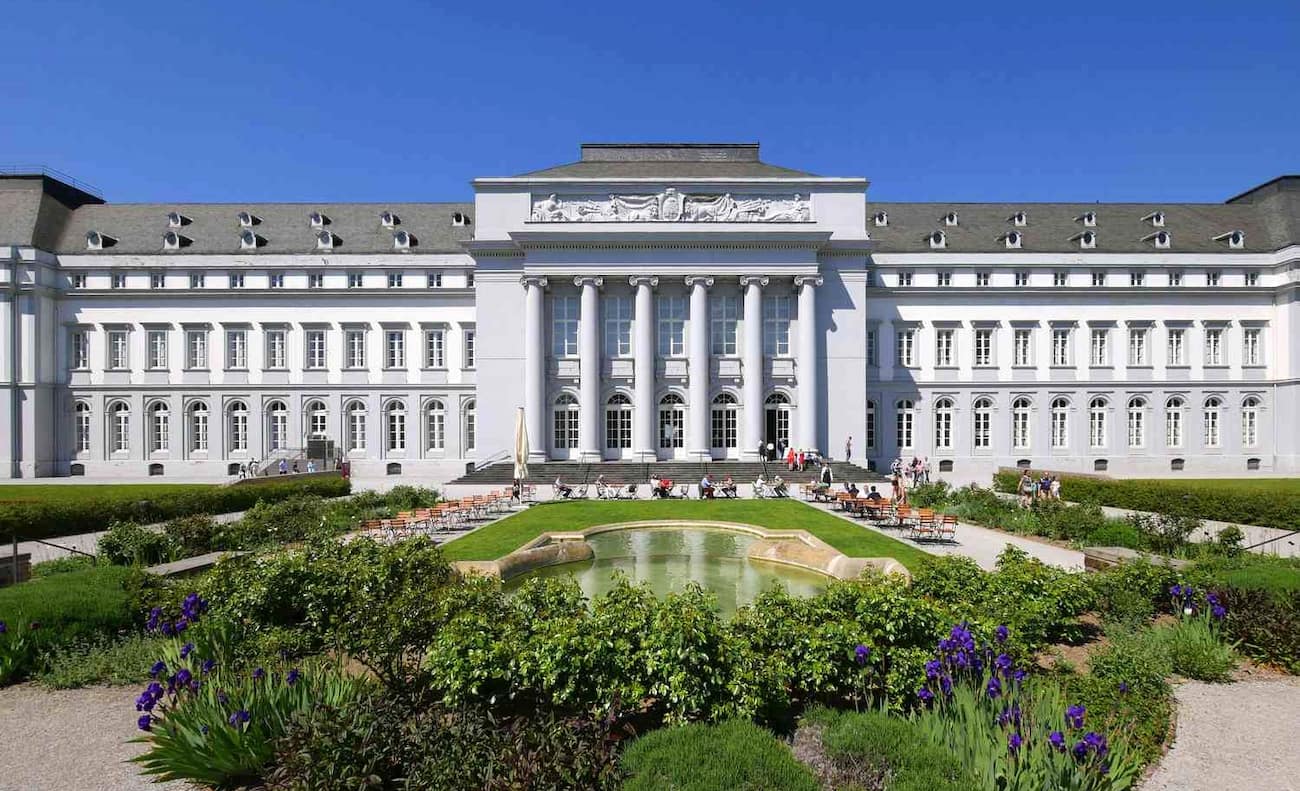
Scenic Integration. What makes this palace truly special is how it was designed to incorporate the surrounding Rhine landscape. Walking through the main entrance toward the river side, I experienced exactly what the architect intended – a seamless flow from city to garden to the majestic Rhine River views, with the Middle Rhine Valley UNESCO World Heritage site stretching before me.
Artistic Details. On the river-facing side, I spotted the impressive relief by sculptor Sebastian Pfaff depicting an allegory of the Rhine and Mosel rivers, along with the electoral coat of arms and symbols of ecclesiastical and temporal power. These artistic touches tell the story of Koblenz’s important position at the confluence of two major European waterways.
Modern Purpose. Today, the palace houses various federal authorities while also serving as a venue for special events and festive banquets. During the 2011 Federal Garden Show (BUGA), the palace and its grounds were beautifully restored, making it one of the heart of the old town’s most popular gathering places.
Visitor Tips: For the best experience, I recommend combining your visit with a stroll along the Rhine promenade that connects the palace to Deutsches Eck. The palace forecourt often hosts cultural events, especially during summer months, so check the local event calendar at the Koblenz tourist office (located at Forum Confluentes) during your visit.
10. DB Museum Koblenz
Railway History. The DB Museum Koblenz offered me a fascinating journey through Germany’s railway heritage. Housed in a former freight car repair workshop in the Lützel district, this hands-on museum opened in 2001 as the first branch of the Nuremberg Transport Museum and quickly became one of my favorite cultural attractions in western Germany.
Impressive Collection. I spent hours exploring the museum’s collection of around 40 historic locomotives and 50 passenger and freight cars. The highlight was discovering four special saloon carriages that once transported VIPs, including one that formed part of Chancellor Konrad Adenauer’s special train to Moscow and another built specifically for Chancellor Helmut Schmidt in 1974.
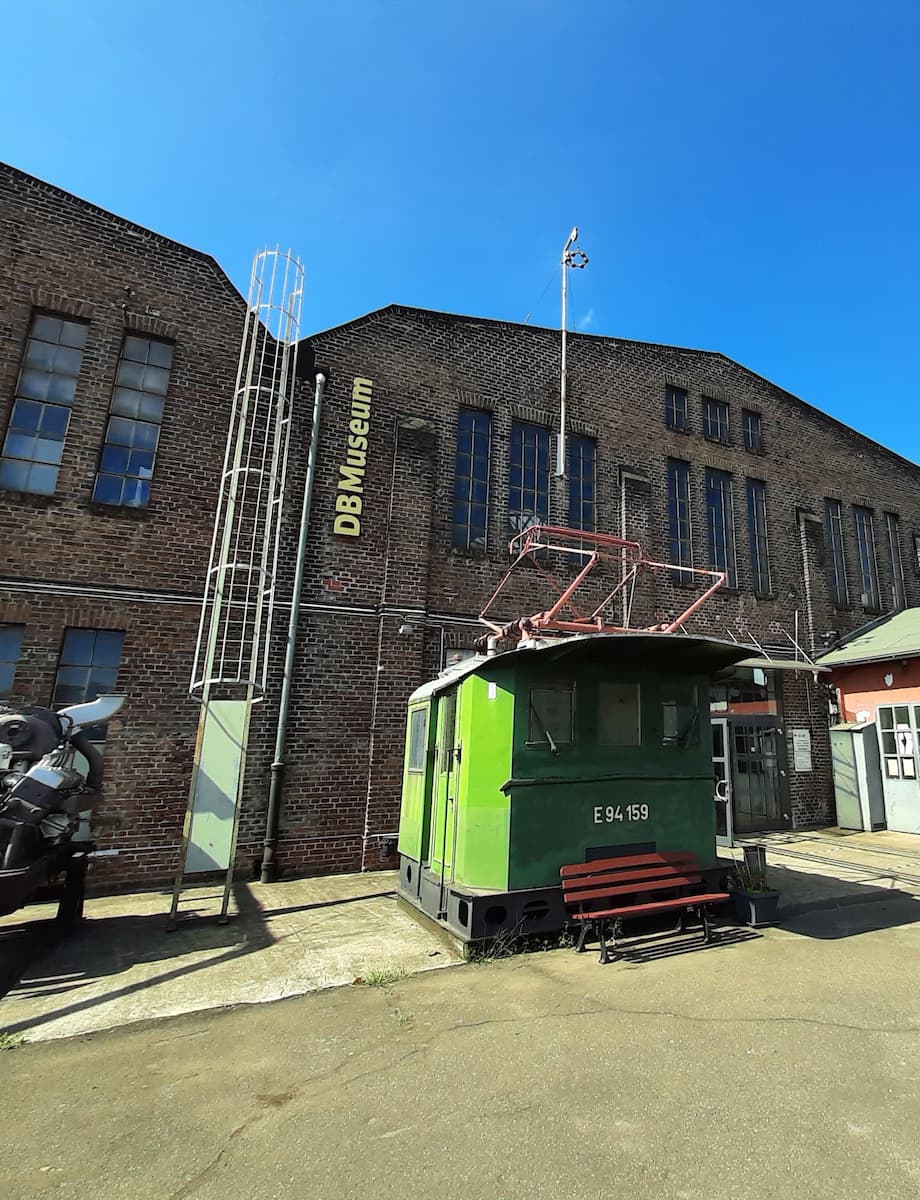
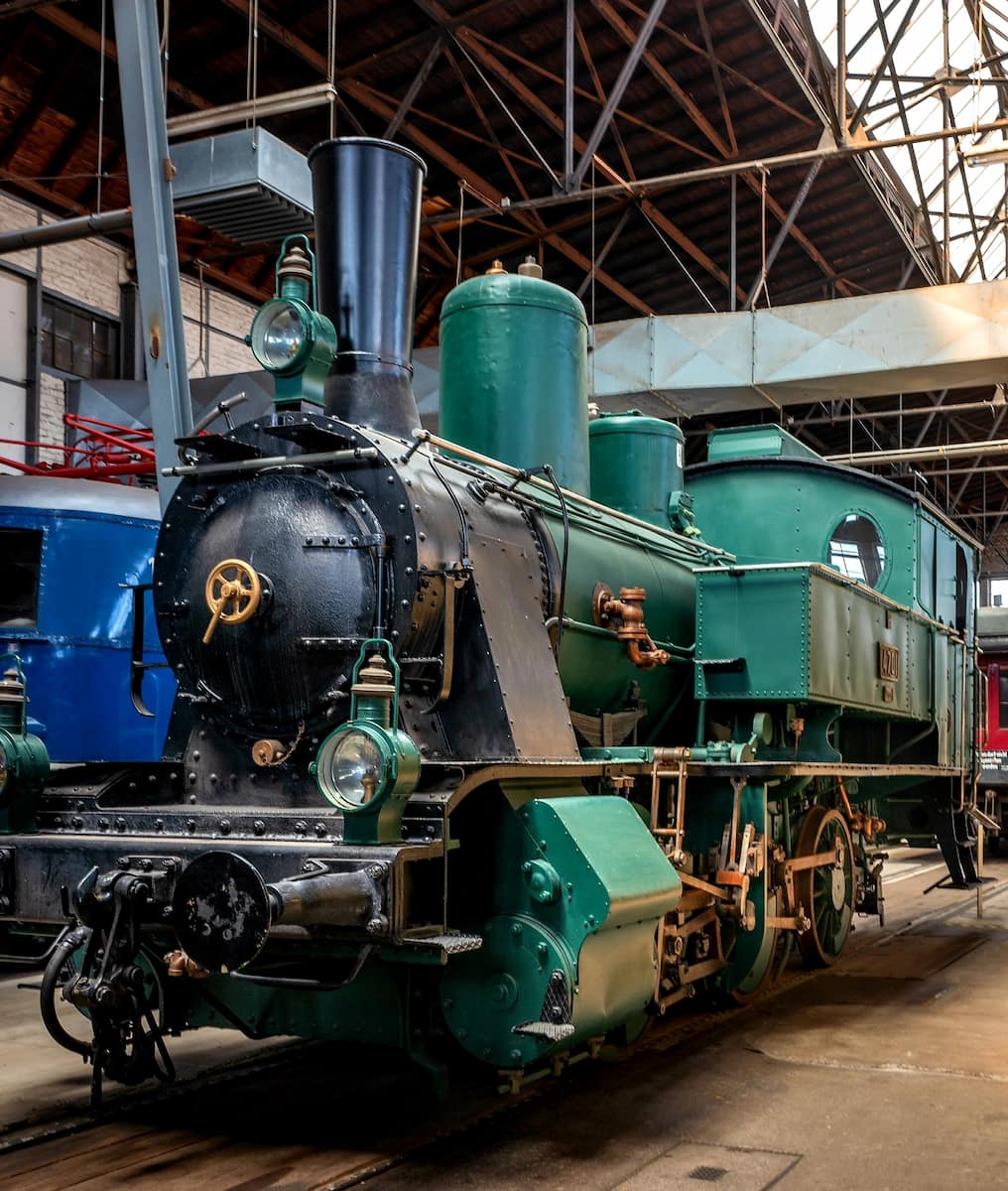
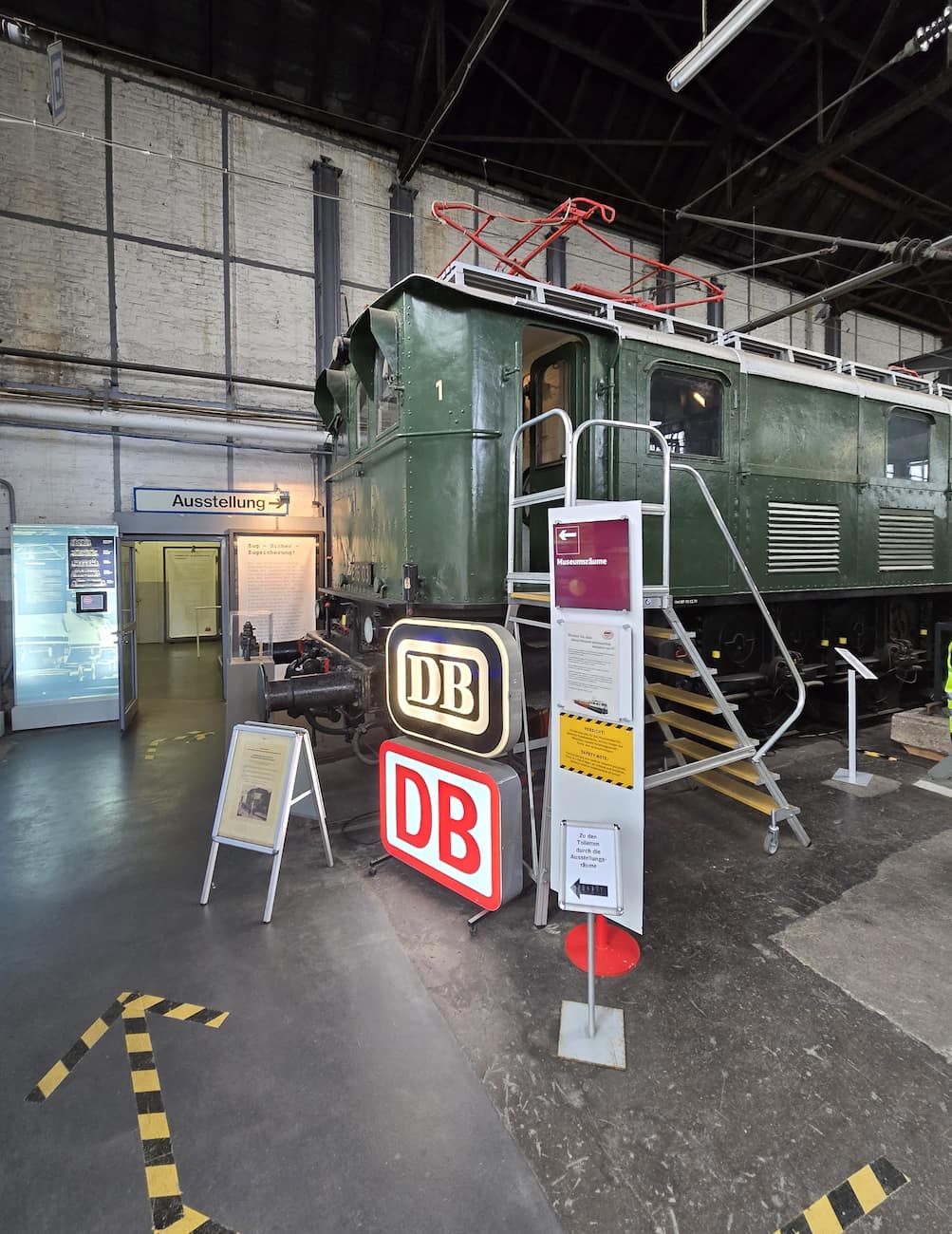

Interactive Experiences. What makes this museum worth a visit is how interactive it is. I tried my hand at the train simulator, imagining myself controlling one of the massive locomotives displayed throughout the hall. Children around me were equally engaged, making this one of the top things to do in Koblenz for families.
Historical Significance. Walking through the wagon hall that until 1995 was used to repair freight cars, I felt a connection to Koblenz’s industrial past. The museum focuses particularly on electric traction and saloon coaches, though several steam and diesel locomotives are also on display, including a carefully restored Prussian T 3 steam locomotive.
| DB Museum Ticket Prices | Cost (€) | Cost (USD) |
|---|---|---|
| Adults | 4€ | $4.35 |
| Families (2 adults + up to 4 children) | 8€ | $8.70 |
| Children (6-17 years) | 2€ | $2.20 |
| Reduced price | 3€ | $3.25 |
| Children under 6 | Free | Free |
Things to Do in Koblenz with Kids
1. Sayn Climbing Park
Adventure Awaits. I discovered a hidden gem for families just outside Koblenz – the Sayn Climbing Park. Set in a beautiful forest, this adventure playground offers thrilling experiences for kids and adults alike. With over 80 climbing elements spread across seven courses of varying difficulty, there’s something to challenge everyone from beginners to seasoned climbers.
Safety First. What impressed me most was the park’s commitment to safety. Before letting loose on the courses, everyone receives thorough instruction and top-quality equipment. The friendly staff ensured my harness was secure and explained how to use the smart belay system, which prevents accidental detachment from the safety line.
Takka Tukka Land. For younger adventurers, the park features Takka Tukka Land – a special area designed for children aged 3-8. Here, little ones can explore lower-height obstacles and zip lines while always remaining within arm’s reach of their parents. It’s the perfect introduction to climbing for budding adventurers.
Nature Connection. Between climbs, I enjoyed peaceful moments surrounded by towering trees and birdsong. The park does an excellent job of integrating the courses into the natural environment, making it feel like a true forest adventure rather than an artificial playground.
Practical Tips:
- Wear comfortable, closed-toe shoes and weather-appropriate clothing
- Bring water and snacks – there’s a picnic area on-site
- Allow at least 3 hours for a full experience
- Book in advance during peak season (weekends and school holidays)
| Sayn Climbing Park Prices | Cost (€) | Cost (USD) |
|---|---|---|
| Adults (14+) | 23€ | $25 |
| Children (6-13) | 19€ | $20.60 |
| Takka Tukka Land (3-8) | 9€ | $9.80 |
| Family Ticket (2 adults + 2 children) | 76€ | $82.50 |
2. Mosellum Experience Center
River Life Explored. The Mosellum, located near the Koblenz lock and weir complex, offers a fascinating journey into the world of river ecology. As someone who’s always been curious about what lies beneath the water’s surface, I found this interactive center to be both educational and entertaining for visitors of all ages.
Fish Migration Marvel. The highlight of my visit was the unique fish ladder exhibit. Through large viewing windows, I watched in awe as various fish species navigated the specially designed passages that help them bypass the dam. It’s a rare opportunity to witness this hidden aspect of river management up close.
Hands-On Learning. What makes the Mosellum particularly great for kids are the interactive displays. I had fun testing my knowledge with quiz games about local wildlife and even tried my hand at virtually steering a cargo ship through the lock system – it’s harder than it looks!
Panoramic Views. The rooftop terrace offers stunning views of the Moselle River and surrounding landscape. It’s a perfect spot for a family photo or to simply enjoy the peaceful river scenery after exploring the exhibits.
Visitor Information:
- Open Tuesday to Sunday, 10 AM to 6 PM (closed Mondays)
- Free admission makes it an excellent budget-friendly activity
- Allow about 1-2 hours for a thorough visit
- Combine with a riverside picnic for a full day out
3. Wildlife Park Remstecken
Forest Discovery. Hidden in the hills above Koblenz, I found Wildlife Park Remstecken – a peaceful forest sanctuary where families can observe native animals in natural habitats. Unlike commercial zoos, this free-entry park focuses on local species like red deer, wild boar, and various birds of prey.
Natural Enclosures. What impressed me most was how spacious and natural the animal areas felt. Walking along the shaded forest paths, I spotted deer grazing in large meadow enclosures and wild boars rooting through undergrowth. The animals appeared relaxed and at home in their environment – a refreshing change from conventional zoos.
Playground Adventures. Beyond animal watching, the park features an excellent woodland playground where children can climb, swing, and balance on natural timber structures. I watched kids testing their skills on log obstacles while parents relaxed at nearby picnic tables – a perfect blend of physical activity and outdoor learning.
Hiking Opportunities. For families with older children, the park serves as a gateway to several well-marked hiking trails. I followed the “Kühkopf” route for about 30 minutes and was rewarded with spectacular panoramic views of the Rhine Valley stretching toward Koblenz.
Visitor Tips:
- The park is open year-round from dawn to dusk
- No entrance fee, but donations are appreciated
- Bring your own food and drinks for picnicking
- Wear sturdy shoes as paths can be uneven
- Allow 2-3 hours for a full experience
| Wildlife Park Features | Best For |
|---|---|
| Animal Enclosures | All ages |
| Forest Playground | Children 3-12 |
| Hiking Trails | Families with older children |
| Picnic Areas | Group outings |
Free Things to Do in Koblenz
1. Walk Along the Rhine Promenade
Riverside Magic. The Rhine Promenade quickly became my favorite free activity in Koblenz. This walkway stretches along the eastern bank of the Rhine River from Deutsches Eck to the Electoral Palace, offering constantly changing views of one of Europe’s most historic waterways. I spent hours watching cargo ships and cruise boats navigate the powerful currents where the Moselle and Rhine rivers meet.
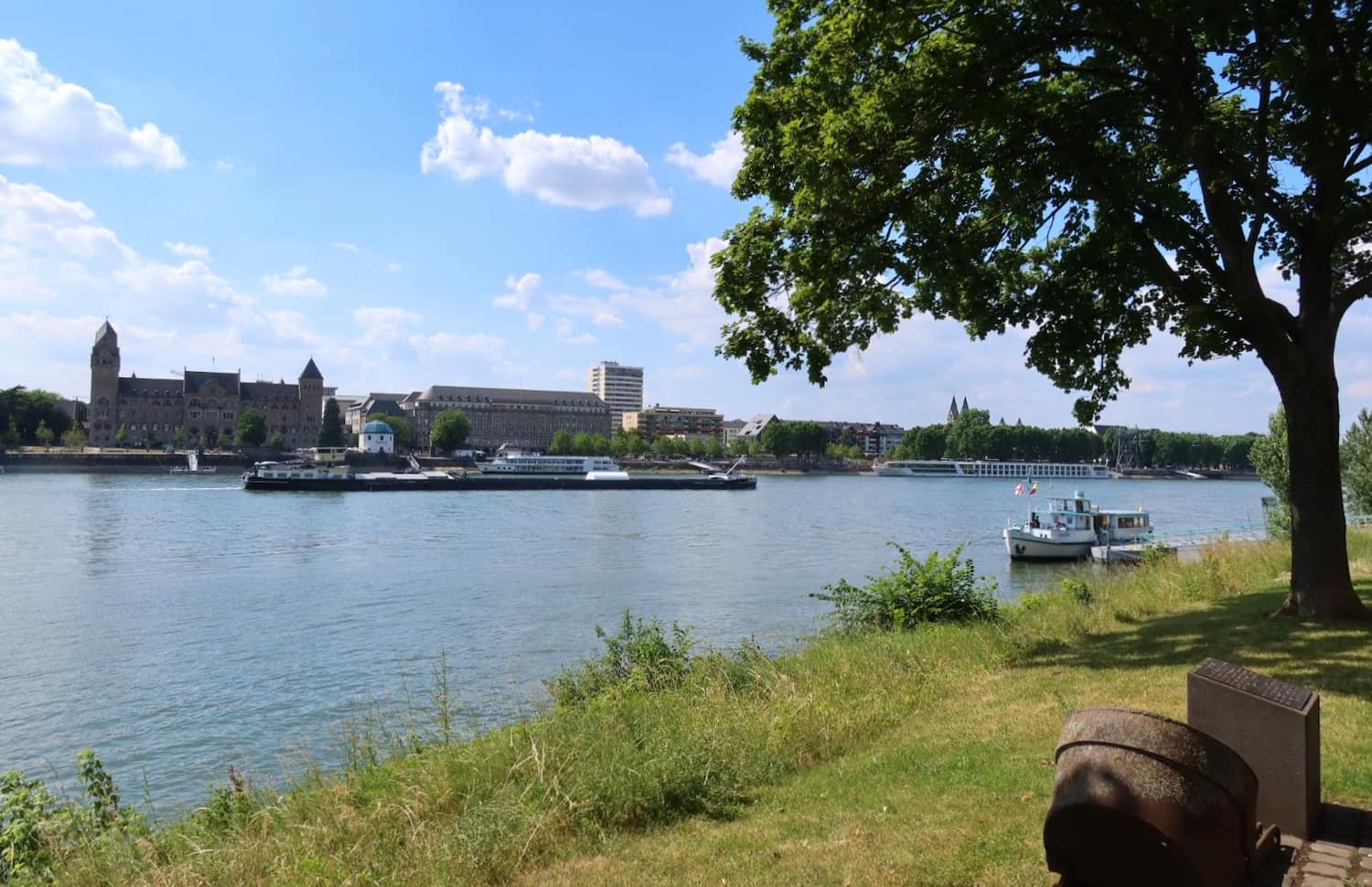
Wildlife Encounters. To my surprise, I spotted several nutrias (river rats) along the shoreline. These curious creatures have become something of a local attraction, often sunning themselves on the rocks near the water’s edge. Families stopped to watch these furry residents, creating an unexpected wildlife viewing opportunity in the heart of the city.
Romantic Benches. The promenade features numerous benches positioned at the most scenic viewpoints. I claimed one facing Ehrenbreitstein Fortress and spent a peaceful hour watching the cable cars glide across the Rhine River. This spot offers one of the most romantic views in Germany, especially when the fortress is illuminated at night.
Historical Markers. Along the walkway, I discovered informative plaques explaining Koblenz’s 2,000-year history. One marker near the Electoral Palace detailed how the Romans established a settlement at this strategic confluence, naming it Castellum apud Confluentes – the origin of the city’s name and a testament to its importance as a UNESCO World Heritage Site.
2. Visit Churches
Basilica of St. Castor. Standing near where the Rhine and Moselle rivers meet, this impressive church was my first stop on a free church tour of Koblenz. Founded in 836 AD, St. Castor’s Basilica one of the city’s oldest buildings and played host to historic events including negotiations that divided Charlemagne’s empire. I was struck by the peaceful Romanesque interior with its impressive vaulted ceiling and ancient stone carvings.
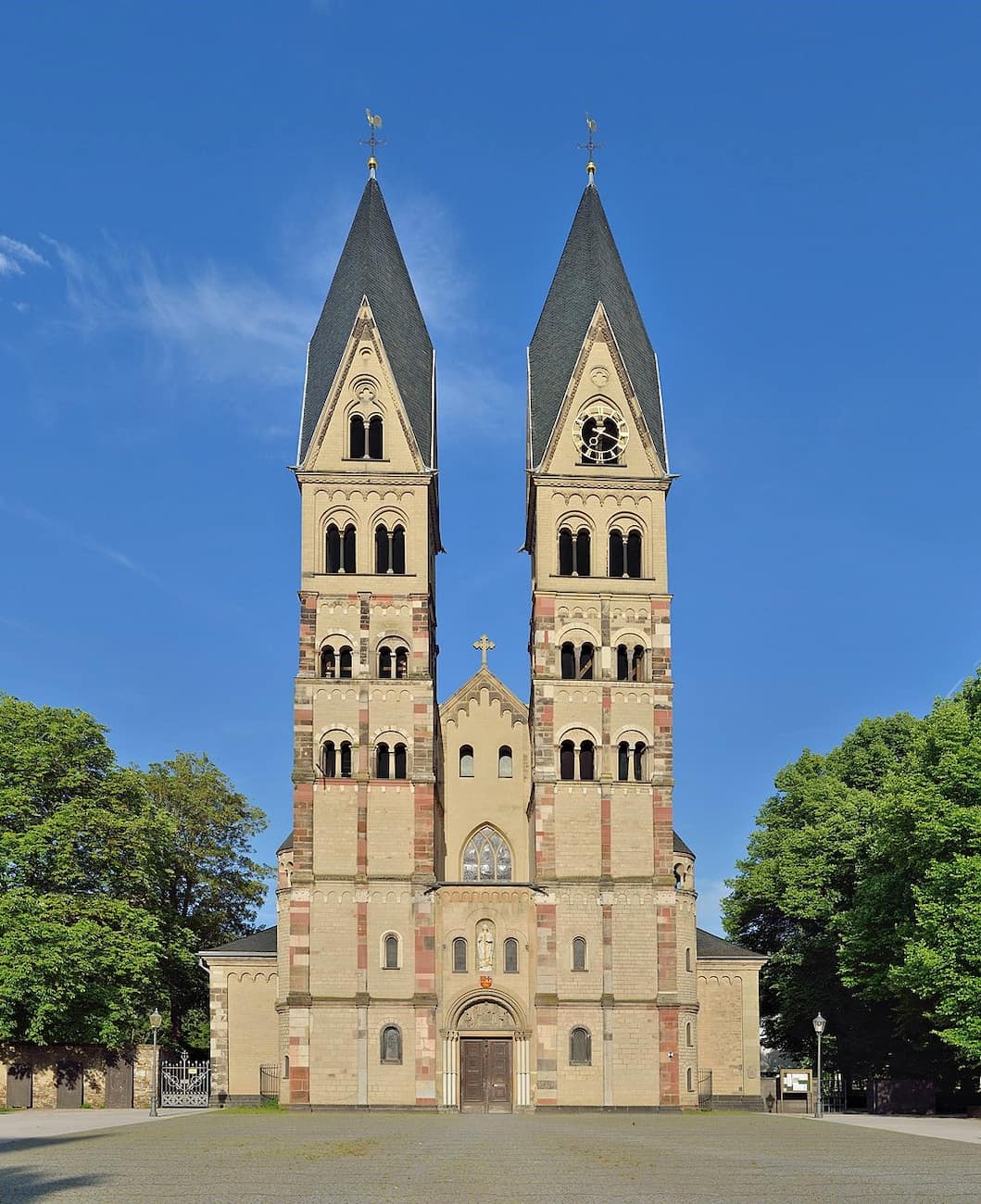
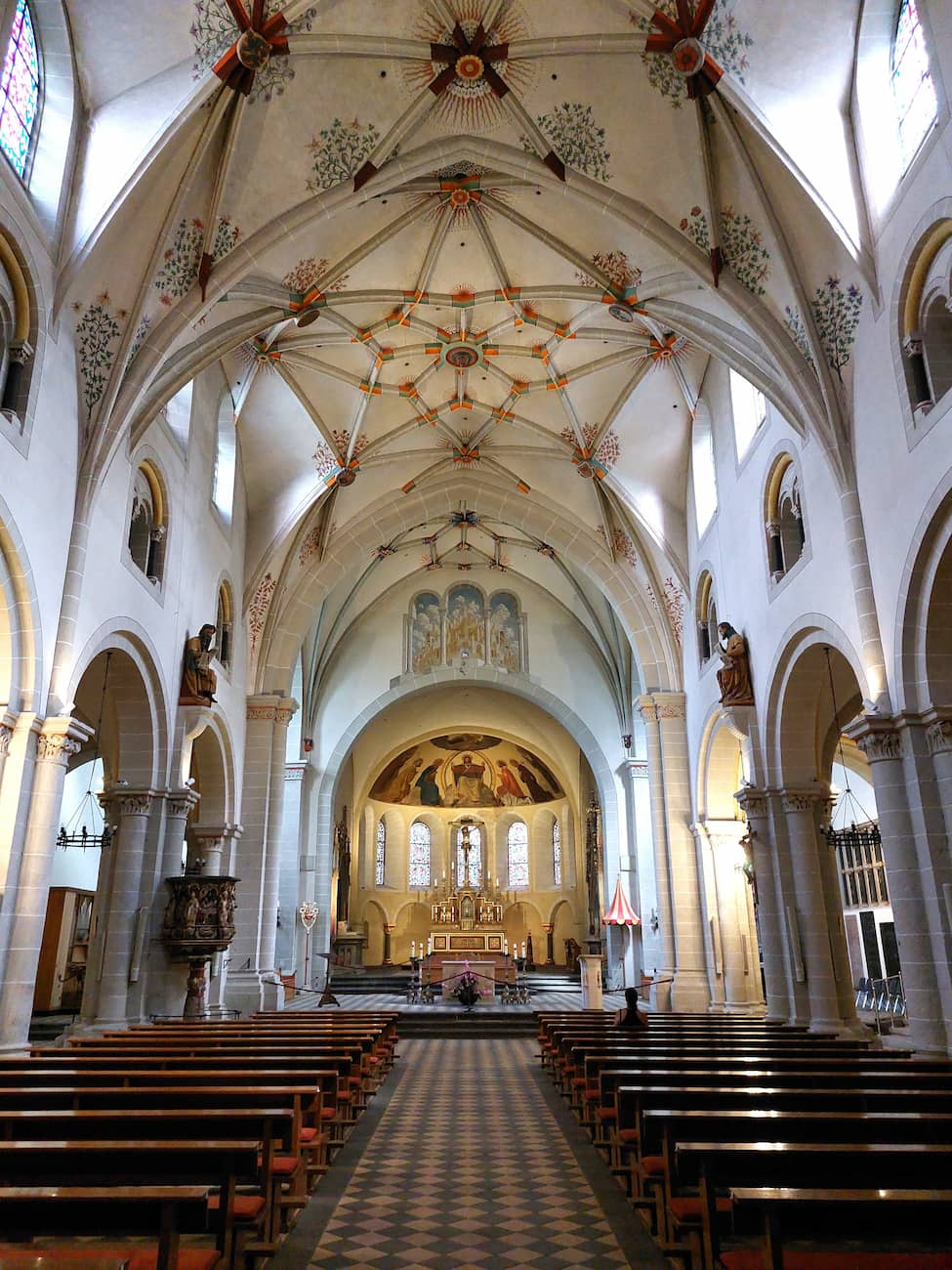
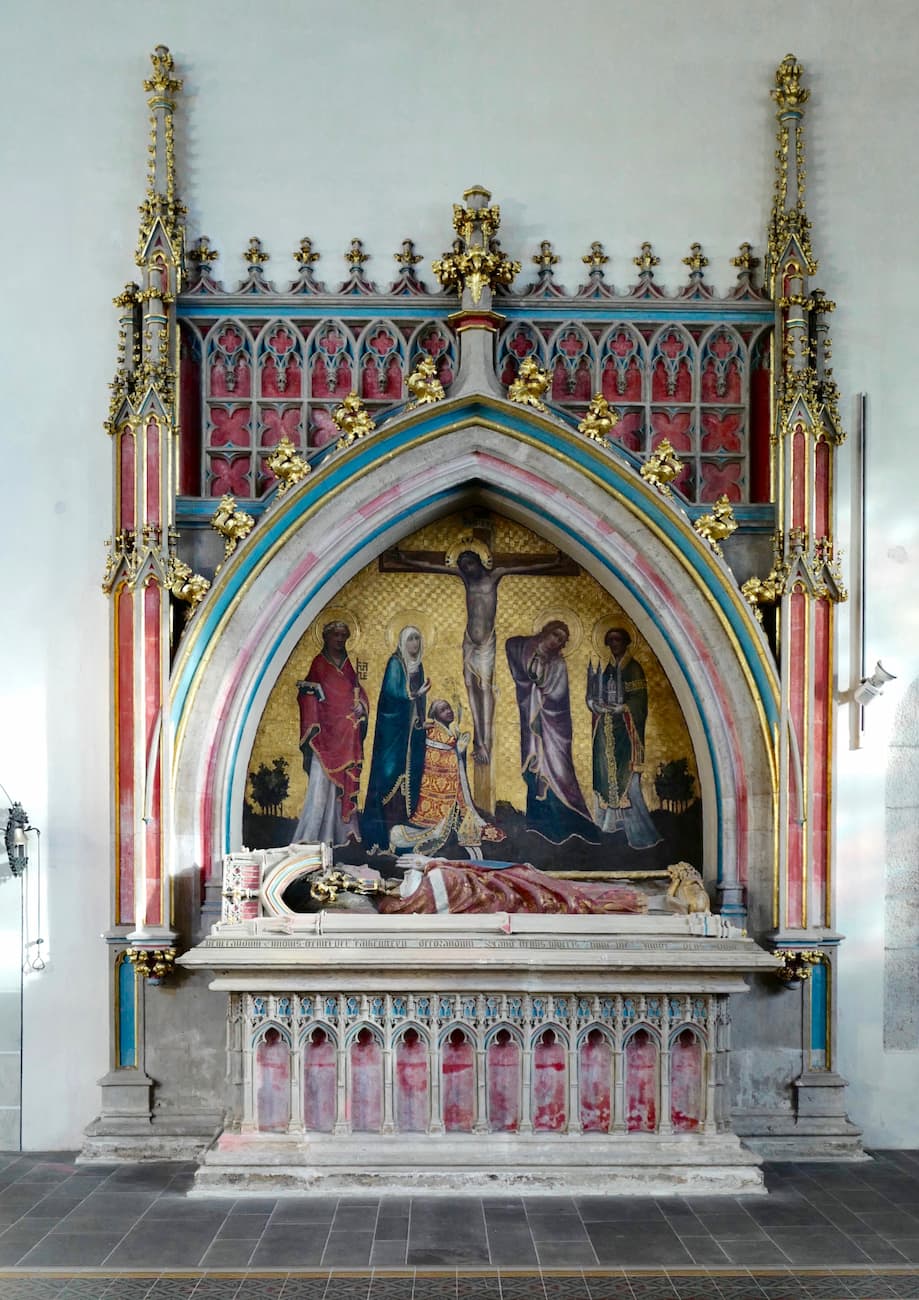
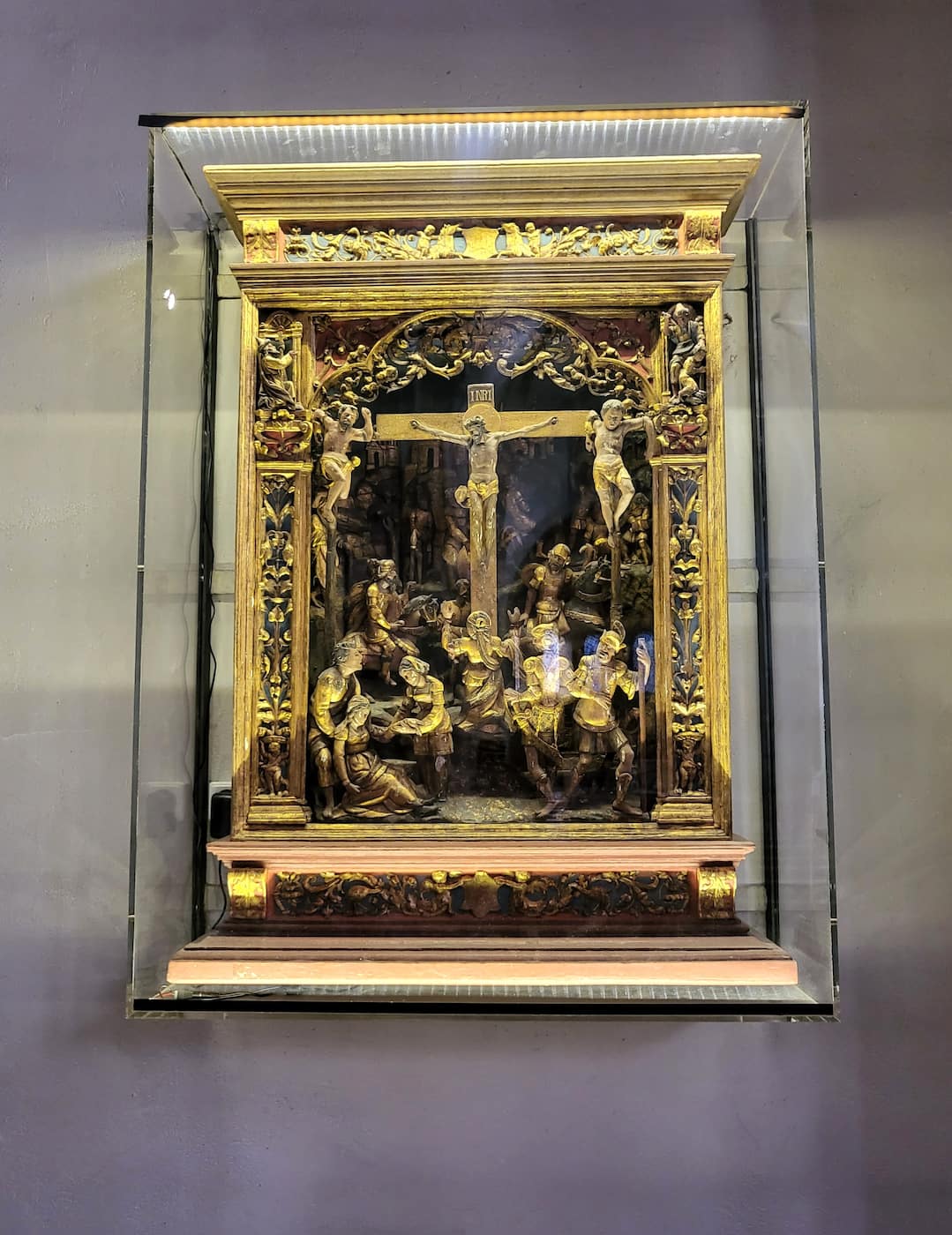
Liebfrauenkirche. The Church of Our Lady with its distinctive twin onion domes dominates the skyline of the old town of Koblenz. Inside, I discovered a bright, airy space with beautiful stained glass windows that cast colorful patterns across the white walls. The church stands at one of the city’s busiest intersections yet offers a tranquil retreat from the bustling streets outside.
St. Florin’s Church. This former collegiate church near the Rhine River impressed me with its elegant simplicity. Now serving as the city library, the building retains its historic exterior while housing a modern cultural space inside. The square outside features a fountain commemorating the Elector of Trier, who once ruled this region from his nearby palace.
Jesuit Church. Located in the heart of the old town at Jesuitenplatz, this baroque masterpiece showcases ornate decoration typical of Jesuit architecture. I spent time admiring the intricate altar and ceiling frescoes that tell biblical stories through vivid imagery. The church remains one of Koblenz’s cultural attractions that doesn’t charge an entrance fee.
Church Visiting Tips:
- Most churches are open daily from 9 AM to 6 PM
- Dress respectfully (shoulders covered)
- Check for service times to avoid interrupting worship
- Photography is generally permitted without flash
- Donations for church maintenance are appreciated but not required
| Church | Location | Architectural Style | Special Features |
|---|---|---|---|
| St. Castor’s Basilica | Near Deutsches Eck | Romanesque | Oldest church in Koblenz |
| Liebfrauenkirche | Old Town Center | Gothic/Baroque | Twin onion domes |
| St. Florin’s | Near Electoral Palace | Gothic | Now houses city library |
| Jesuit Church | Jesuitenplatz | Baroque | Ornate ceiling frescoes |
3. Historiensäule Fountain at Görresplatz
Historical Storytelling. The Historiensäule (History Column) at Görresplatz captivated me with its unique spiral design chronicling 2,000 years of Koblenz history. Created in 2000 to celebrate the city’s anniversary, this free attraction depicts key events from Roman settlement through medieval times to modern day through detailed bronze reliefs that wrap around the column.
Interactive Learning. I spent nearly an hour circling the column, following Koblenz’s story chronologically from bottom to top. The detailed sculptures show Roman legionaries, medieval knights, Prussian soldiers, and modern citizens, creating a three-dimensional history book in the heart of the old town. Children nearby played a game of spotting different historical figures in the bronze scenes.
Central Location. Görresplatz serves as one of the city’s main gathering places, surrounded by cafés where I enjoyed watching locals go about their day. The square honors Joseph Görres, a famous Koblenz poet and publicist whose writings influenced German nationalism in the 19th century. His statue stands nearby, overlooking the bustling activity of this vibrant public space.
Practical Information. The fountain operates from April through October, with water cascading down the spiral column to create a pleasant background soundtrack to the historical scenes. The area is well-lit at night, making it worth a visit during evening strolls through the old town of Koblenz. Several benches around the square provide perfect resting spots during a day of free sightseeing.
Seasonal Activities in Koblenz
Christmas in Koblenz
Festive Markets. The Koblenz Christmas Market transforms the old town into a winter wonderland from November 22, through January 5. The most romantic holiday market in Germany, it spreads across seven charming squares, including Jesuitenplatz and Münzplatz, with more than 130 wooden stalls selling handmade gifts and seasonal treats.
Fortress Illuminations. During my visit to Koblenz last December, I discovered the magical “Christmas Garden” at Festung Ehrenbreitstein. This spectacular light installation turns the historic fortification into a glowing wonderland. For €19.95 (adults) or €13.95 (children 6-14), you can experience this enchanting display after taking the cable car across the Rhine River for breathtaking night views of where the Moselle and Rhine rivers meet.
Family Activities. The Koblenz Christmas Market offers special Family Days on December 9, 16, and January 6, with admission for up to five people at just €39.95. I watched children delight in the Advent calendar at the Town Hall, where a new window opens daily to reveal festive scenes.
Cultural Performances. The historic churches in Koblenz host beautiful Christmas concerts throughout December. I attended a moving choral performance at Liebfrauenkirche, with its distinctive twin onion domes that remain one of the most recognizable features in the old town of Koblenz. The acoustics inside this medieval church created an unforgettable holiday atmosphere.
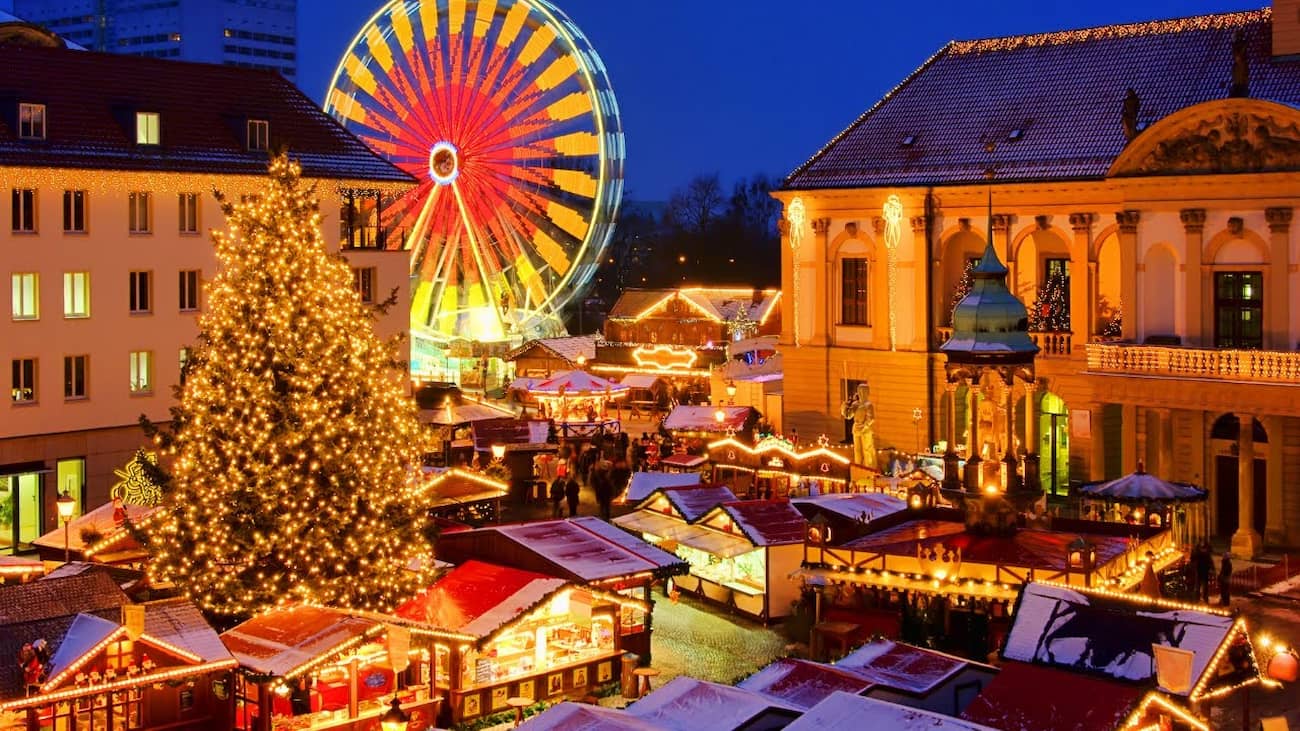
Practical Tips:
- Visit on weekdays to avoid weekend crowds
- Combine market visits with a day trip to nearby castles
- The market stays open until 9 PM Monday-Wednesday and until 10 PM Thursday-Saturday
⭐ Best Activities
- Koblenz: Rheinluft Glühweinduft: Warm up during the winter months with this special “Rhine Air Mulled Wine Scent” cruise in Koblenz. Sail the Rhine River while enjoying hot mulled wine and taking in the festive atmosphere of the city. A perfect activity during the Christmas market season to experience Koblenz’s winter charm from a unique perspective
Summer Festivals and Events
Rhine in Flames. The highlight of Koblenz’s summer calendar is undoubtedly the spectacular Rhine in Flames festival, held on the second weekend in August. I joined thousands along the riverbanks to watch the grand fireworks display over Ehrenbreitstein Fortress. The three-day Koblenz Summer Festival turns the banks around Deutsches Eck into a vibrant event mile with live music and food stalls.
River Cruises. I booked a Rhine Valley Castles and Palaces Boat Tour (€25/person) that departed from Koblenz Stadtmitte. The cruise provided great views of Electoral Palace, Lahneck Castle, and Stolzenfels Castle – the epitome of Rhine romanticism and worth a visit for anyone interested in the history of Koblenz.
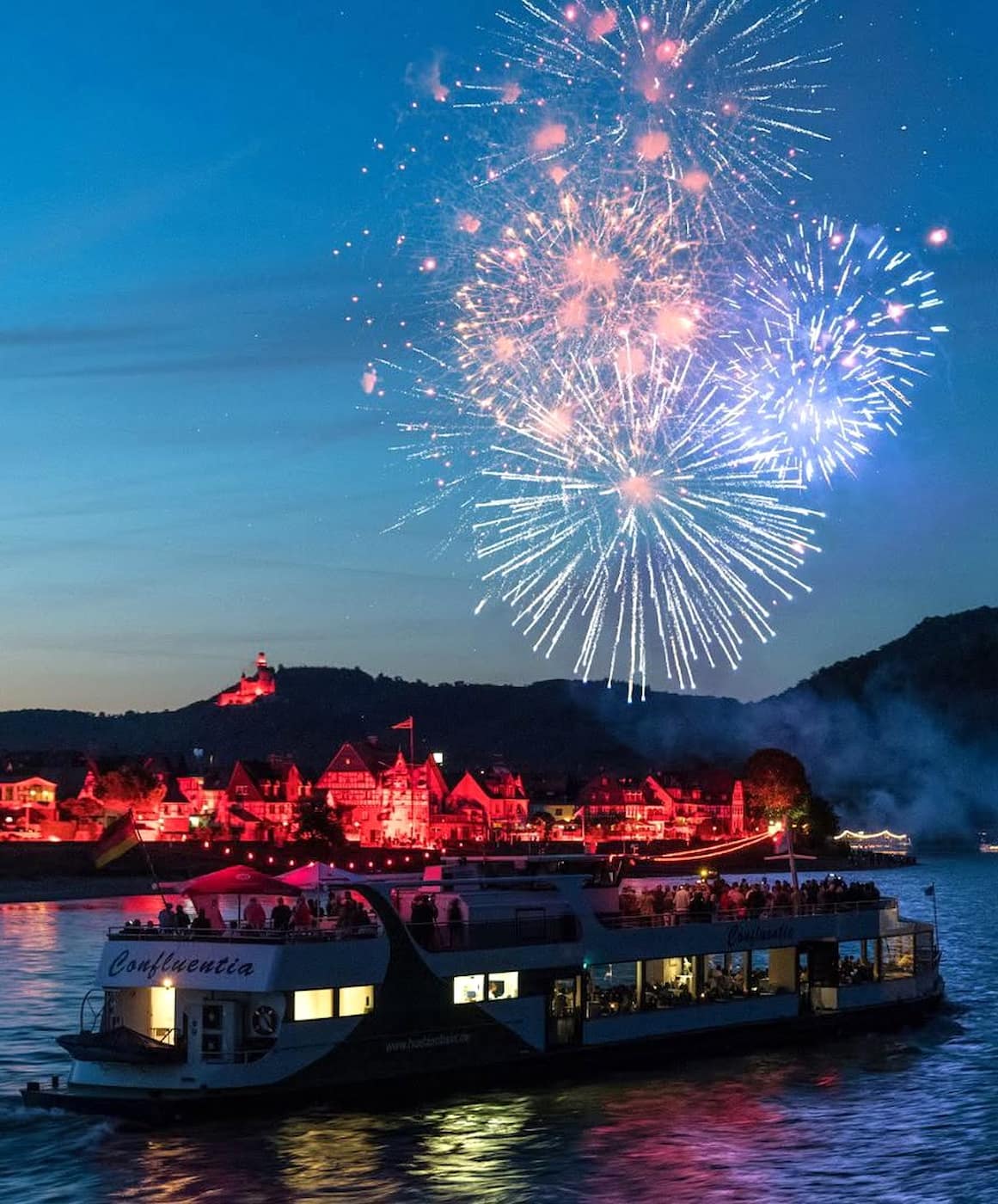
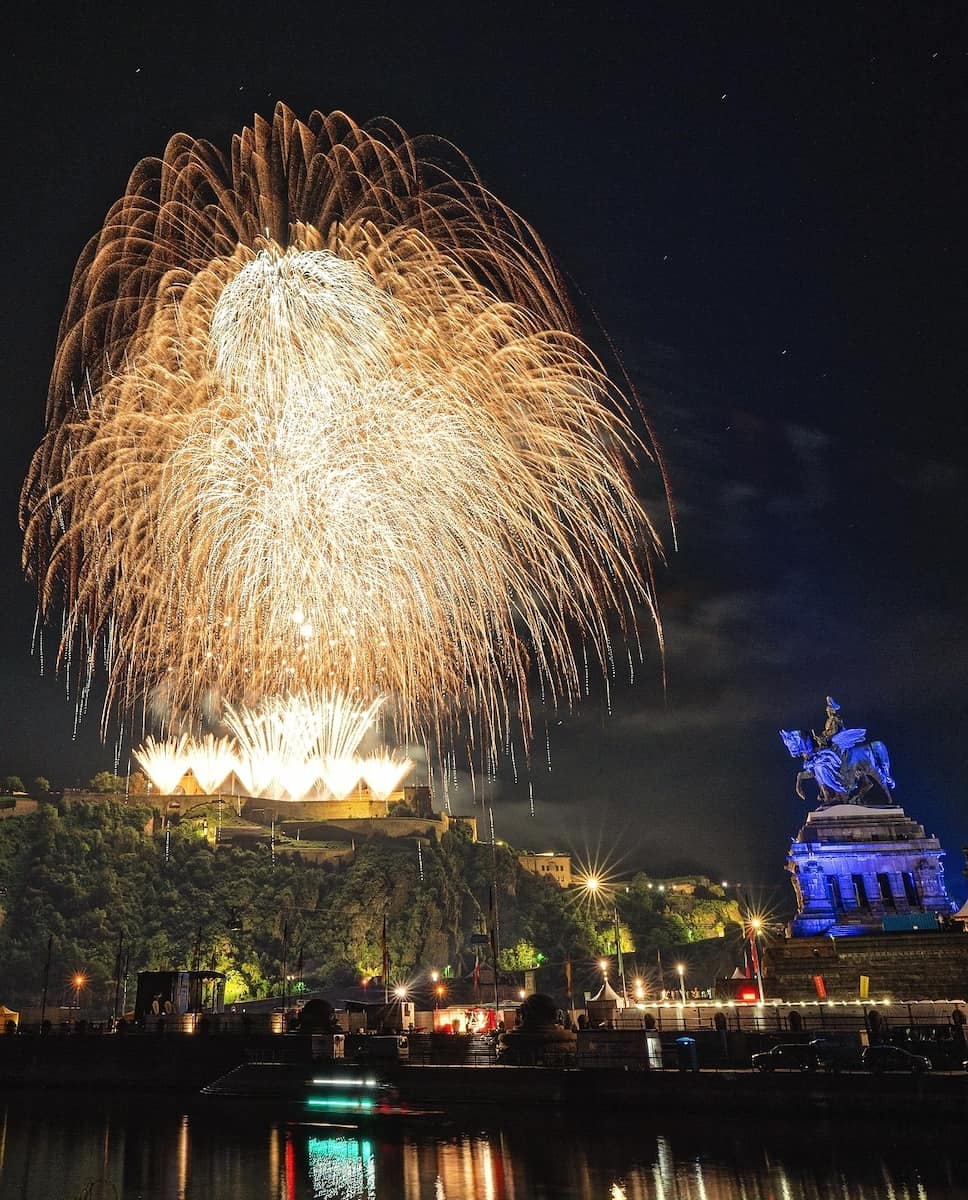
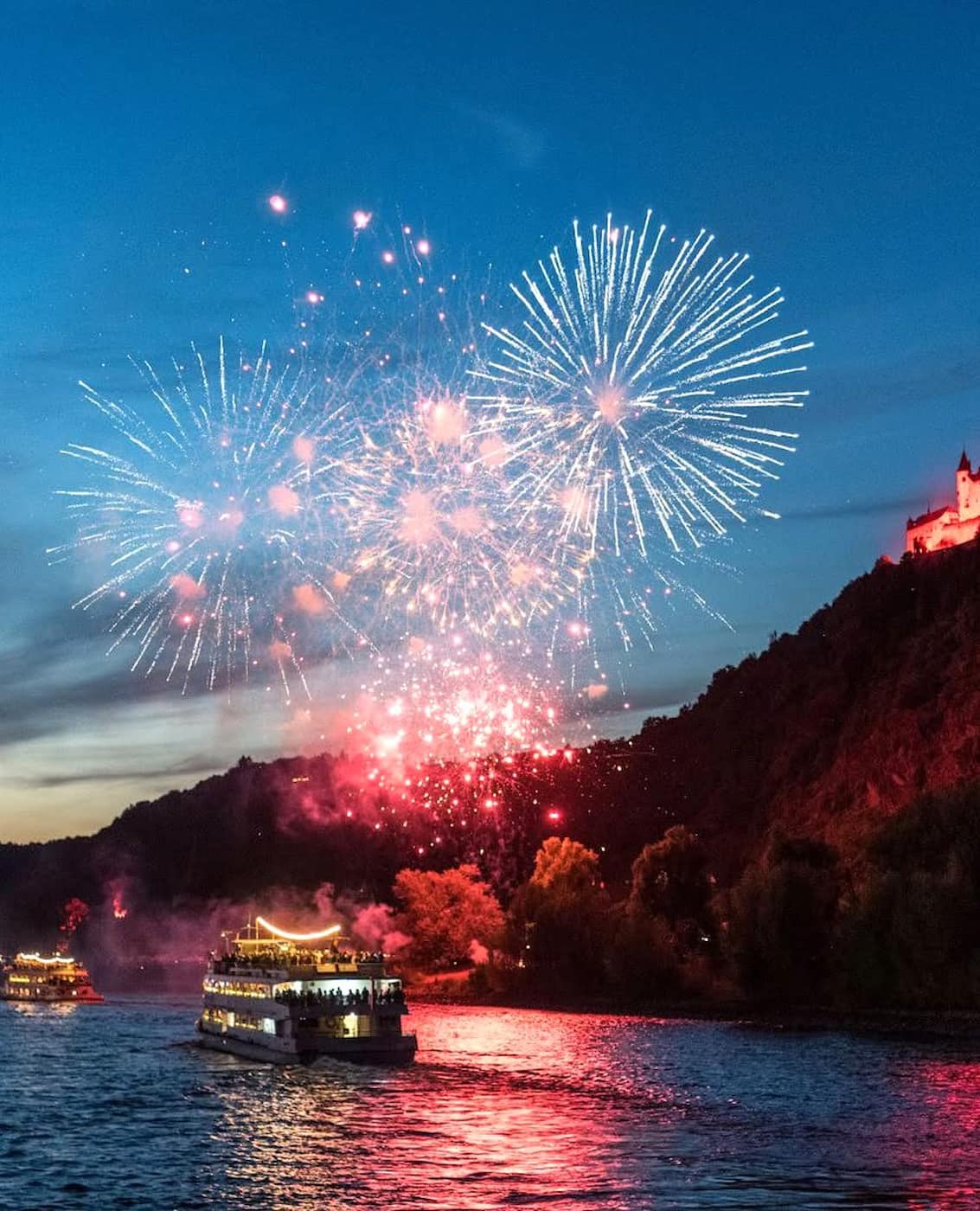
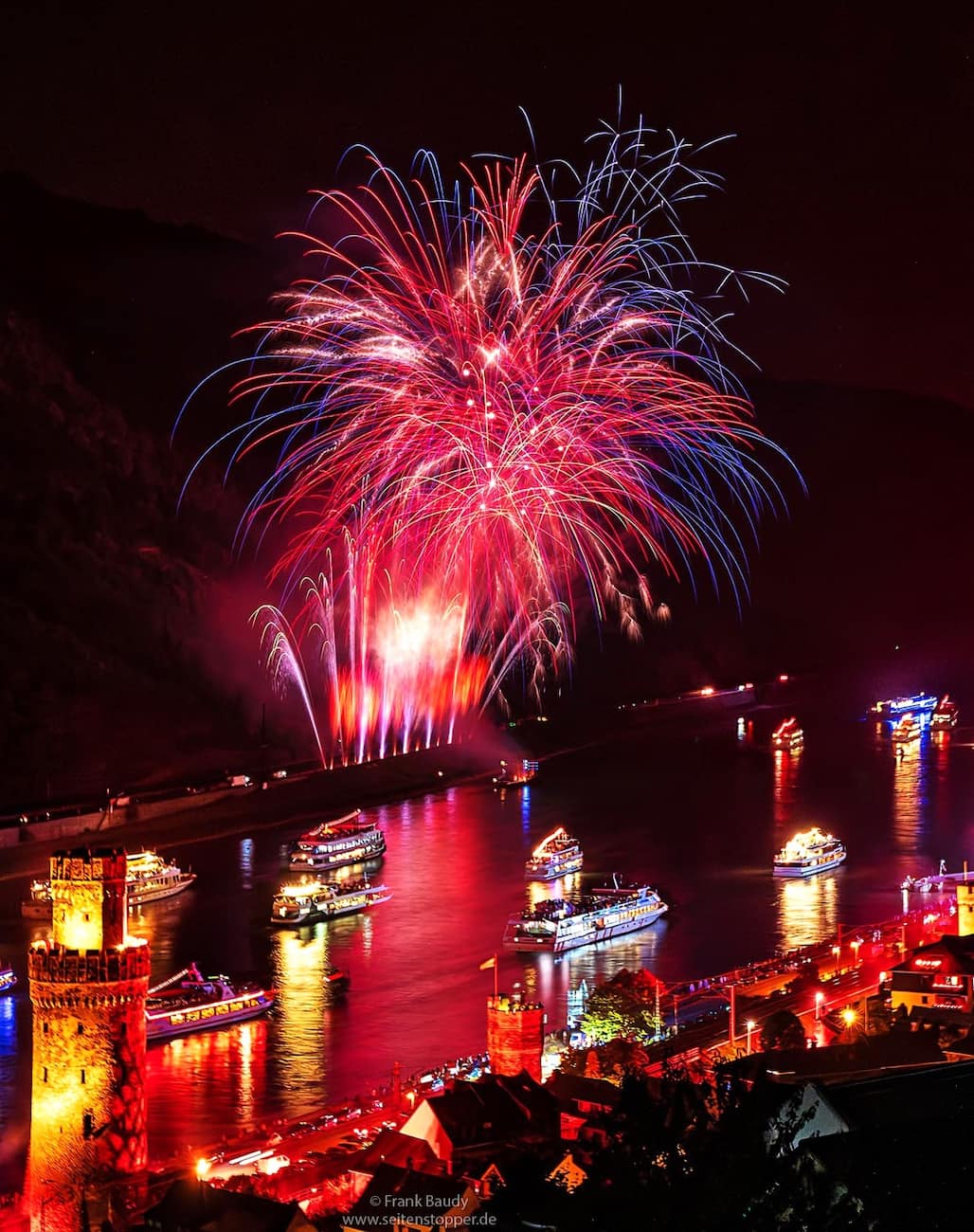
Old Town Festival. Held in early July, this celebration in the charming old town features traditional music, local cuisine, and cultural performances. I spent a delightful evening at Am Plan square, where locals and visitors gathered to enjoy regional wines from the Moselle and Rhine vineyards while listening to live bands.
Outdoor Activities. The warm months are ideal for exploring the extensive riverside promenades. I rented a bicycle (€15/day) to ride along the Rhine River path, which offers one of the most romantic ways to see the cultural attractions around Koblenz. The route passes the Elector of Trier’s former palace and provides stunning views of the fortress on top of the hill.
Spring Blooms in Royal Parks
Kaiserin-Augusta-Anlagen. Spring transforms these riverside gardens into a colorful paradise. I visited in April when cherry blossoms created a pink canopy along the Rhine promenade. These royal gardens, created for Empress Augusta in the 19th century, remain most peaceful places to visit, away from the tourist crowds.
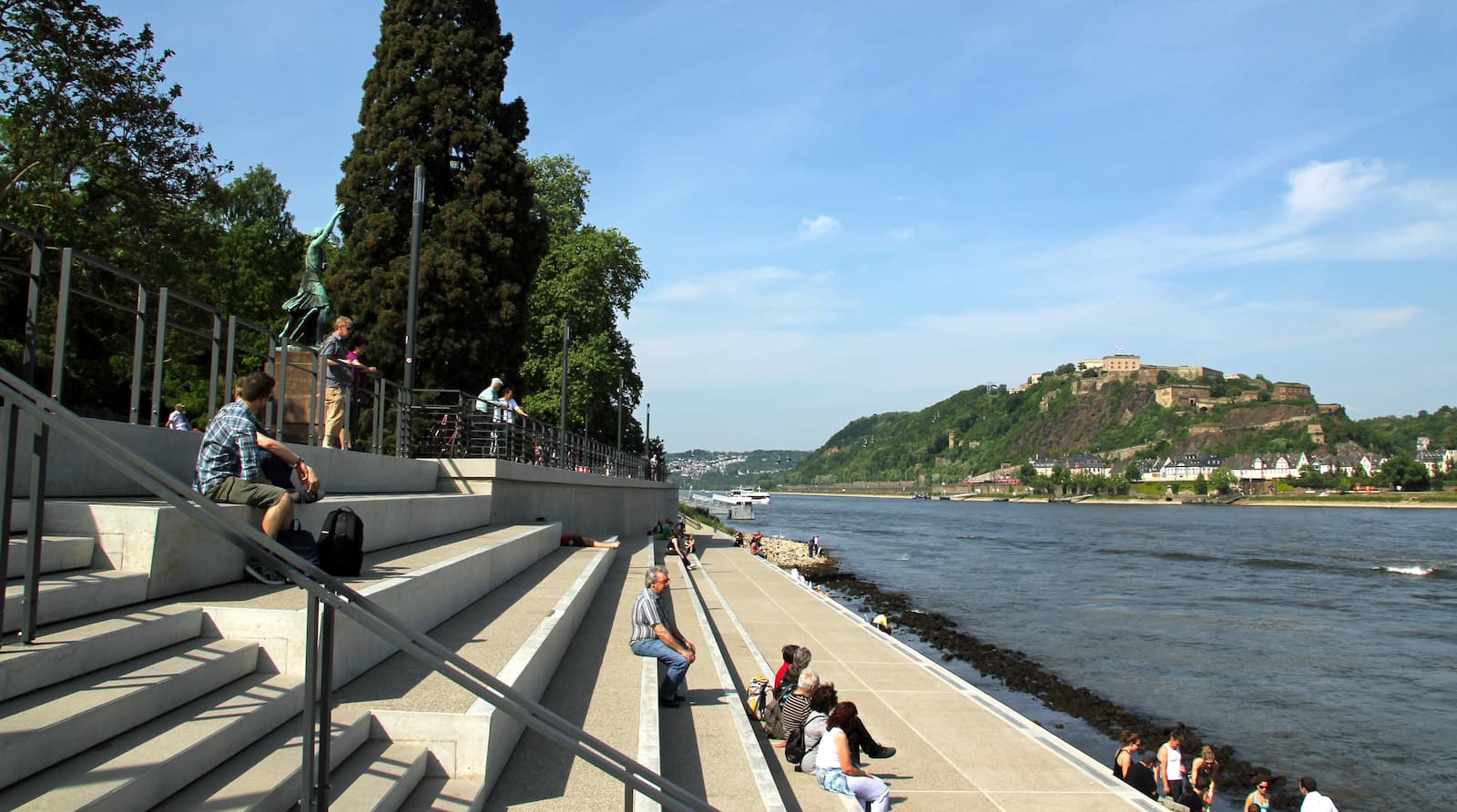
Blossom & Wine Festival. If you plan a trip to Koblenz in late April, don’t miss the Blossom and Wine Festival in the district of Güls. I spent an afternoon sampling local Rieslings while admiring the flowering orchards. The festival offers a perfect way to see many aspects of local culture while enjoying the spring landscape.
Fortress Spring. Early April brings special events to Ehrenbreitstein Fortress, the highest point in the old town area. I joined a guided tour that explained how this impressive Prussian fortification evolved over centuries. From the top of the hill, spring offers crystal-clear views across both the Moselle and Rhine rivers to the Deutsches Eck and beyond.
Church Visits. Spring is an excellent time to visit the historic churches in Koblenz. I was particularly impressed by the Basilica of St. Castor, founded in 836 AD, which stands near the Rhine and Mosel rivers. Its peaceful interior features beautiful stained glass that glows brilliantly in the spring sunlight.
Autumn Foliage Walks
Stolzenfels Castle Grounds. My autumn visit to this romantic schloss just outside Koblenz was timed perfectly to see the surrounding forest in vibrant red and gold hues. The castle, once a summer residence for Prussian royalty, offers one of the most picturesque settings along the Rhine and Moselle rivers, especially beautiful when framed by fall foliage.
Rhine Gardens. The tree-lined paths of Kaiserin-Augusta-Anlagen burst with autumn colors in October. I spent a peaceful afternoon walking along the Rhine River, photographing the golden leaves against the backdrop of boats navigating the water. These gardens remain one of the best places in the city at any time of year, but fall brings a special magic.
Hiking Trails. For more adventurous visitors, the forests around Koblenz offer excellent hiking opportunities. I took a day trip to the nearby trails of Remstecken Wildlife Park, where autumn transforms the woodland into a tapestry of warm colors. The park is free to enter and provides a refreshing contrast to the historic old town of Koblenz.
Wine Harvest. Autumn is wine season in the Rhine and Moselle valleys. I joined a wine tasting tour (€35) that visited several vineyards around Koblenz where I could watch the grape harvest in progress. The tour included transportation from the train station in Koblenz and featured stops at family-run wineries with spectacular views of the river valleys.
| Seasonal Event | Dates | Cost (€) | Cost (USD) |
|---|---|---|---|
| Christmas Market | Nov 22- Jan 5 | Free entry | Free entry |
| Christmas Garden at Fortress | Nov-Jan | 19.95€ | $21.65 |
| Rhine in Flames Festival | Second weekend in August | Free viewing | Free viewing |
| Blossom & Wine Festival | Late April | 5€ entry | $5.40 |
| Old Town Festival | Early July | Free entry | Free entry |
Day Trips from Koblenz
1. Marksburg Castle (Braubach)
Medieval Marvel. Just 20 kilometers downriver from Koblenz stands Marksburg Castle, the only Rhine fortress that remains completely intact since medieval times. Unlike many castles along the Rhine River that were rebuilt or renovated, Marksburg offers an authentic glimpse into 12th-century fortification architecture that has survived wars and centuries unchanged.
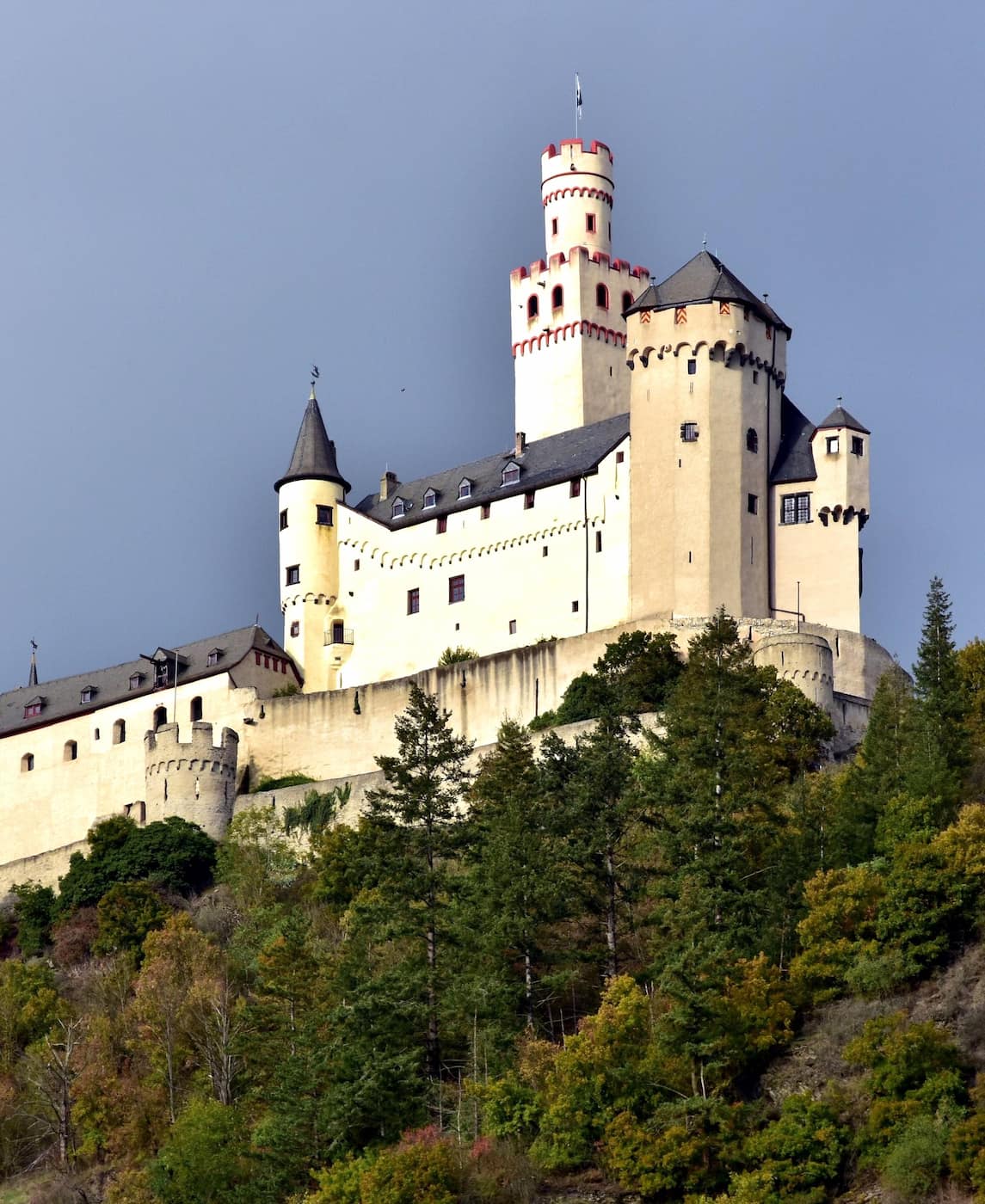
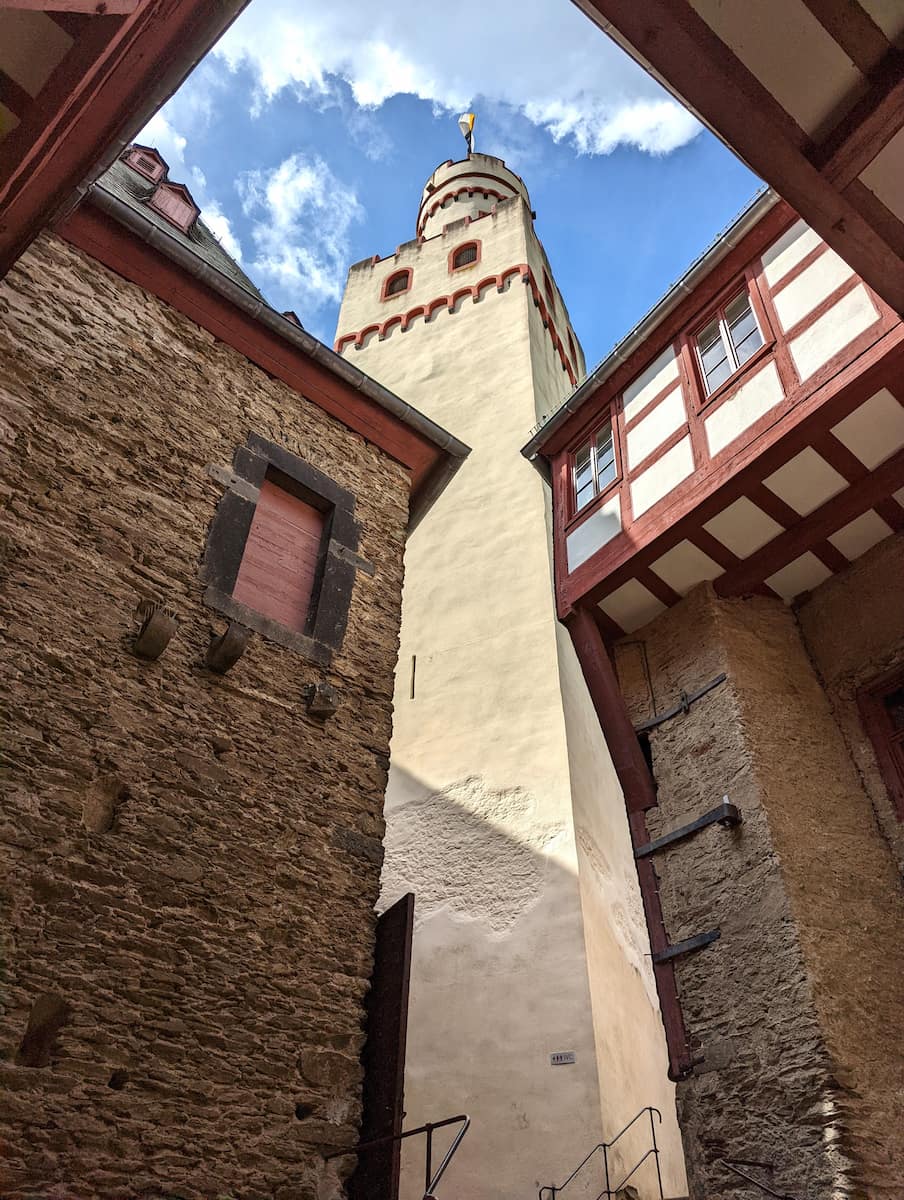
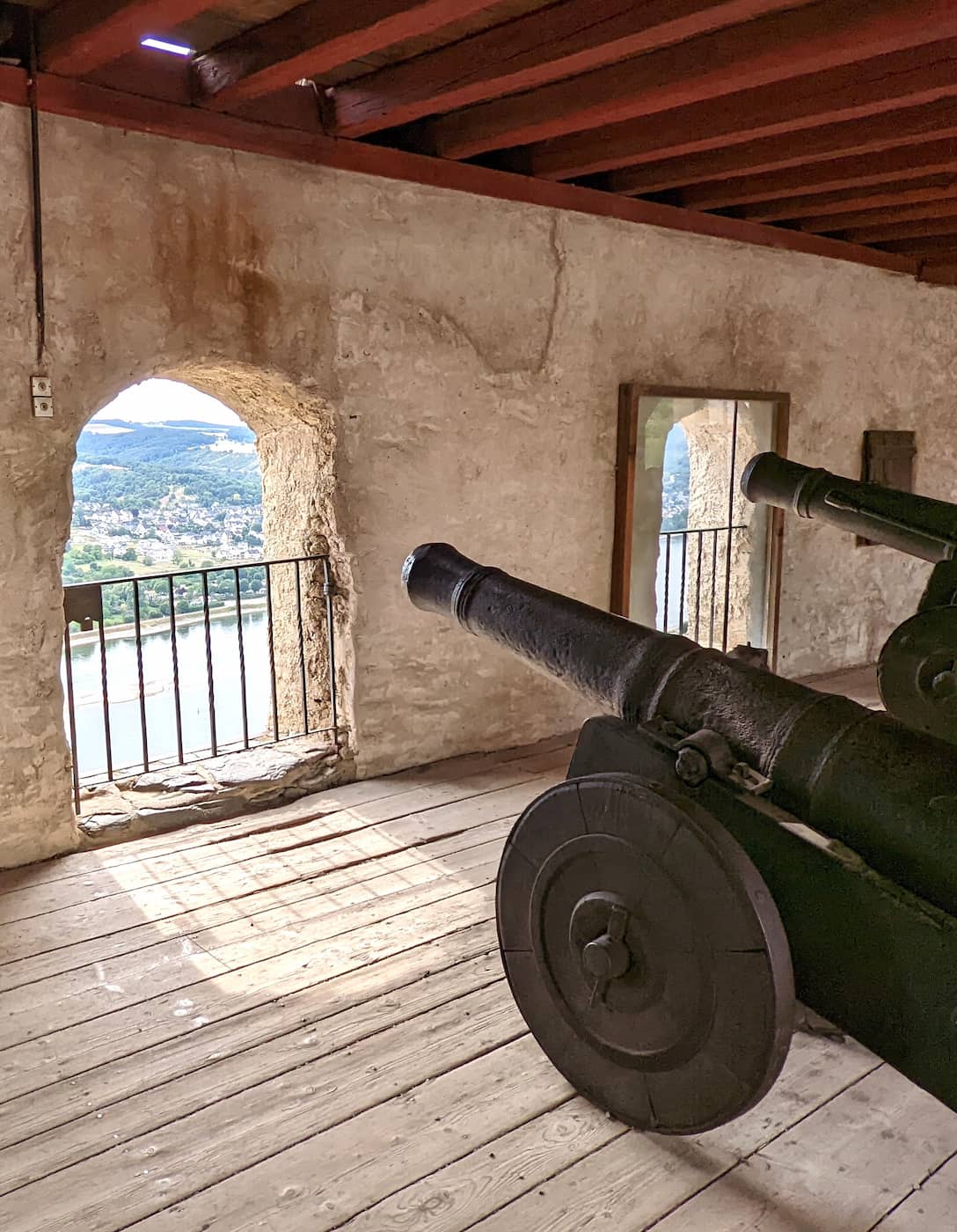
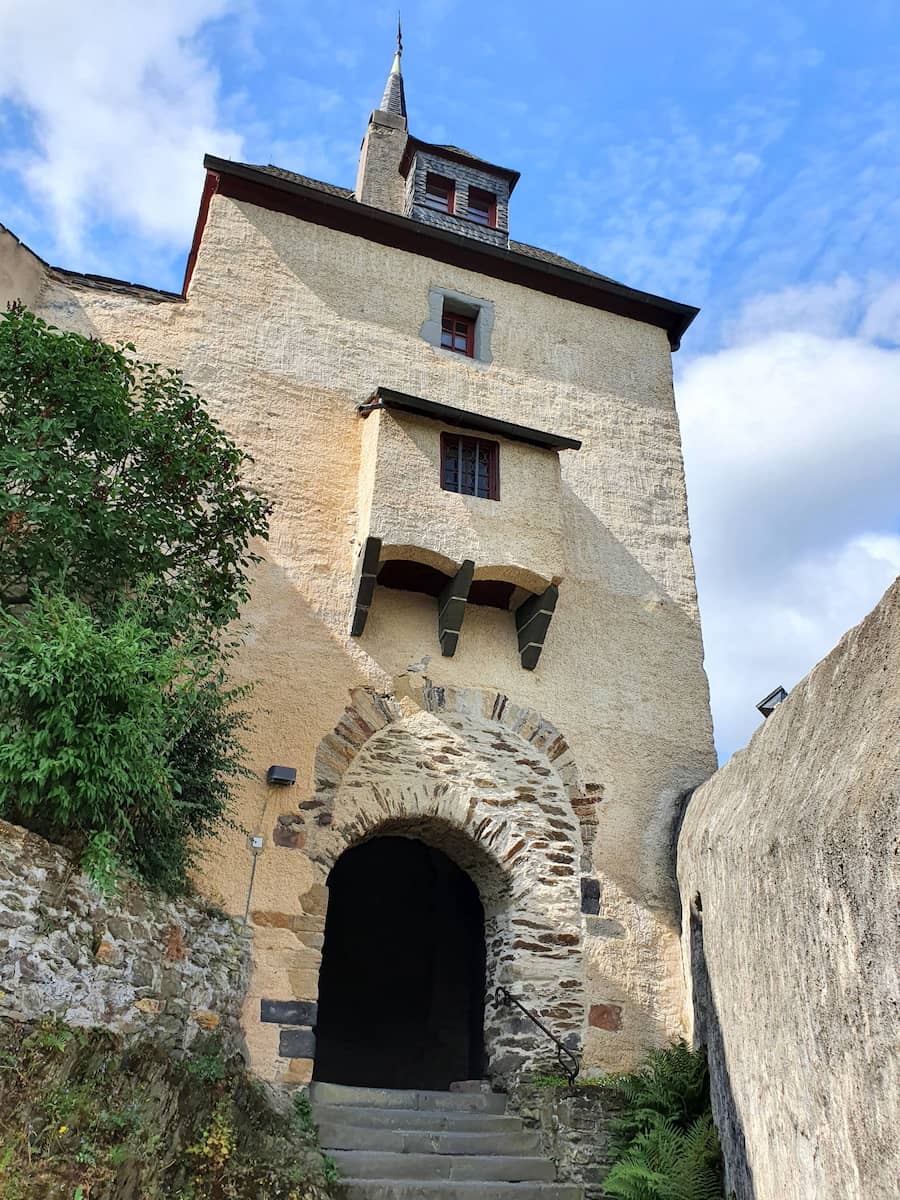
Authentic Interiors. During my guided tour (€12/$13), I explored remarkably preserved rooms including the great hall, armory, and medieval kitchen. What impressed me most was how the castle remains one of the most historically accurate representations of medieval life along the Rhine. The tour guide shared fascinating details about the Electors of Trier who once controlled this strategic point in the old Rhine Valley.
Panoramic Vistas. Perched high above the town of Braubach, Marksburg provides some of the most spectacular views of the Upper Middle Valley. From the battlements, I gazed across vineyards and the winding Rhine River, understanding immediately why this location was worth defending for centuries.
Practical Tips:
- Tours run hourly from 10 AM to 5 PM (March-November)
- Wear comfortable shoes for uneven medieval floors
- Allow 3-4 hours for the round trip from Koblenz
- Combine with lunch in Braubach’s historic center
2. Burg Eltz (Moselle Valley)
Fairy-Tale Castle. Hidden in a forested valley near where the Rhine and Moselle rivers meet, Burg Eltz captivated me as one of the most romantic castles in western Germany. Unlike many fortresses built on hilltops, this 850-year-old castle nestles in a secluded valley, surrounded by dense woodland that has protected it from wars and destruction.
Family Legacy. What makes Burg Eltz truly special is that the same family has owned it for over 33 generations since the 12th century. During the guided tour (€11/$12), I learned how this remarkable continuity has preserved original furnishings, weapons, and artwork that would typically have been lost to time or conflict. The Treasury houses gold and silver artifacts that tell the story of the Eltz family’s prominence.
Nature Walks. The journey to the castle is half the experience. I followed the Eltz Castle Panorama Trail, a 1.3-kilometer path through beech forests with breathtaking viewpoints of the castle. This moderate hike offers some of the most Instagram-worthy photos in the region, especially when autumn foliage frames the medieval towers.
Transportation Options. From Koblenz, I took a regional train to Moselkern station (€8.70/$9.45 one-way), followed by a scenic 5-kilometer hike through the forest. For those preferring to drive, there’s a parking lot about 800 meters from the castle (€4 parking fee).
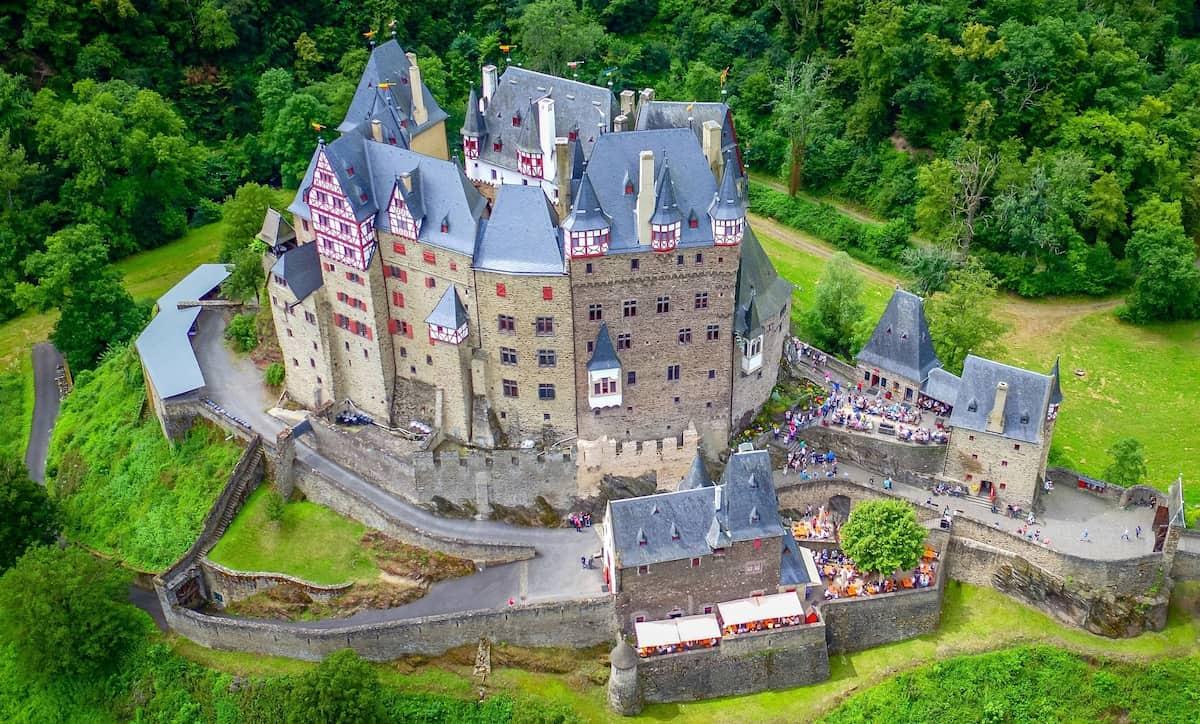
Visitor Information:
- Open April through November, 9:30 AM to 5:30 PM
- Guided tours available in English at specific times
- Photography permitted in exterior areas only
- Restaurant on-site serving traditional German cuisine
3. Cochem & Reichsburg Castle
Moselle Gem. My day trip to Cochem, 50 kilometers southwest of Koblenz, introduced me to one of the most charming old towns along the Moselle River. The medieval center, with its half-timbered houses and narrow cobblestone streets, creates a perfect backdrop for the imposing Reichsburg Castle that towers above on a 100-meter hill.
Imperial History. Reichsburg Castle (entry €7/$7.60) offers a fascinating glimpse into the region’s past. Originally built around 1000 AD and later owned by the Electors of Trier, the castle was destroyed by French troops in 1689. What visitors see today is a 19th-century reconstruction, but the guided tour reveals authentic medieval elements alongside neo-Gothic additions that remain worth a visit for history enthusiasts.
Wine Culture. Cochem sits at the heart of the Moselle wine region, and I couldn’t resist visiting a local Weinstube (wine tavern) to sample crisp Rieslings from nearby vineyards. For €12 ($13), I enjoyed a tasting flight of five local wines paired with regional cheese at Weingut Rademacher, located in the old town near the historic market square.
River Experiences. The best way to see Cochem is from the water. I joined a 1-hour Moselle cruise (€10/$10.85) that provided great views of the castle perched dramatically above the river. The boat sailed past several small villages and steep terraces of vineyards that show why the Mosel Valley is one of the most romantic river landscapes in western Germany.
| Day Trip Options | Distance from Koblenz | Travel Time | Entry Fee (€) | Entry Fee (USD) |
|---|---|---|---|---|
| Marksburg Castle | 20 km | 30 min (train) | 12€ | $13.00 |
| Burg Eltz | 35 km | 45 min (train + hike) | 11€ | $12.00 |
| Cochem & Reichsburg | 50 km | 50 min (train) | 7€ | $7.60 |
| Trier (Roman City) | 100 km | 1.5 hours (train) | Various sites | Various sites |
⭐ Best Activities
- Cochem: Scenic Boat Cruise 1-Hour Roundtrip: Enjoy a relaxing 1-hour scenic boat cruise roundtrip from Cochem. Admire the picturesque views of the Moselle River, charming riverside villages, and the iconic Reichsburg Castle perched high above Cochem. A perfect way to experience the beauty of the Moselle Valley.
4. Trier – Germany’s Oldest City
Roman Heritage. My visit to Trier, Germany’s oldest city founded in 16 BC, was like stepping back 2,000 years in time. Located about 100 kilometers southwest of Koblenz, this remarkable city boasts the highest concentration of Roman remains north of the Alps. The massive Black Gate (Porta Nigra) is the main landmark and best preserved Roman city gate north of the Alps.
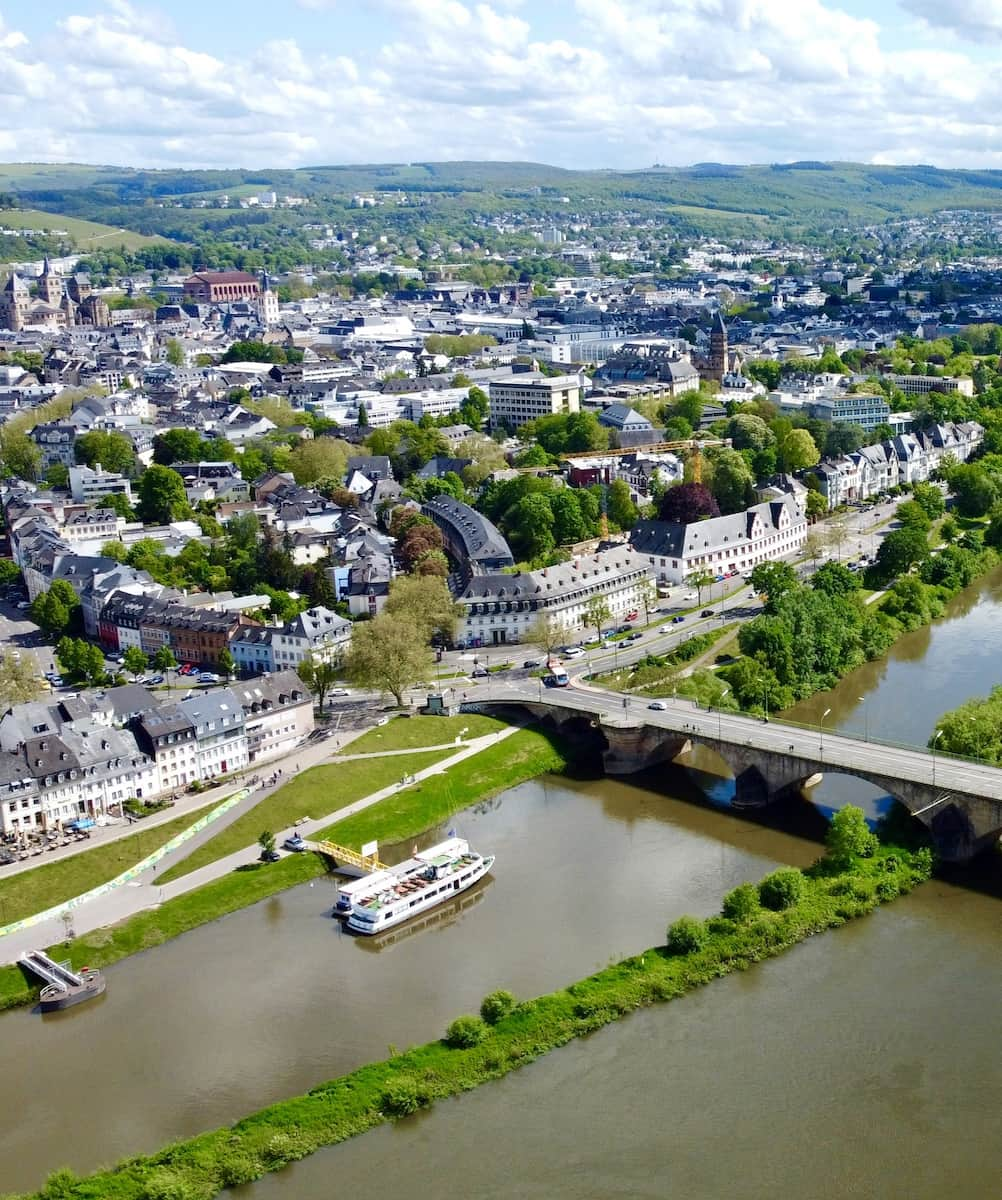
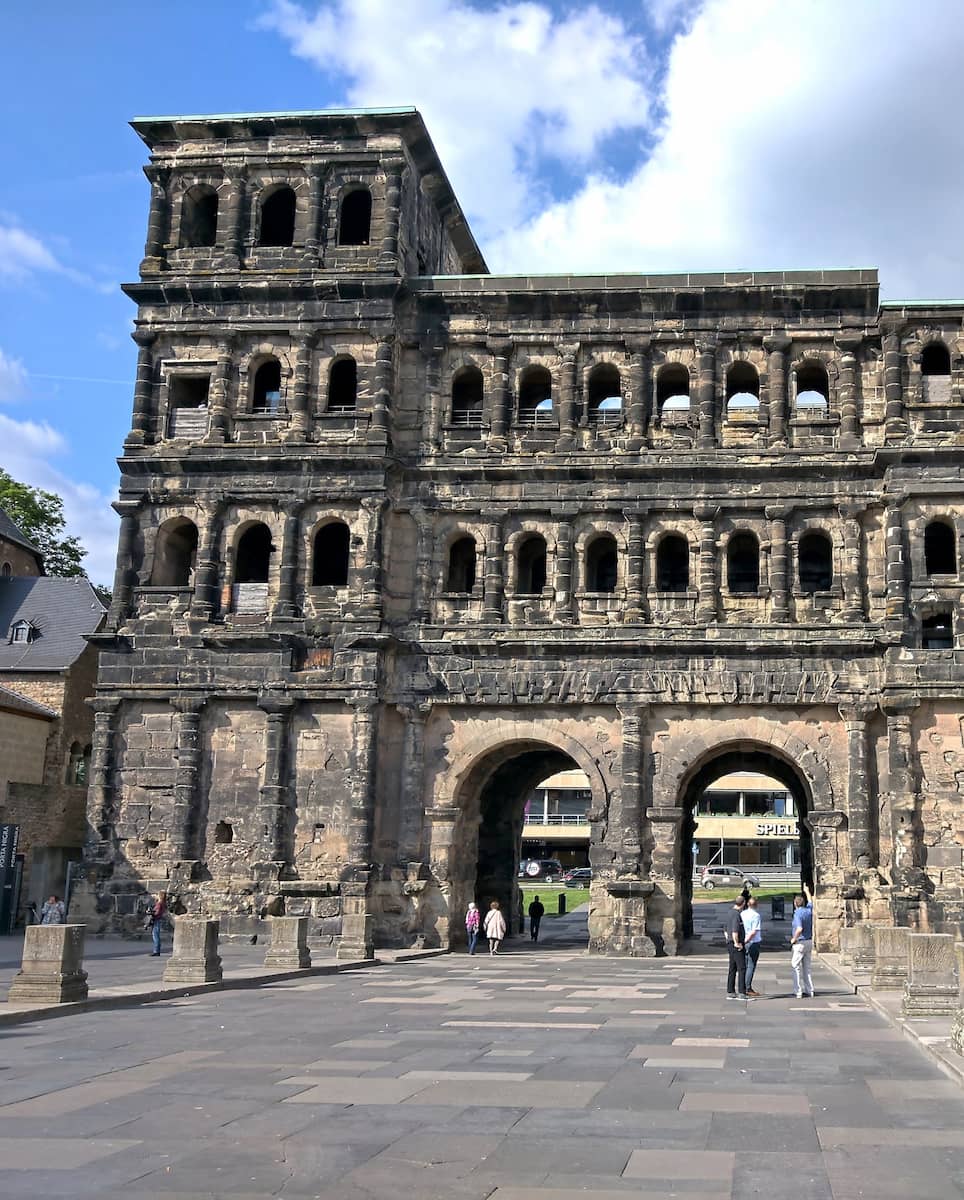
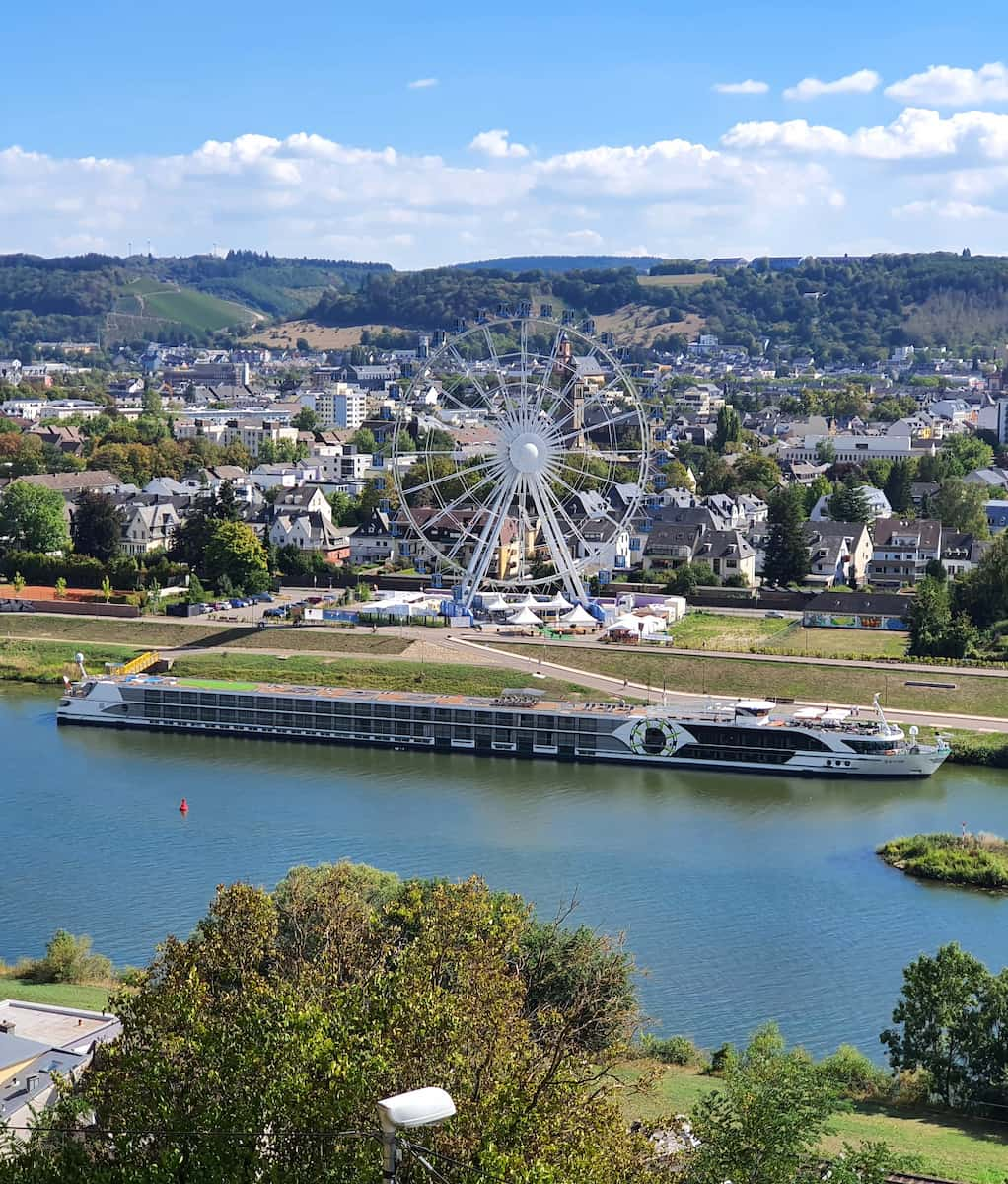
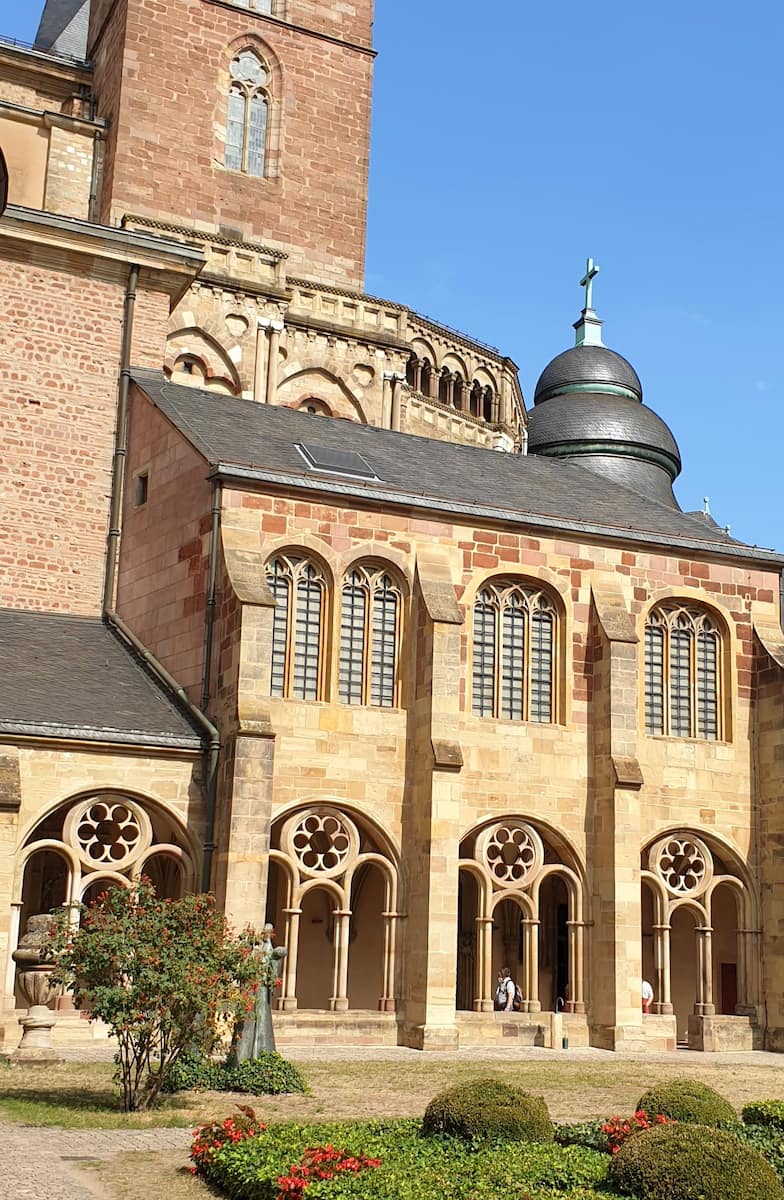
UNESCO Treasures. Trier houses an impressive nine UNESCO World Heritage sites within its compact center. I was particularly moved by the Constantine Basilica, an enormous Roman throne hall later converted to a church. Its soaring 30-meter ceiling creates an atmosphere of imperial grandeur that has remained unchanged since the 4th century.
Cathedral History. The Cathedral of Trier (Dom St. Peter) impressed me with its 1,700-year history, making it the oldest church in Germany. Inside, I viewed the Holy Tunic, said to be the robe worn by Christ during crucifixion, which was once protected at Ehrenbreitstein Fortress near Koblenz. The adjacent Liebfrauenkirche (Church of Our Lady) represents one of Germany’s earliest Gothic churches.
Cultural Experiences. Beyond Roman history, Trier offers charming squares like the Hauptmarkt (Main Market), where I enjoyed coffee at a café housed in a building dating to 1663. The city’s connection to Karl Marx, who was born here in 1818, is commemorated at his birthplace museum (€5/$5.40), which provides fascinating insights into the philosopher’s early life and influences.
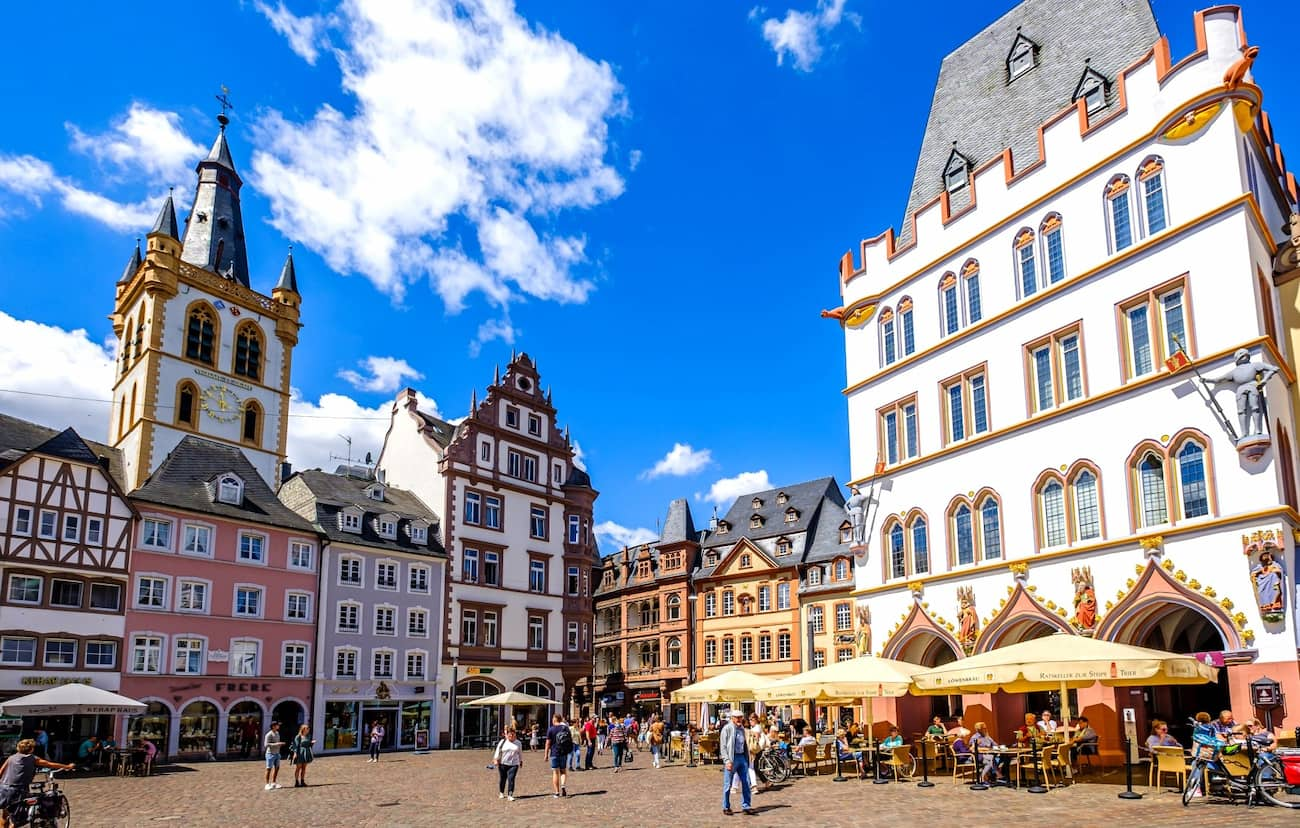
Travel Tips:
- Direct regional trains run from Koblenz to Trier hourly (€24/$26 one-way)
- The Trier Card (€14.50/$15.75) offers entry to multiple museums and public transport
- Allow a full day to explore the main sites
- Consider staying overnight to experience the illuminated Roman monuments
| Trier Attractions | Entry Fee (€) | Entry Fee (USD) |
|---|---|---|
| Porta Nigra | 4€ | $4.35 |
| Imperial Baths | 4€ | $4.35 |
| Amphitheater | 4€ | $4.35 |
| Combined Ticket | 12€ | $13.00 |
| Karl Marx House | 5€ | $5.40 |
⭐ Best Tours
- Trier: Wine Walk: Embark on a delightful wine walk through Trier, experiencing the city’s rich wine culture. Sample local wines, learn about viticulture, and explore charming vineyards in and around Trier. A perfect way to combine sightseeing with wine tasting.
- Trier: Discovery Tour & Germany's Oldest Wine Cellar: Discover the highlights of Trier, including a visit to Germany’s oldest wine cellar. Explore historic sites and learn about Trier’s Roman heritage before indulging in a unique wine experience in an ancient setting. A blend of history and local flavor.
FAQ
What is Koblenz famous for?
Koblenz is renowned for its location at the confluence of the Rhine and Moselle rivers, its historic Ehrenbreitstein Fortress, the Deutsches Eck (German Corner), and its charming Old Town filled with cobblestone streets and medieval architecture.
Is Koblenz worth visiting?
Yes, Koblenz is absolutely worth visiting. It offers a mix of historical sights, cultural attractions, and stunning natural scenery. Highlights include the cable car ride to Ehrenbreitstein Fortress, exploring the Old Town, and enjoying picturesque views along the Rhine promenade.
How long do you need in Koblenz?
One to two days is sufficient to see Koblenz’s main attractions, including the Deutsches Eck, Ehrenbreitstein Fortress, and the Old Town. If you plan day trips to nearby castles or wine regions, three days would be ideal.
Is Koblenz walkable?
Yes, Koblenz is highly walkable. Most attractions, including the Old Town, churches, Rhine promenade, and cable car station, are easily accessible on foot. However, the train station is a bit farther from the Old Town.
